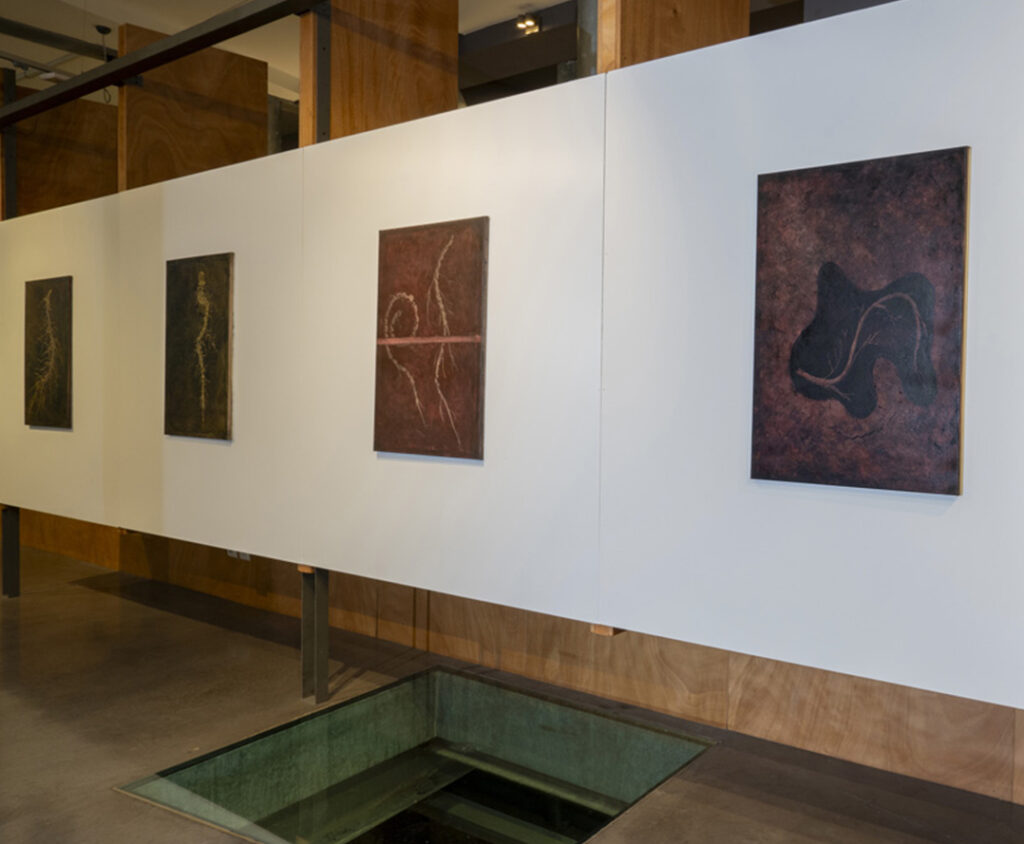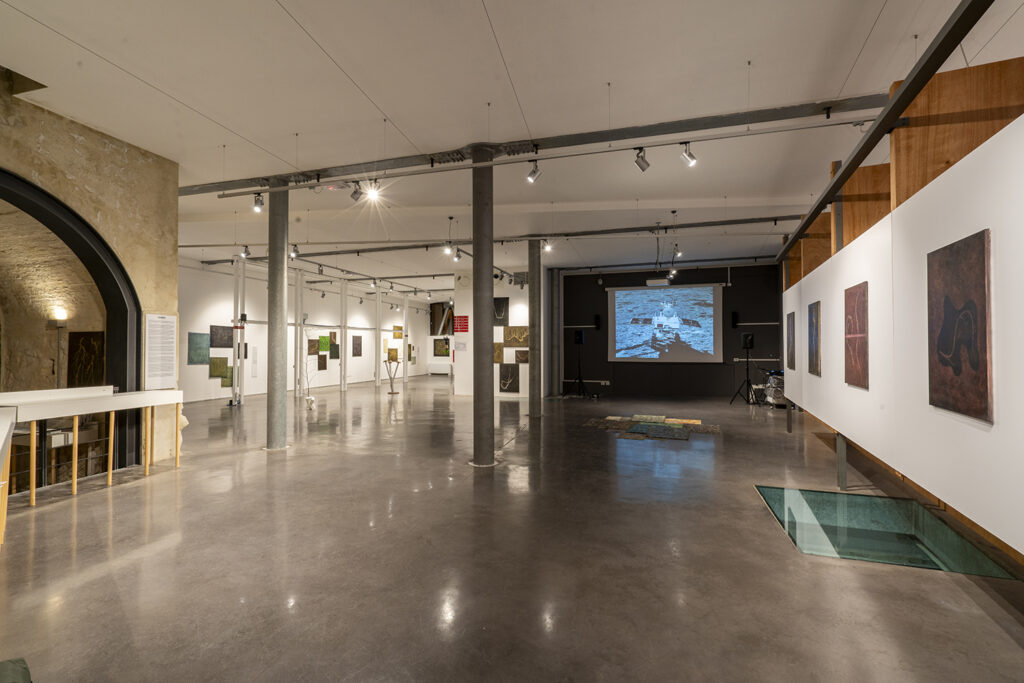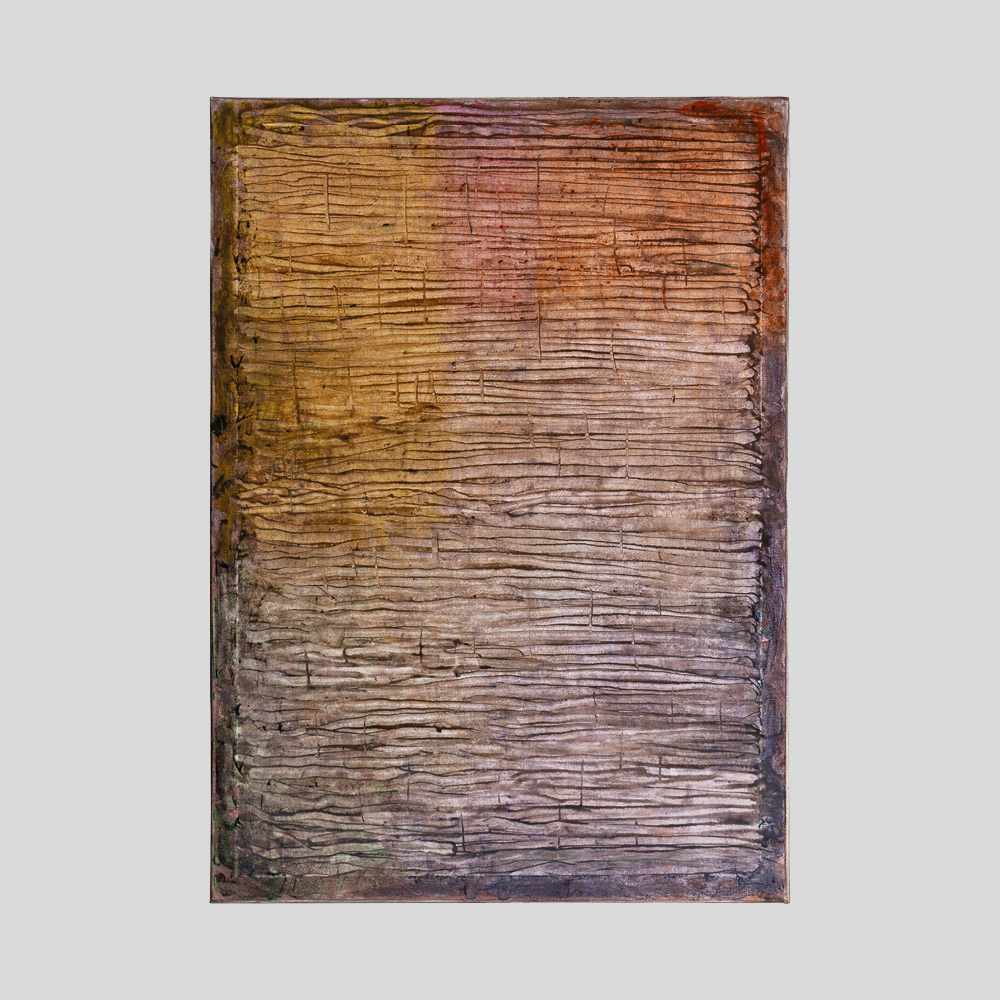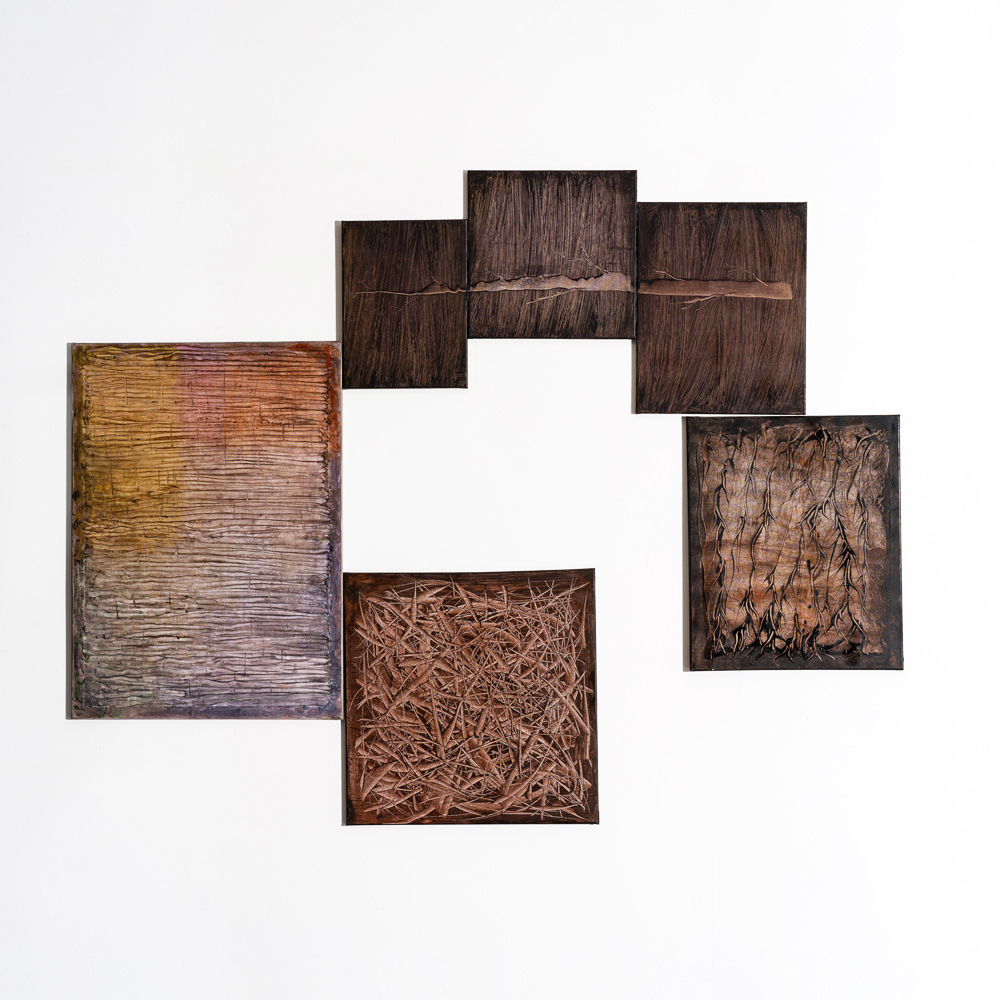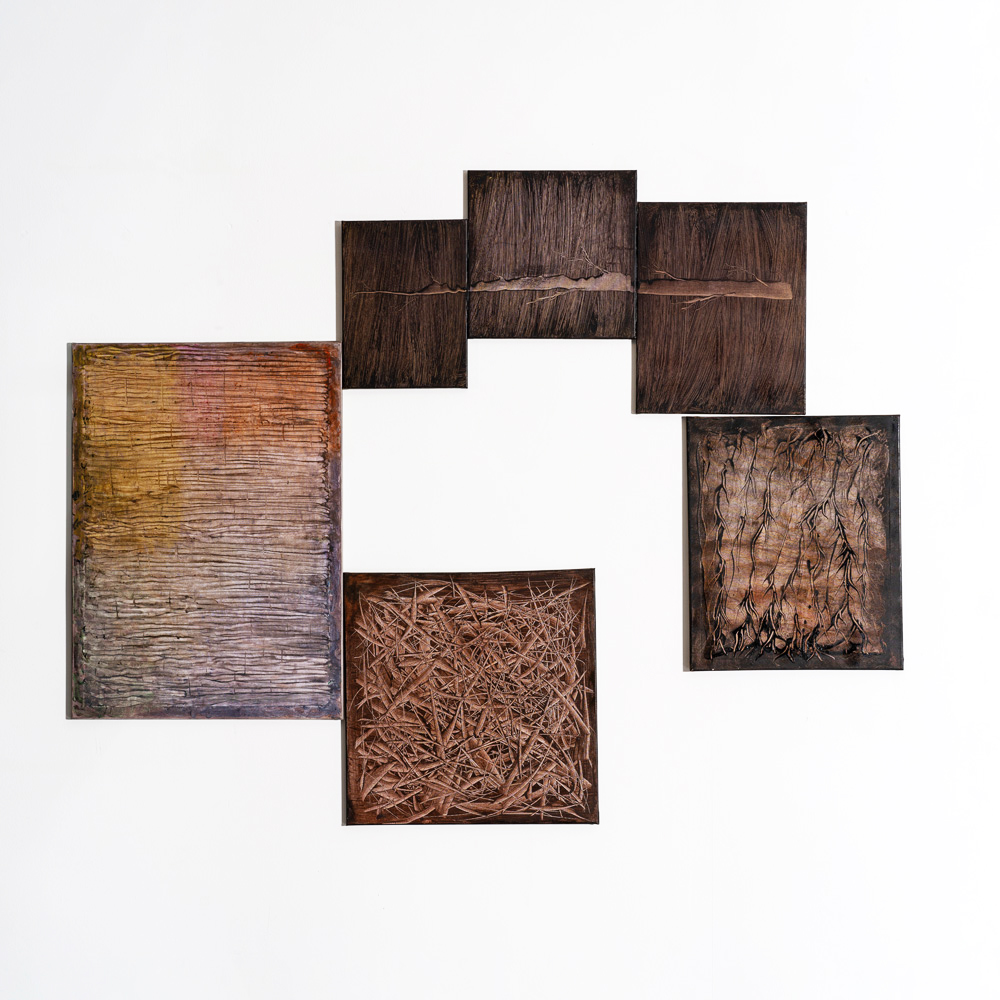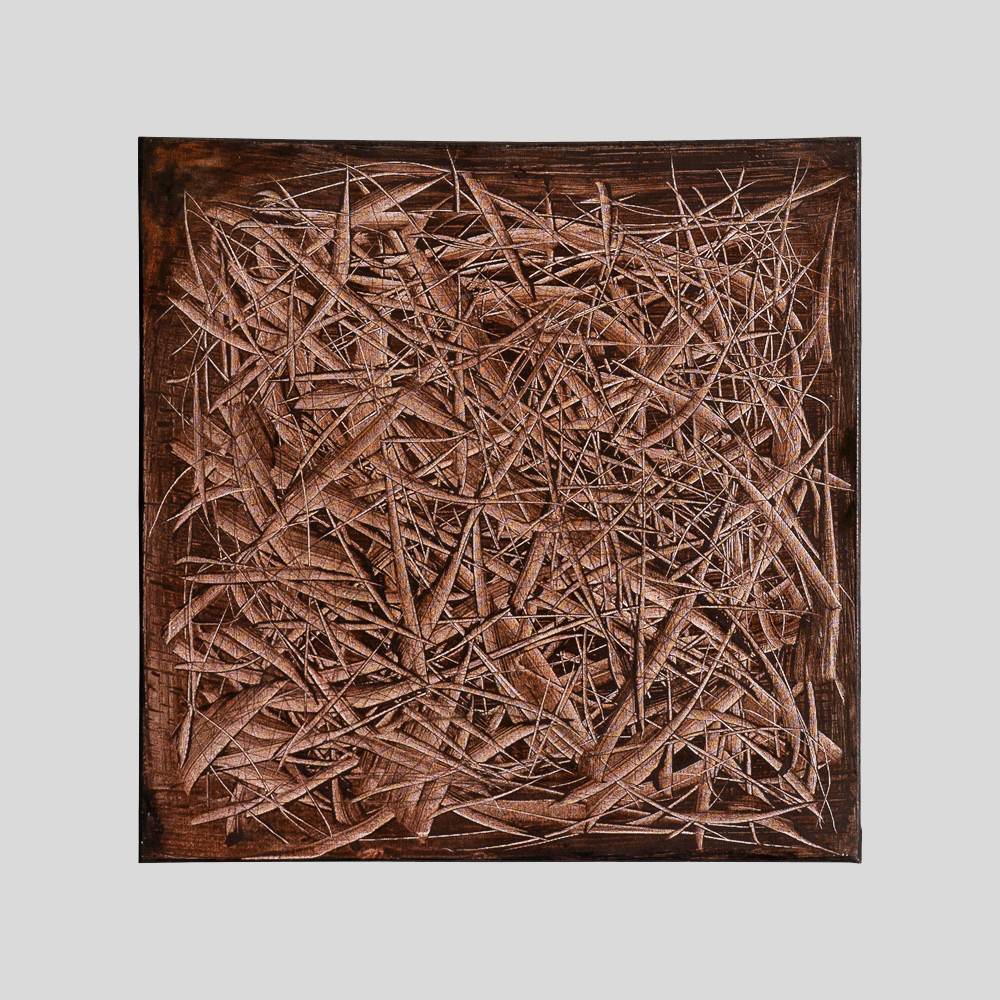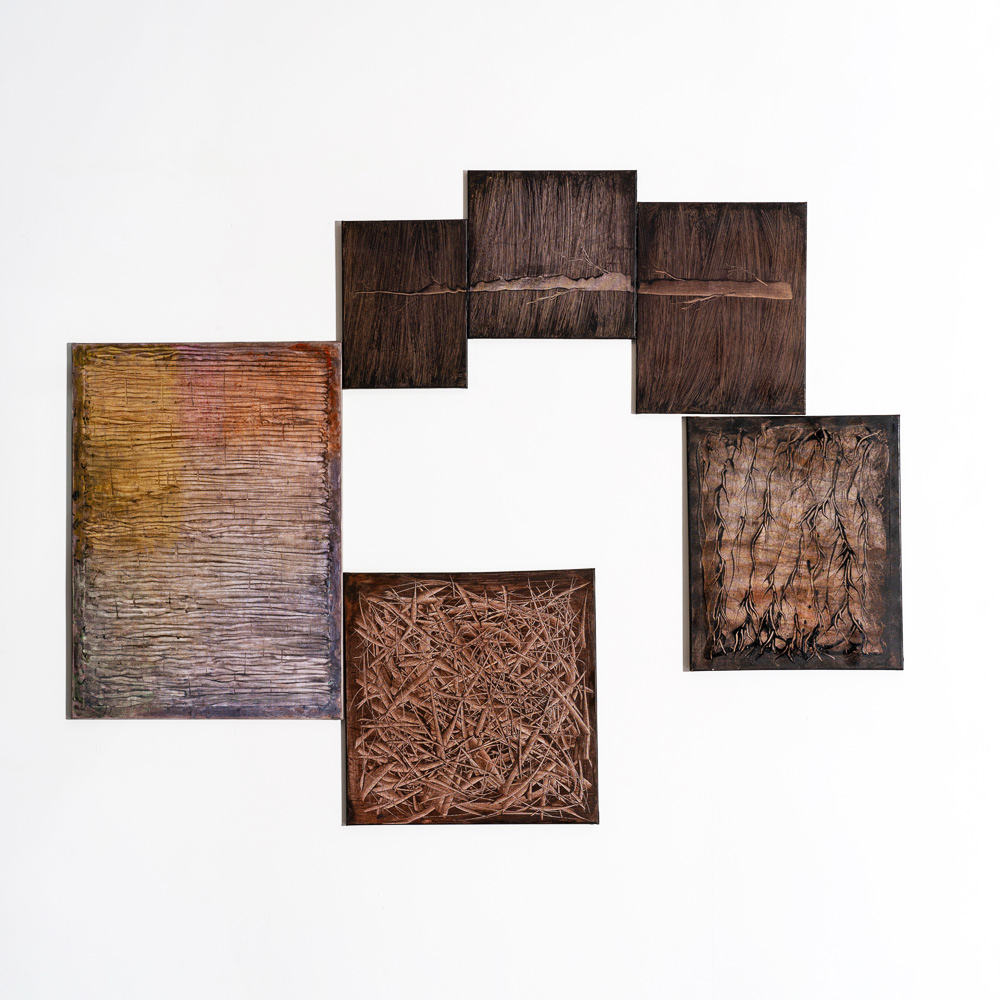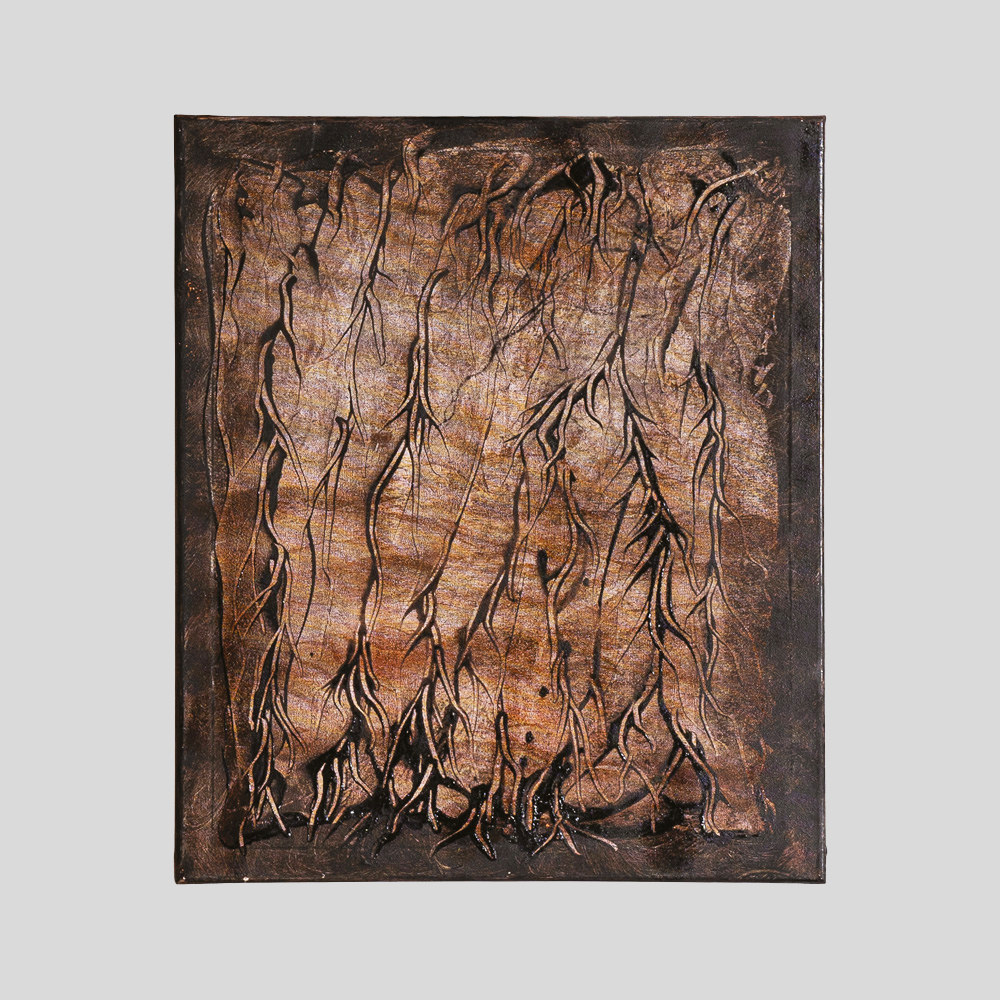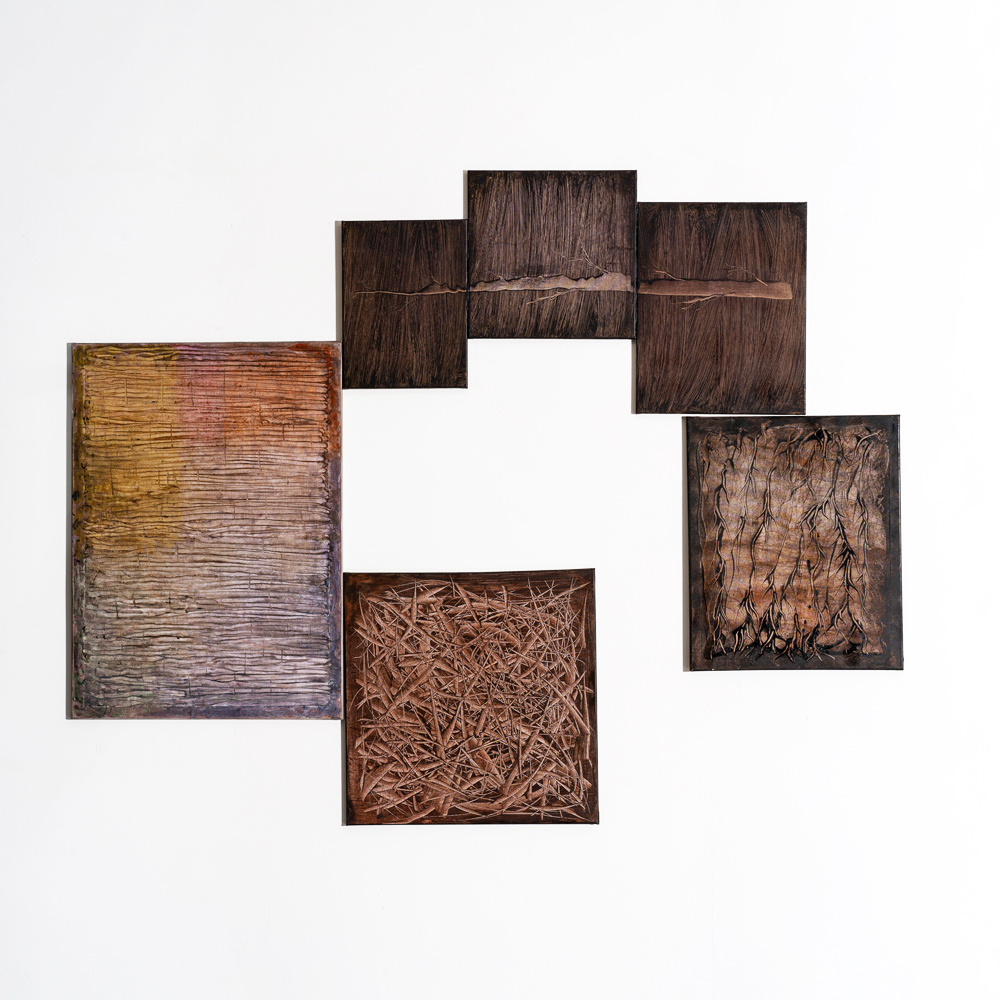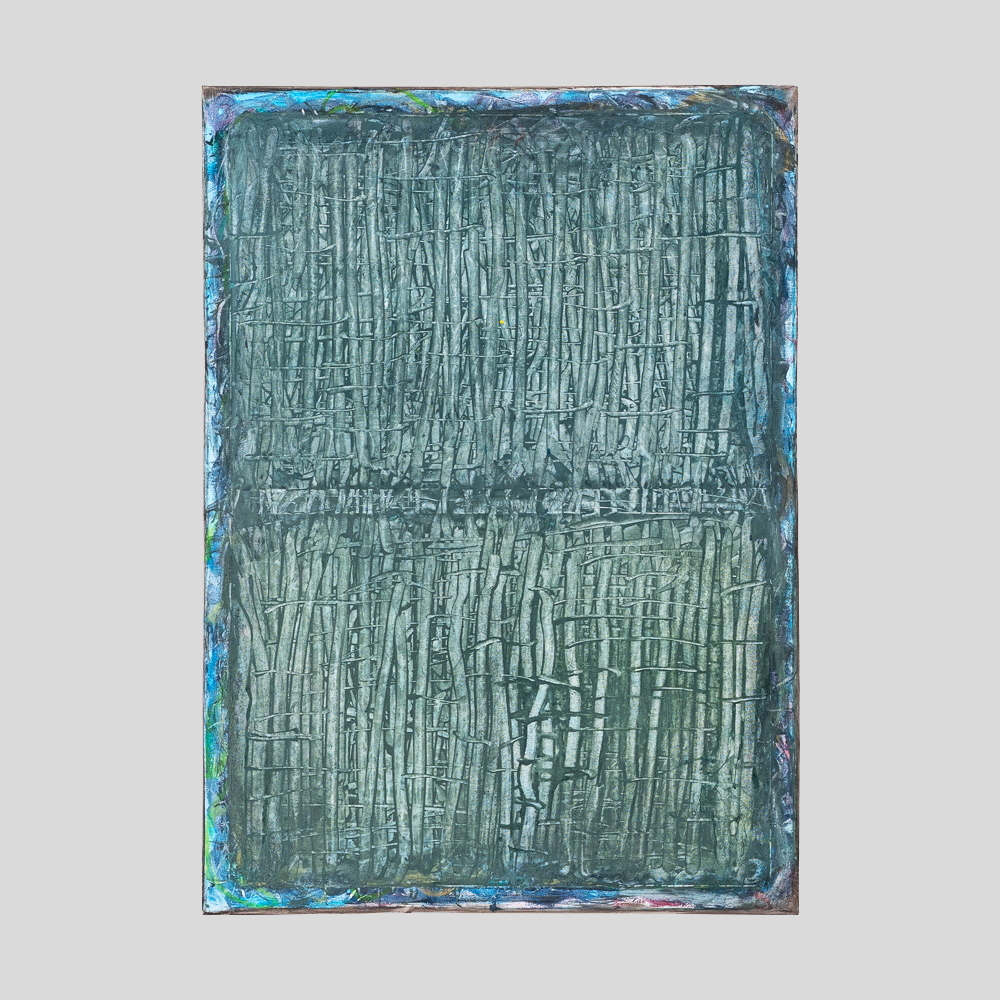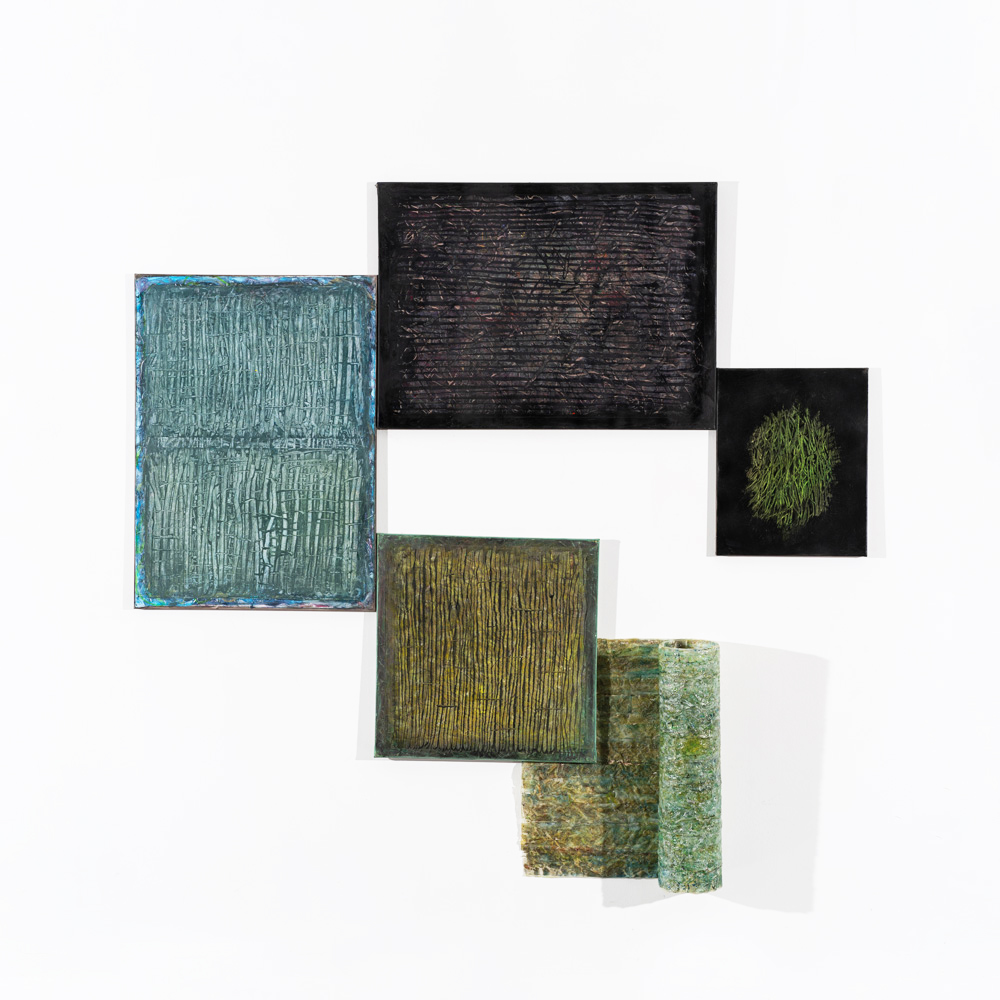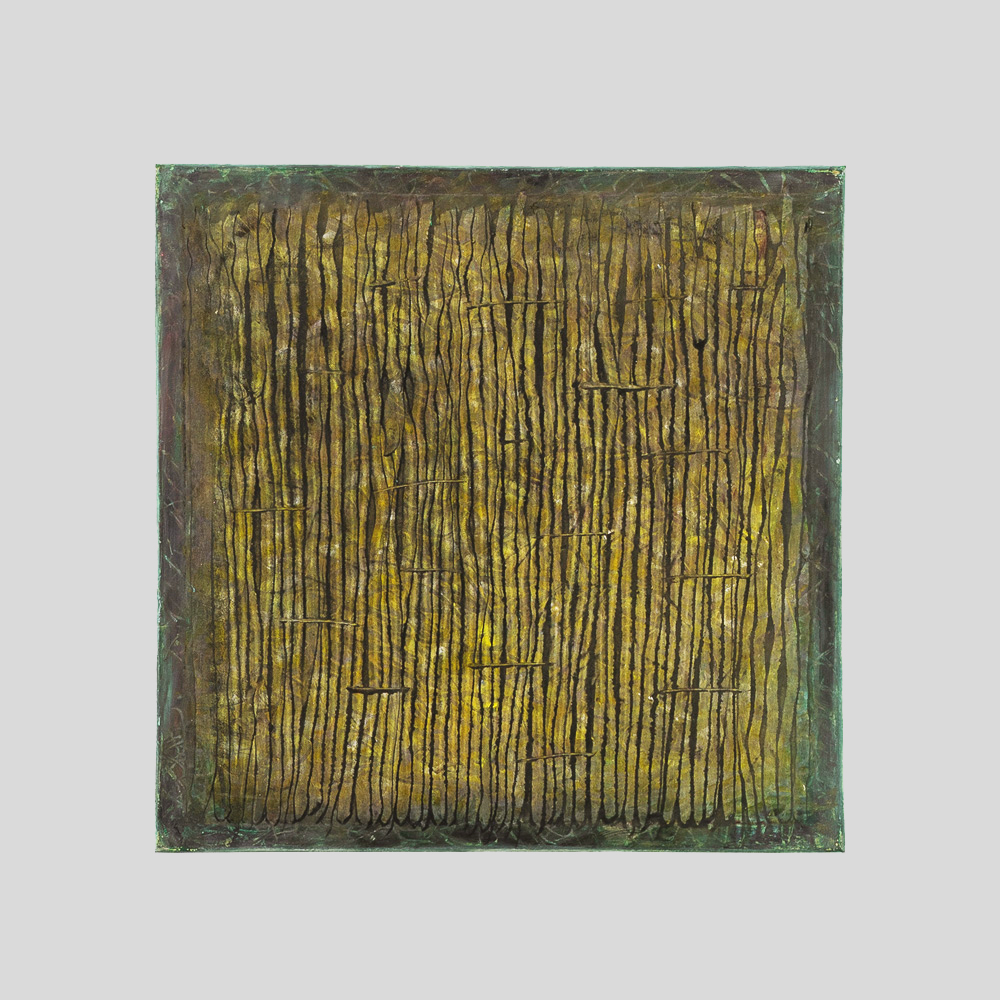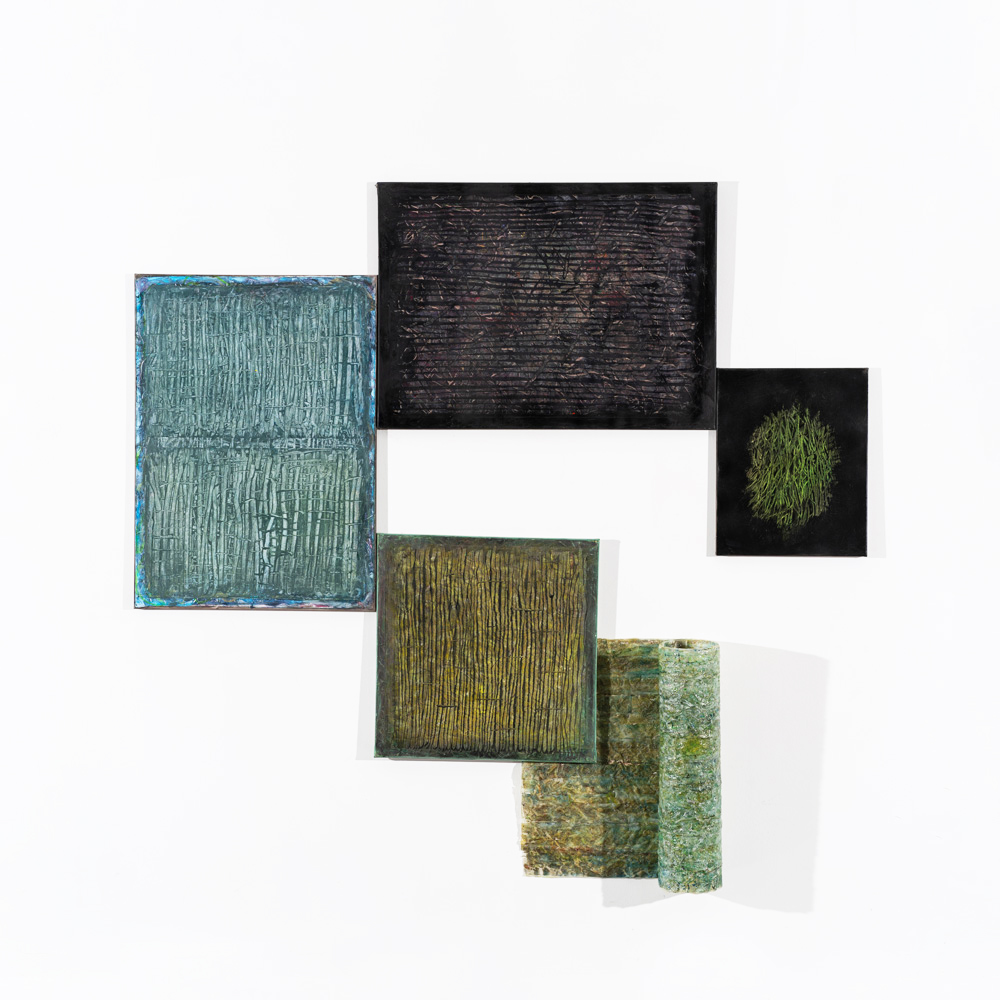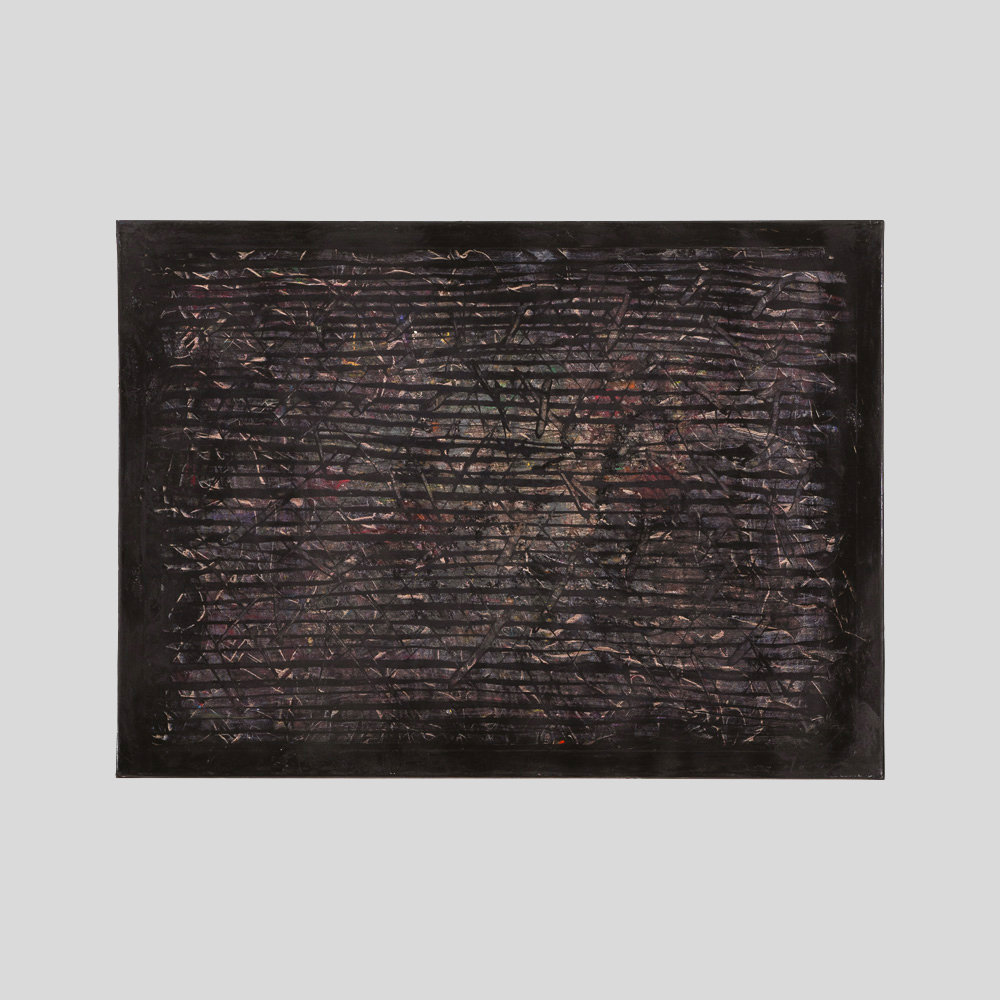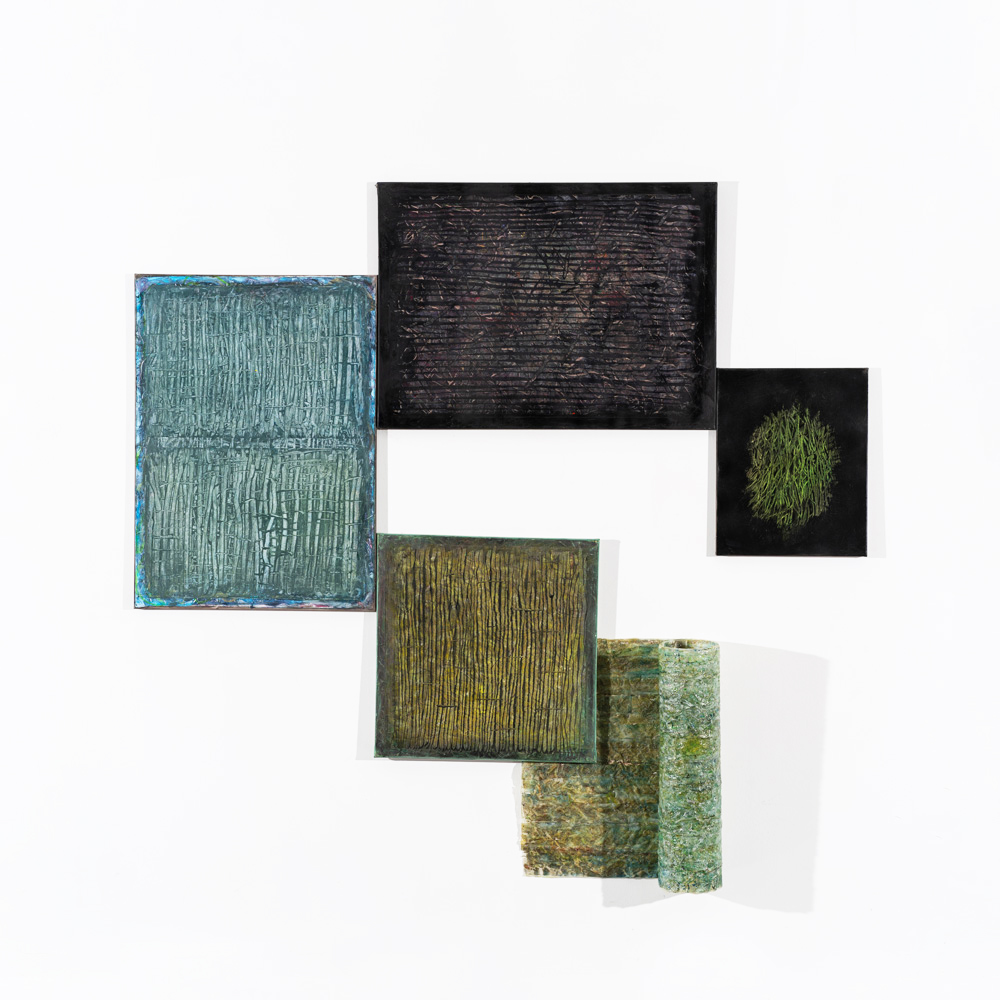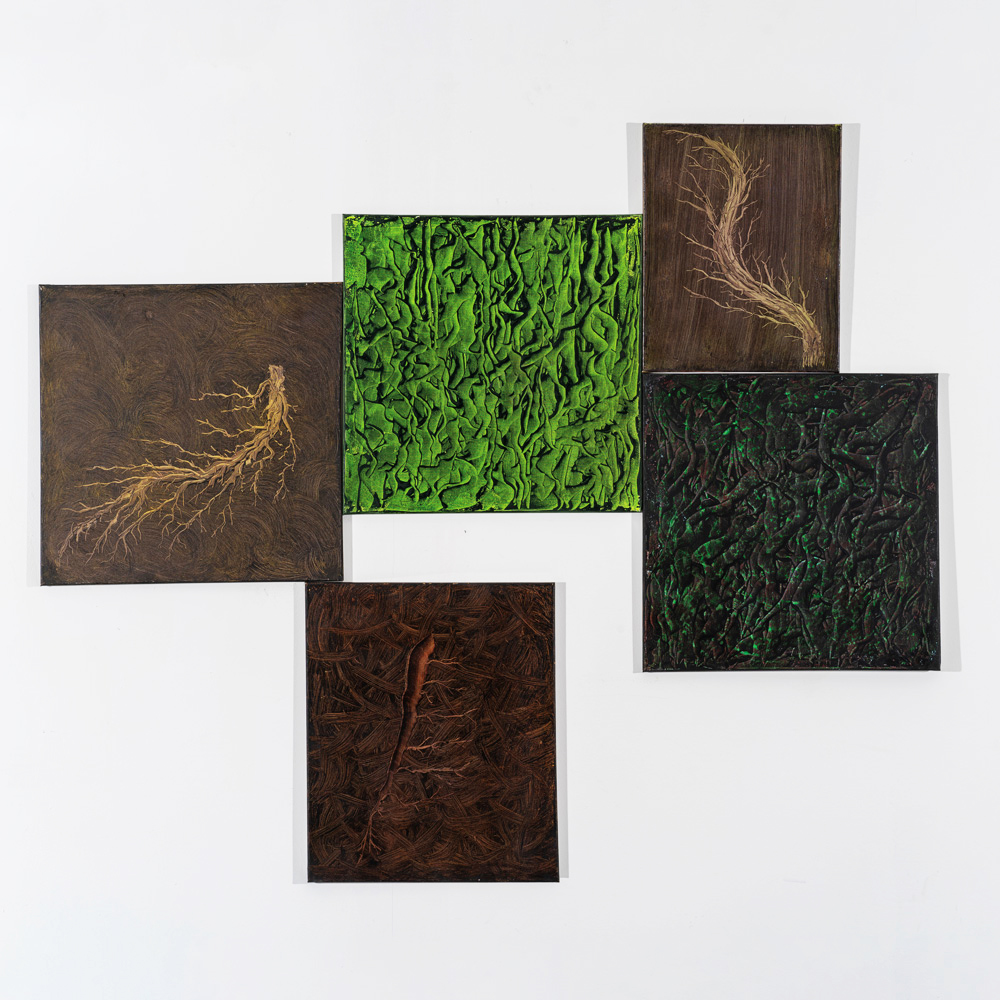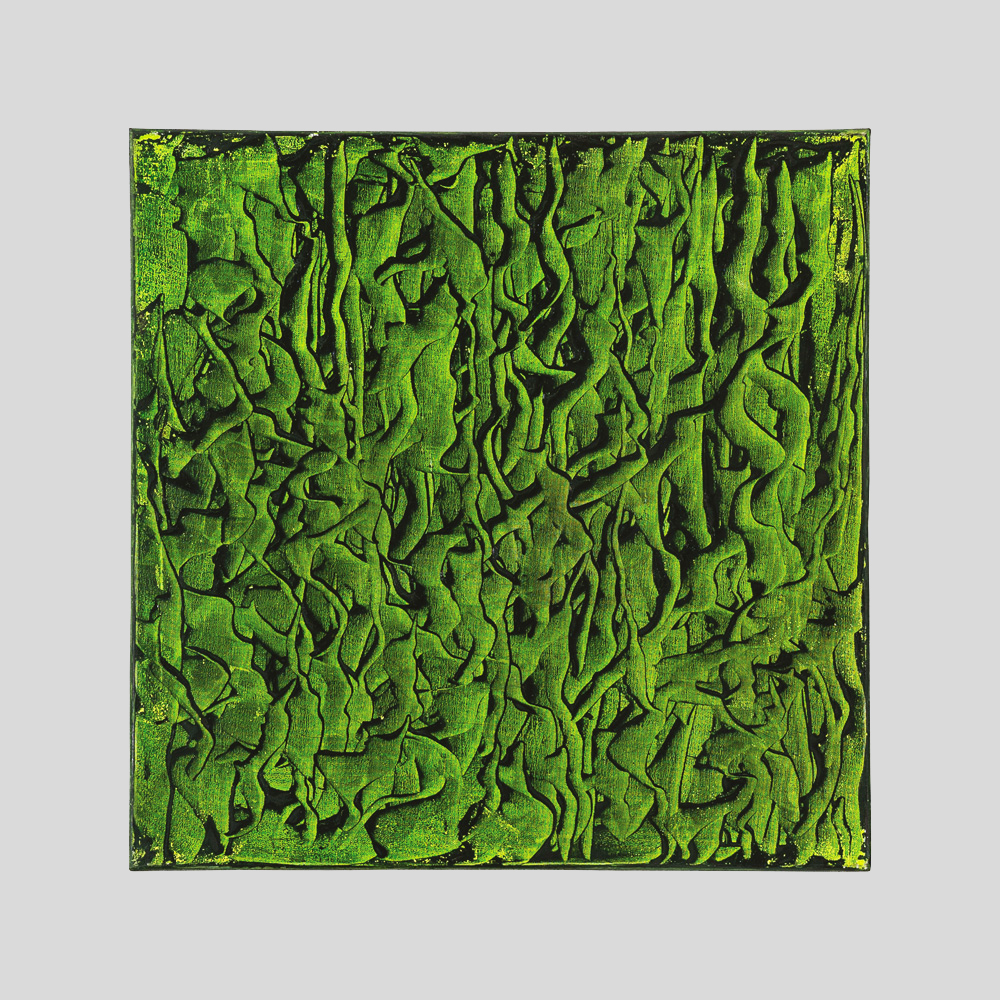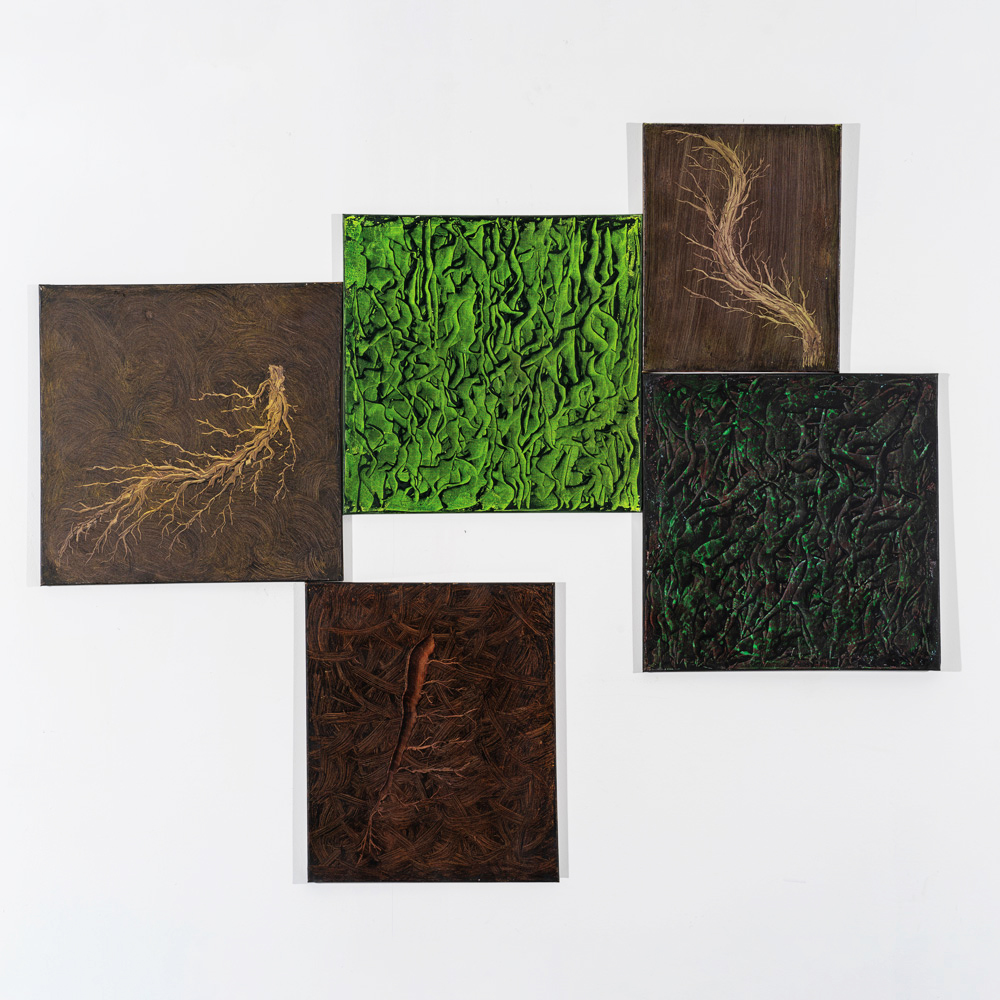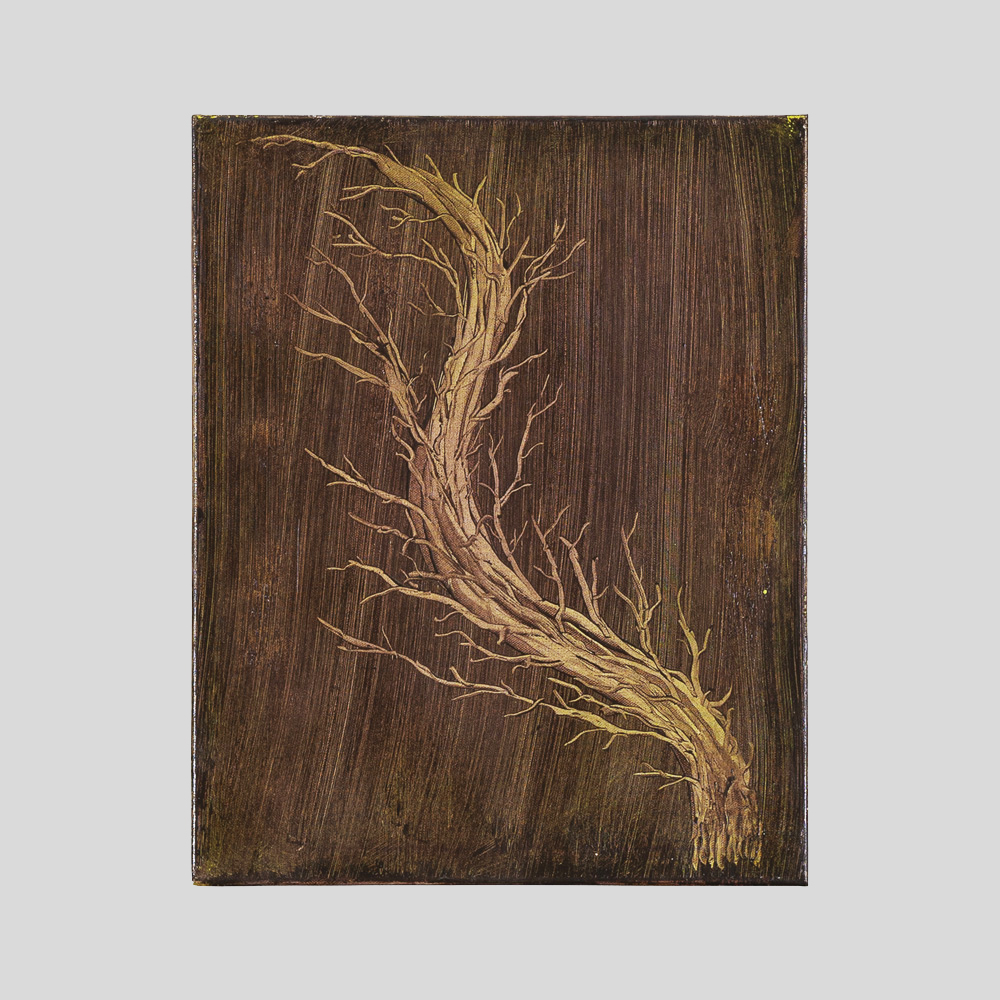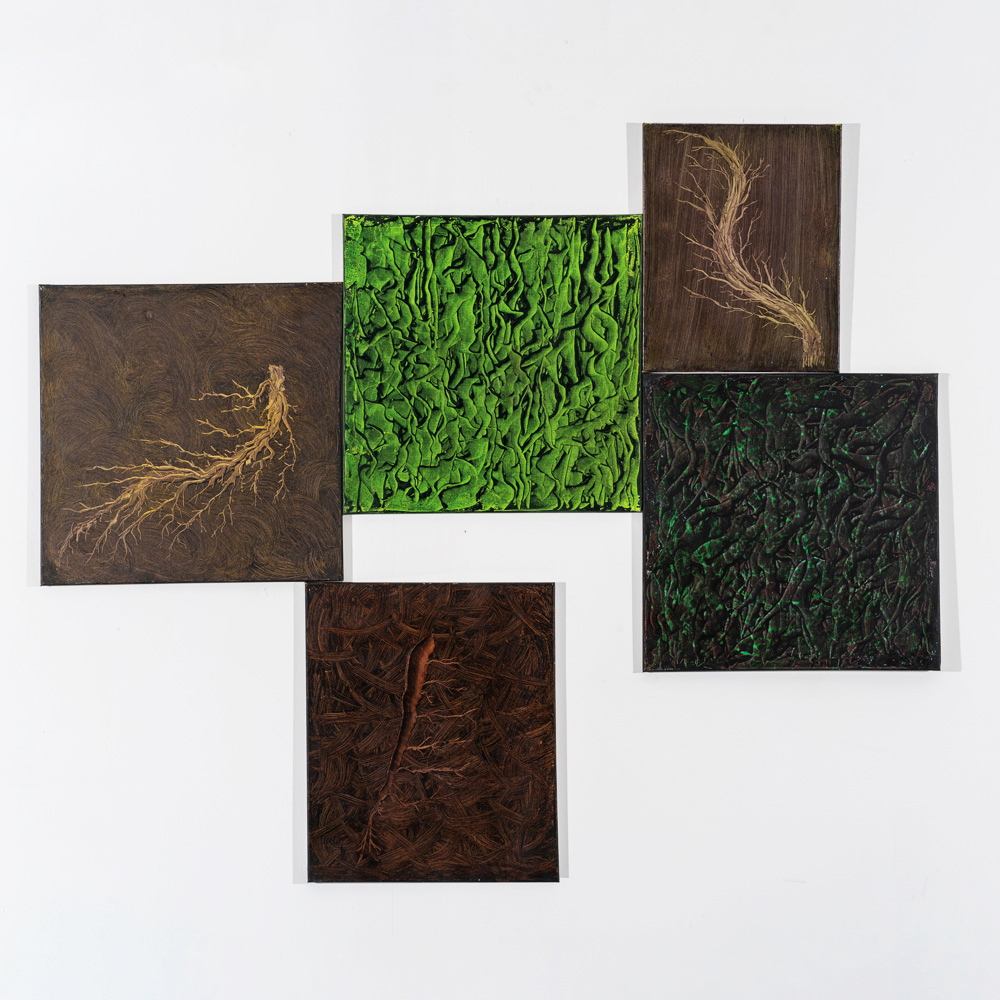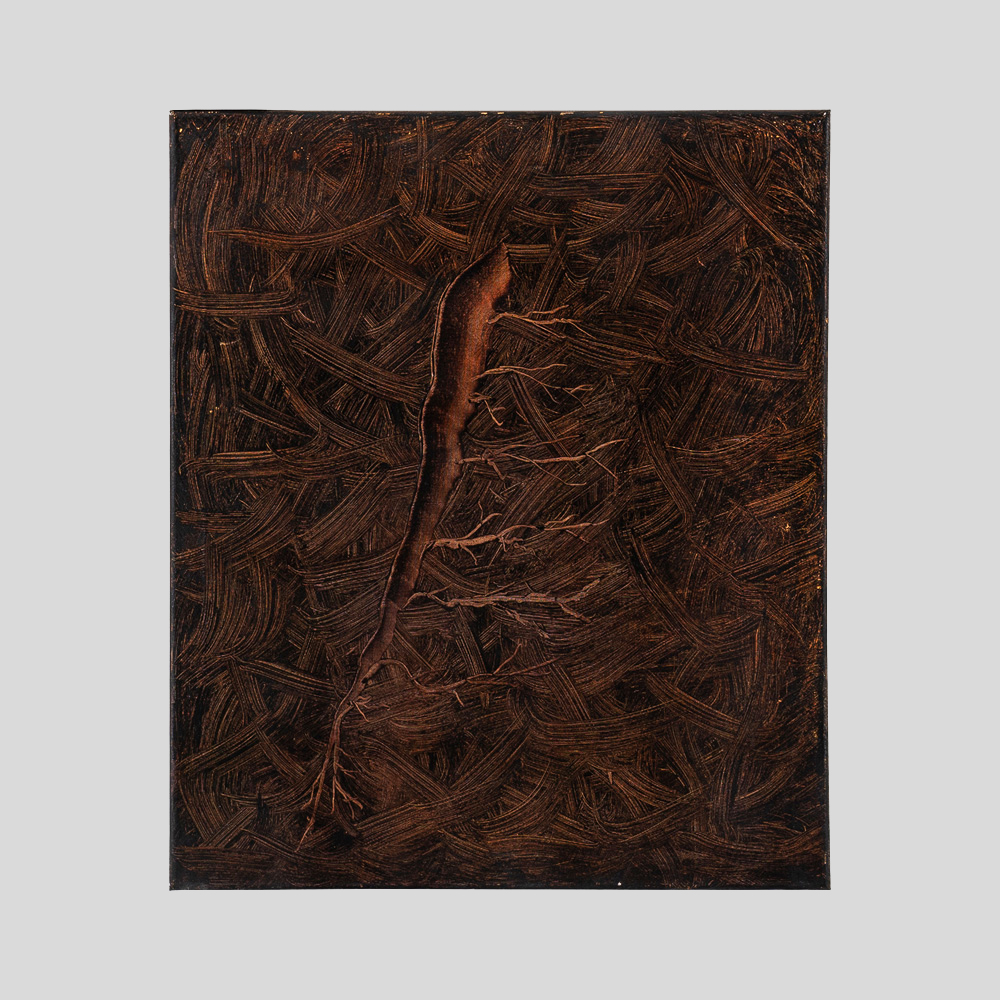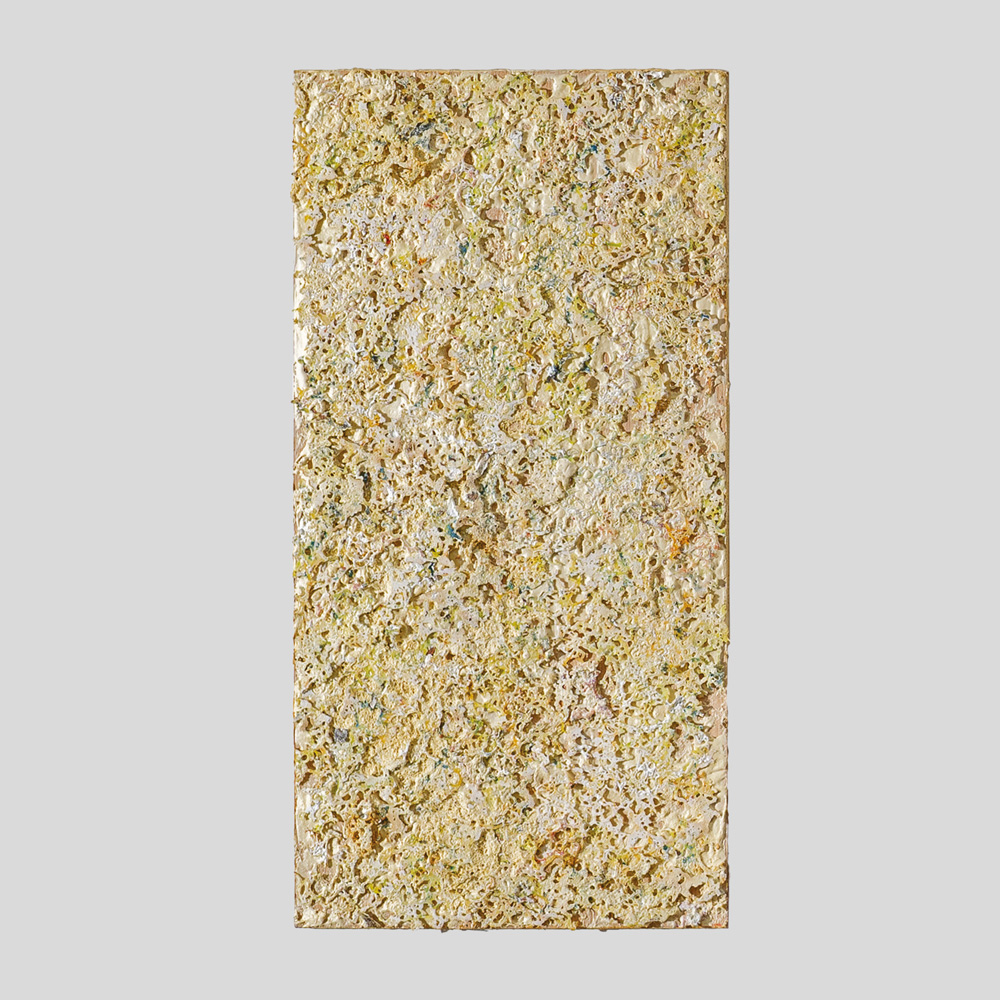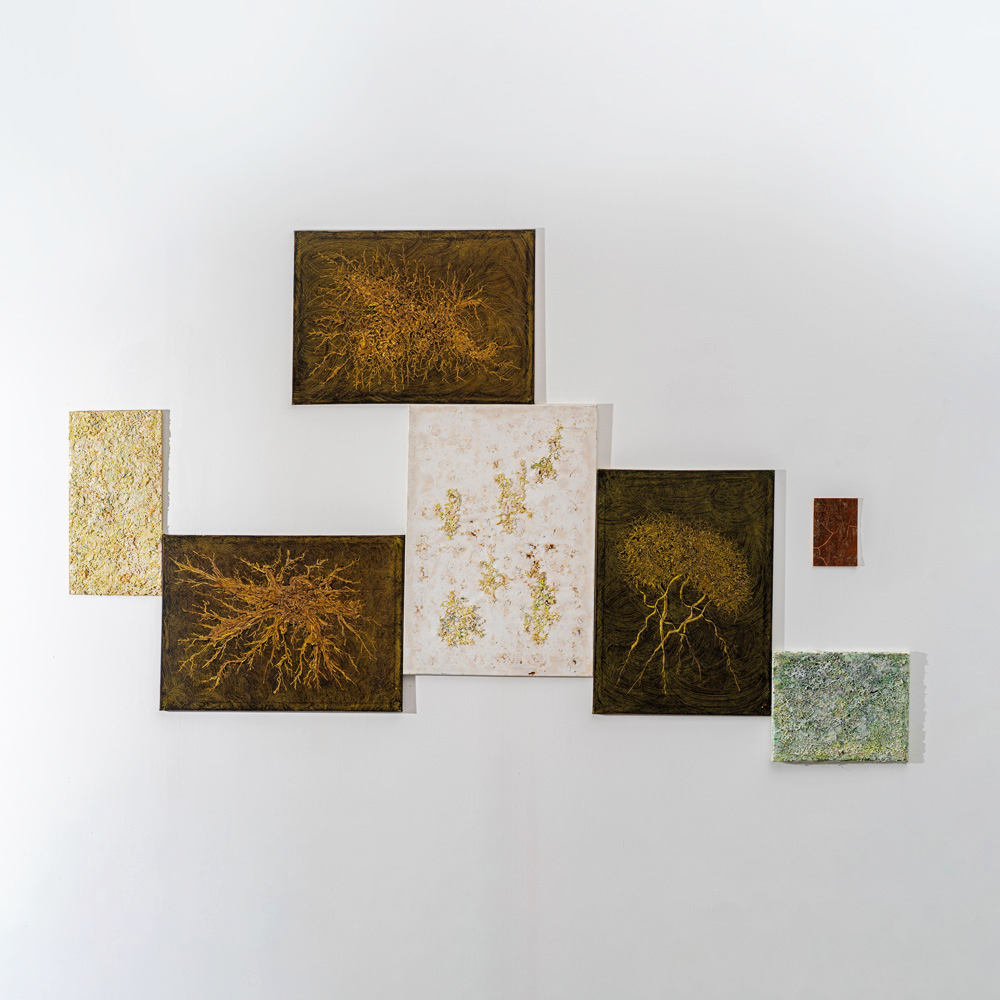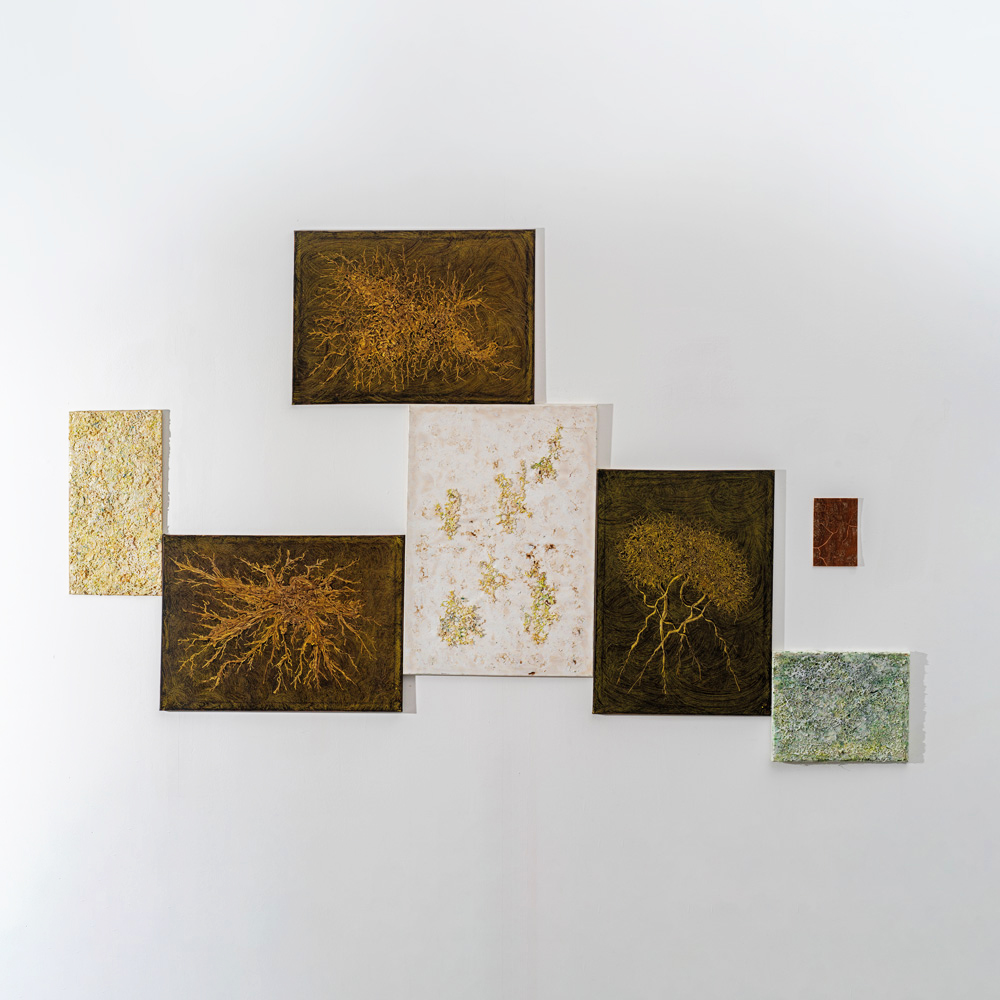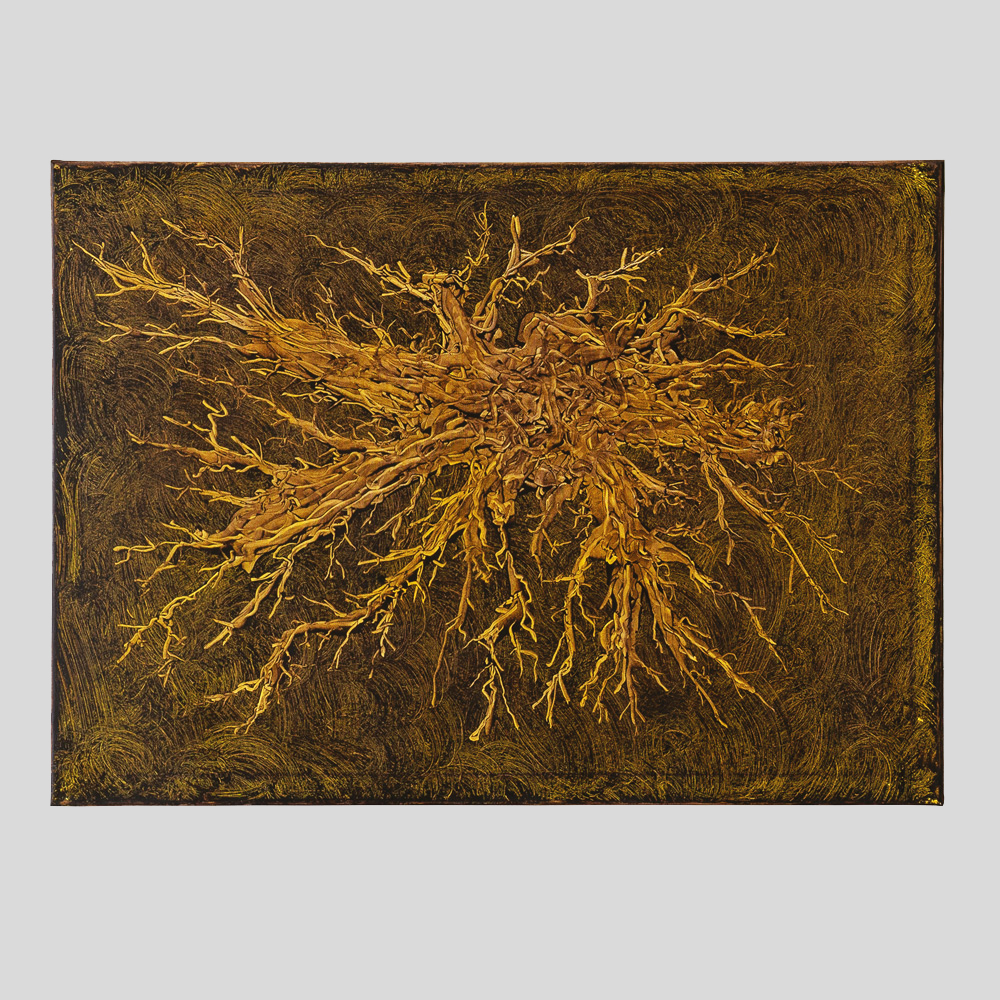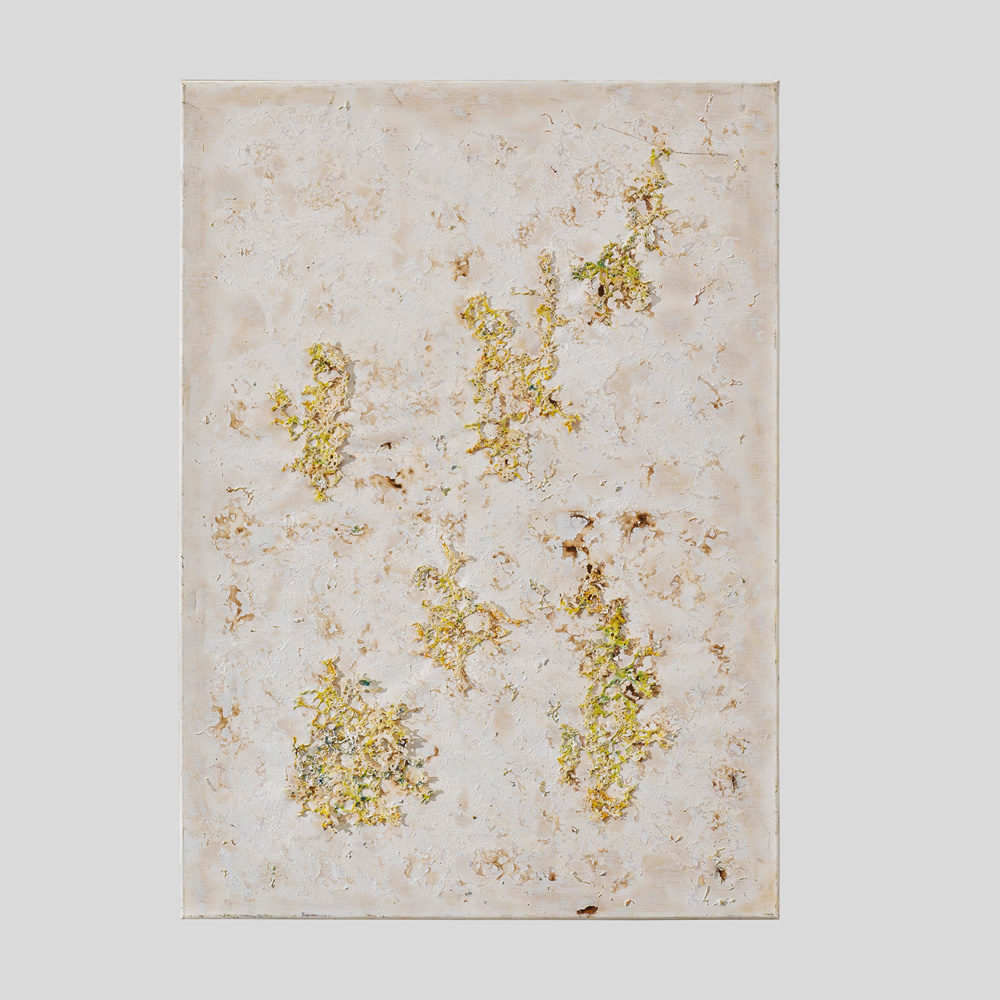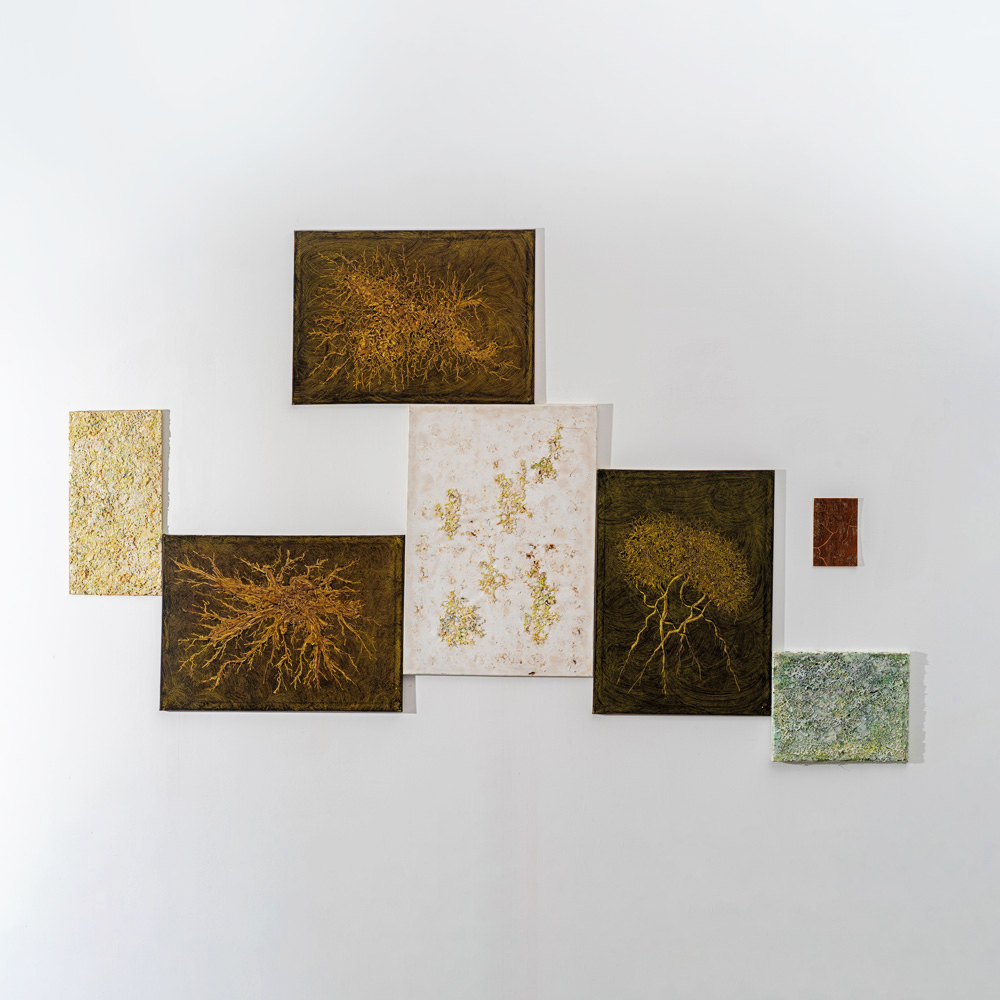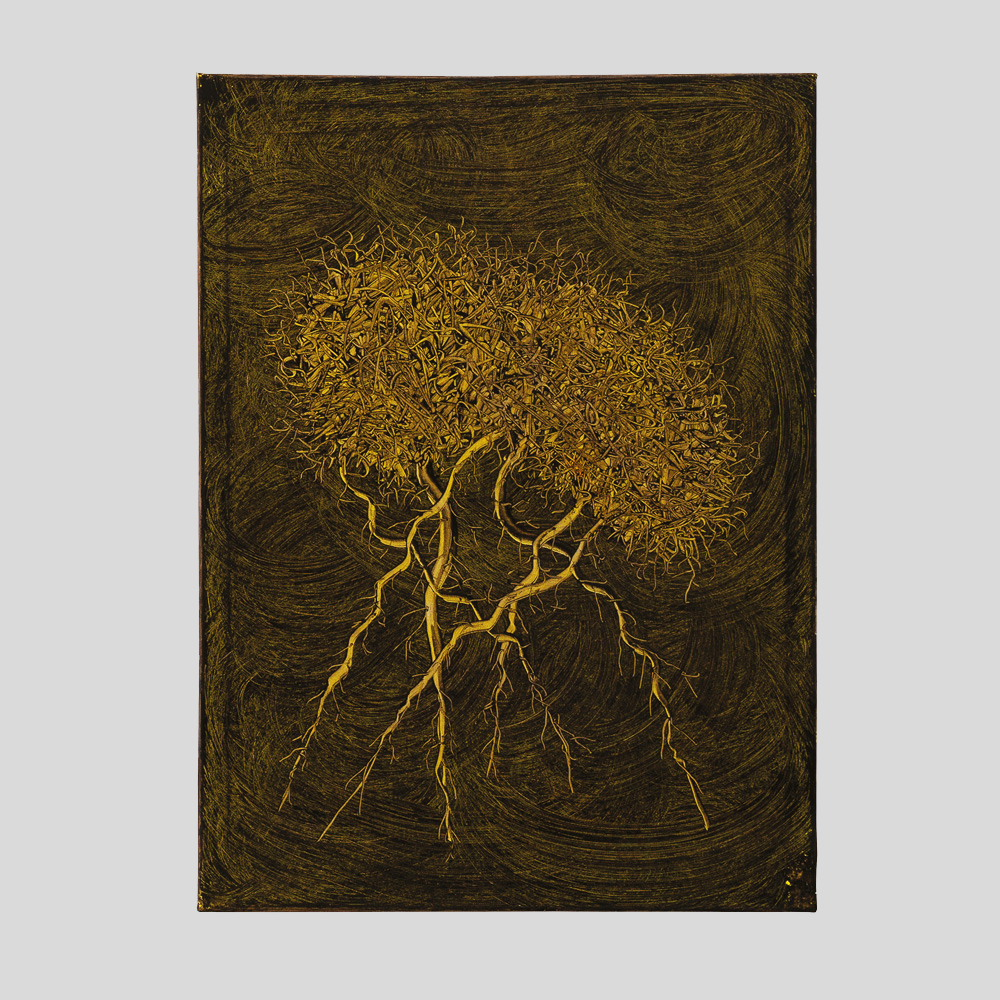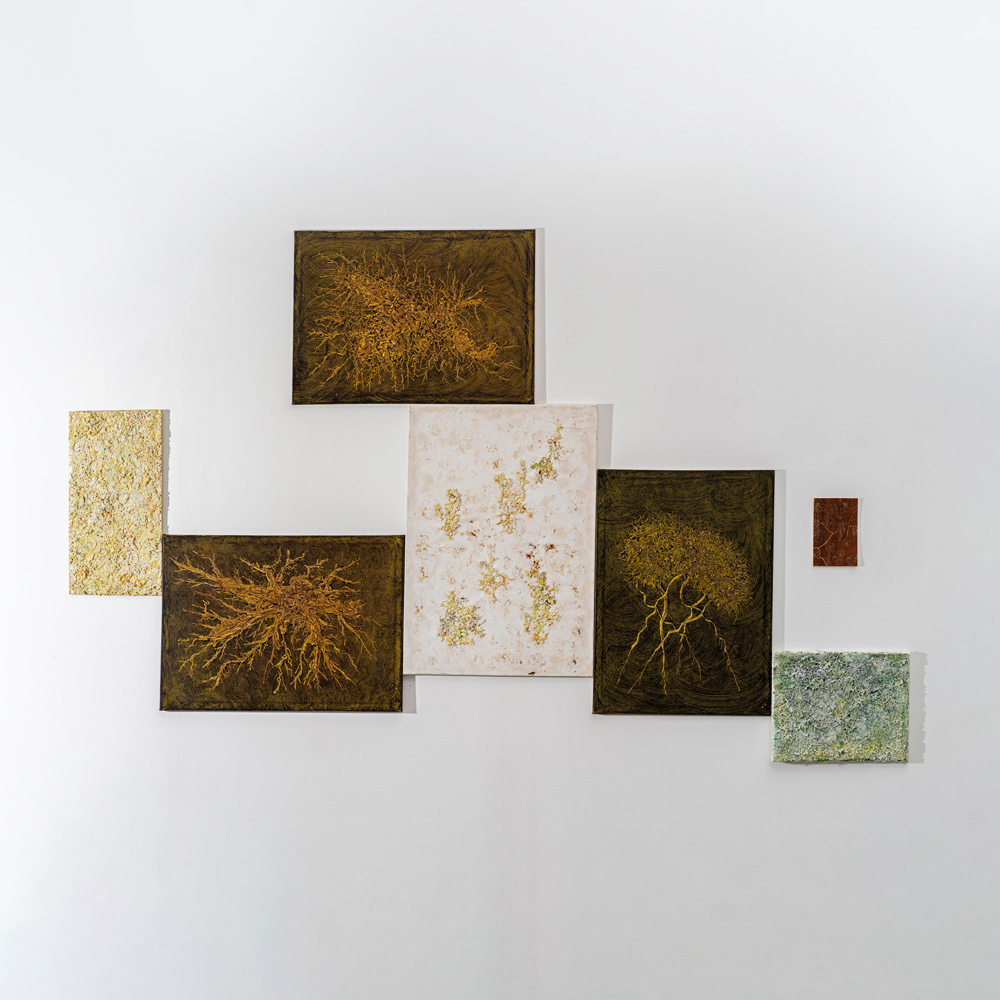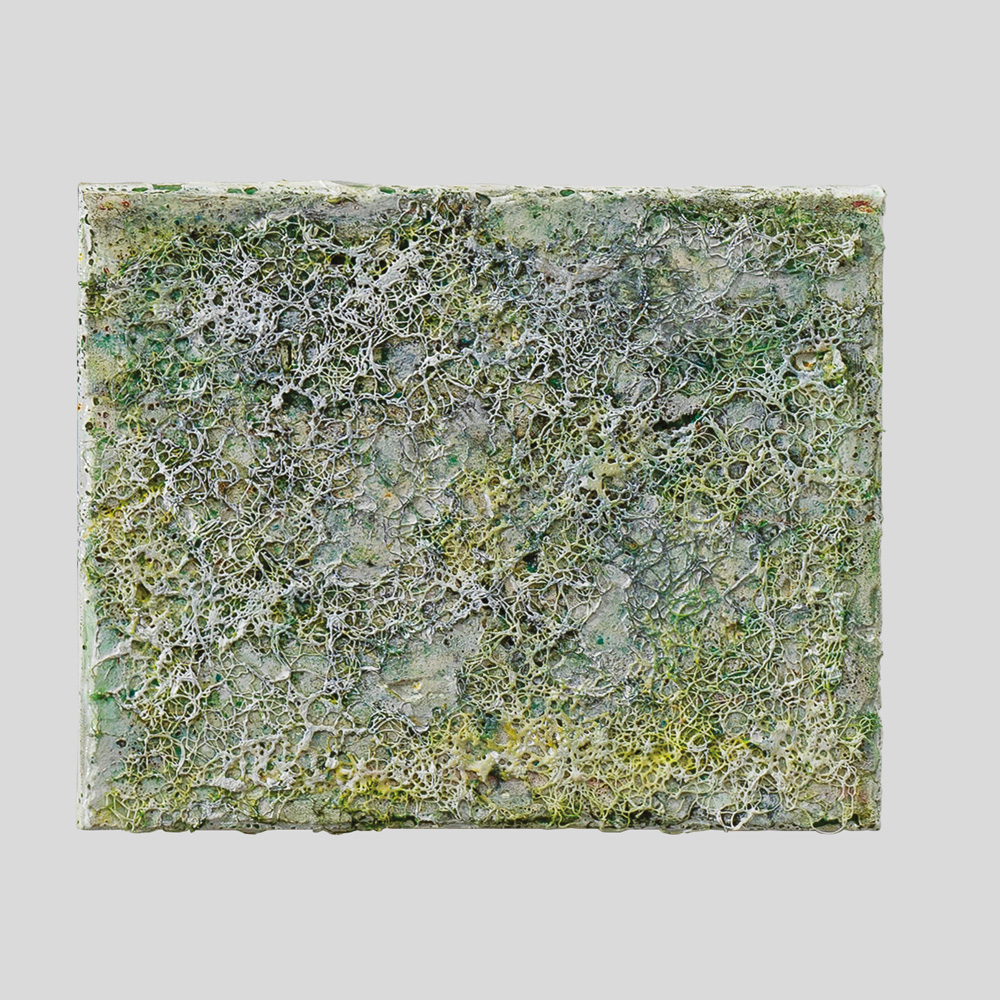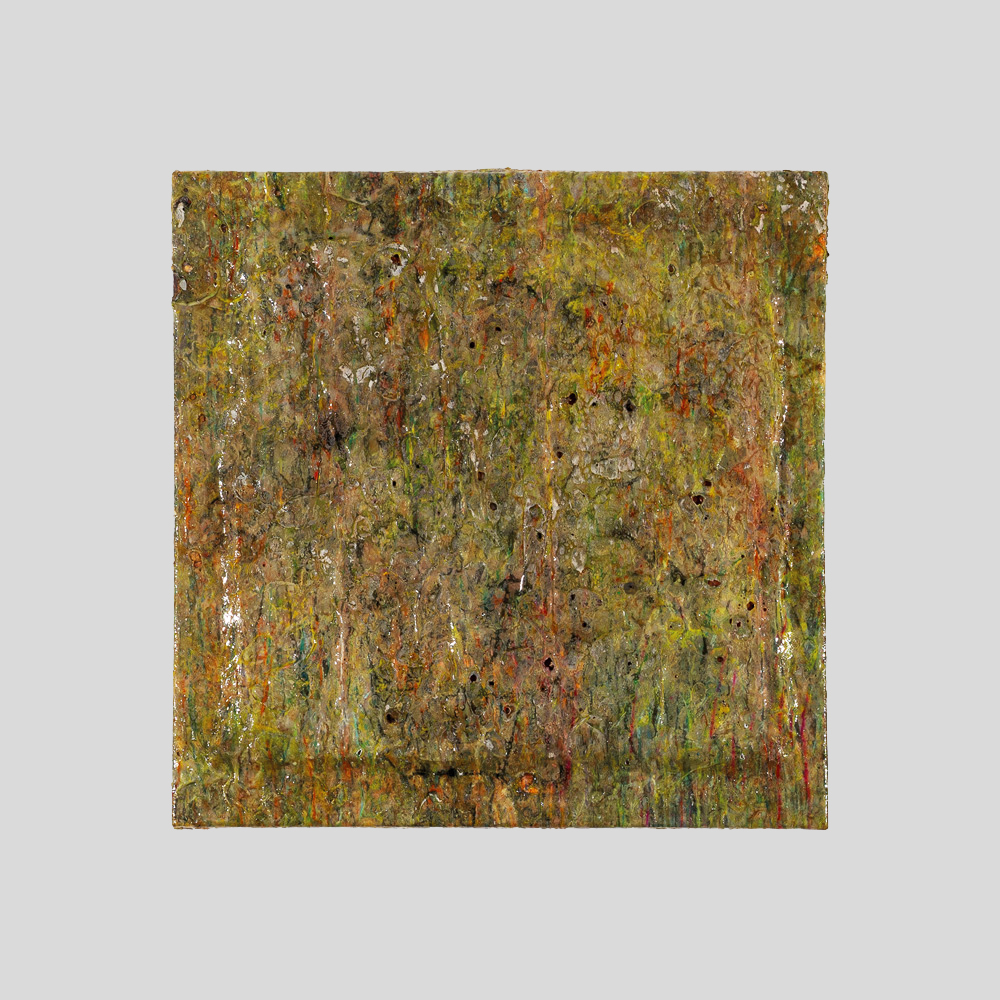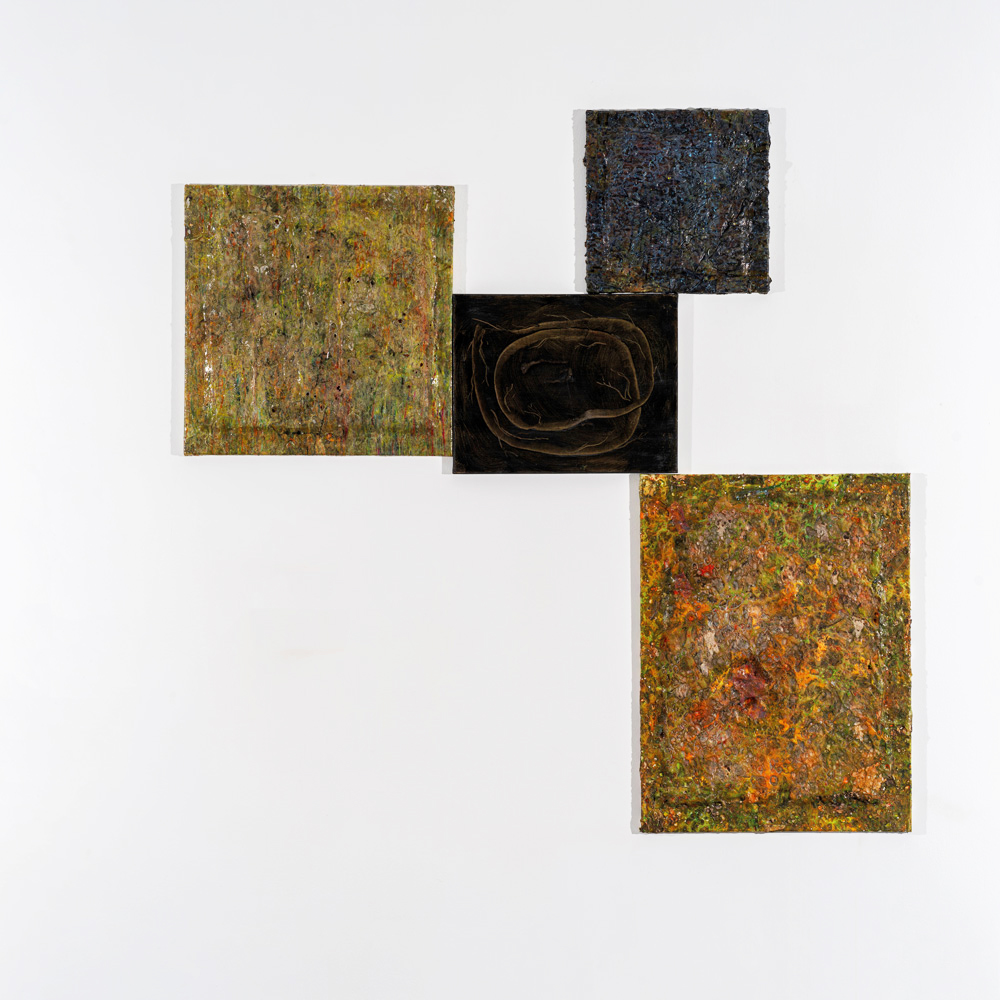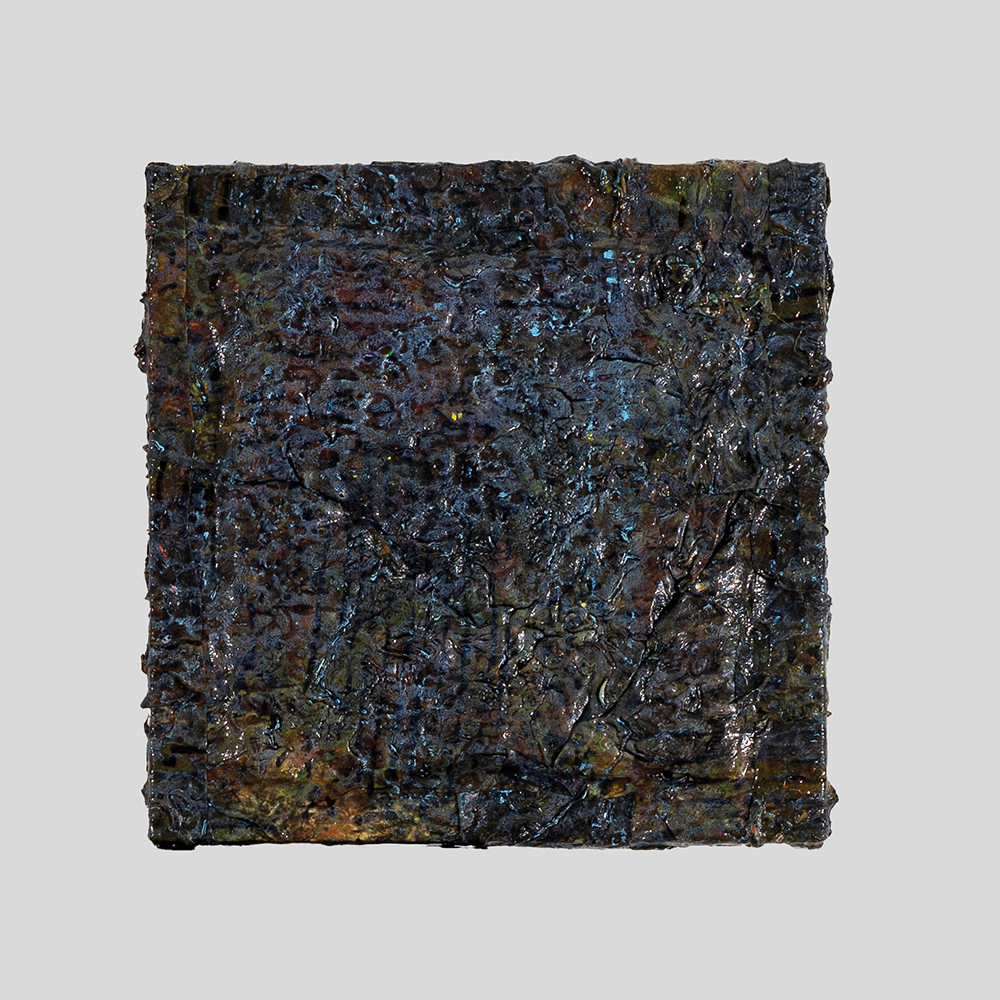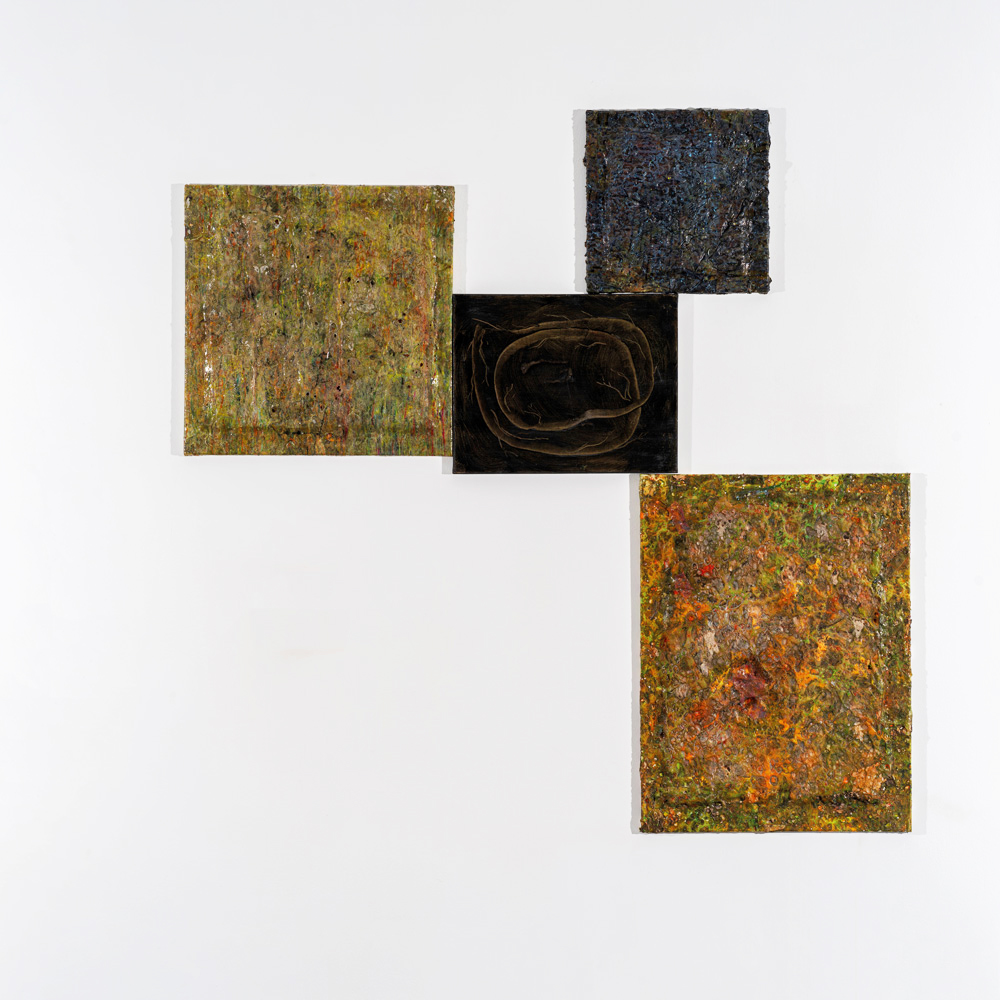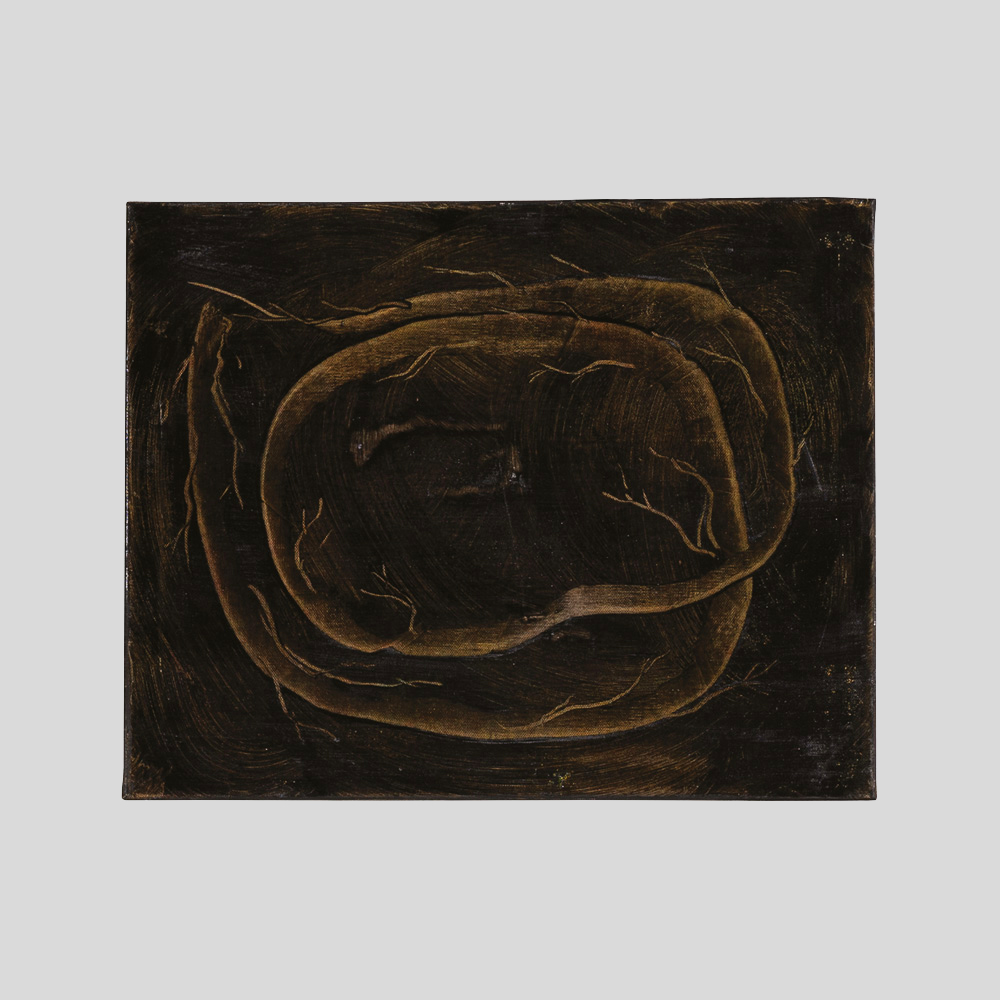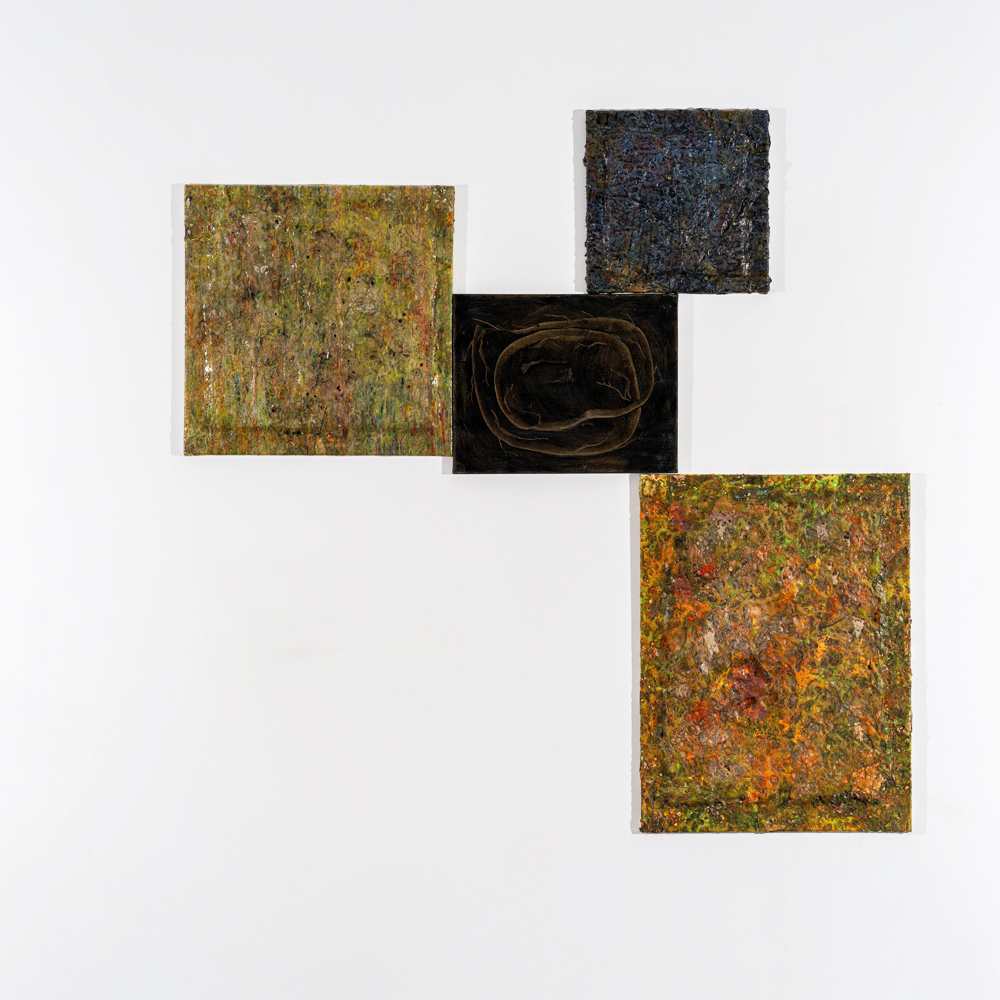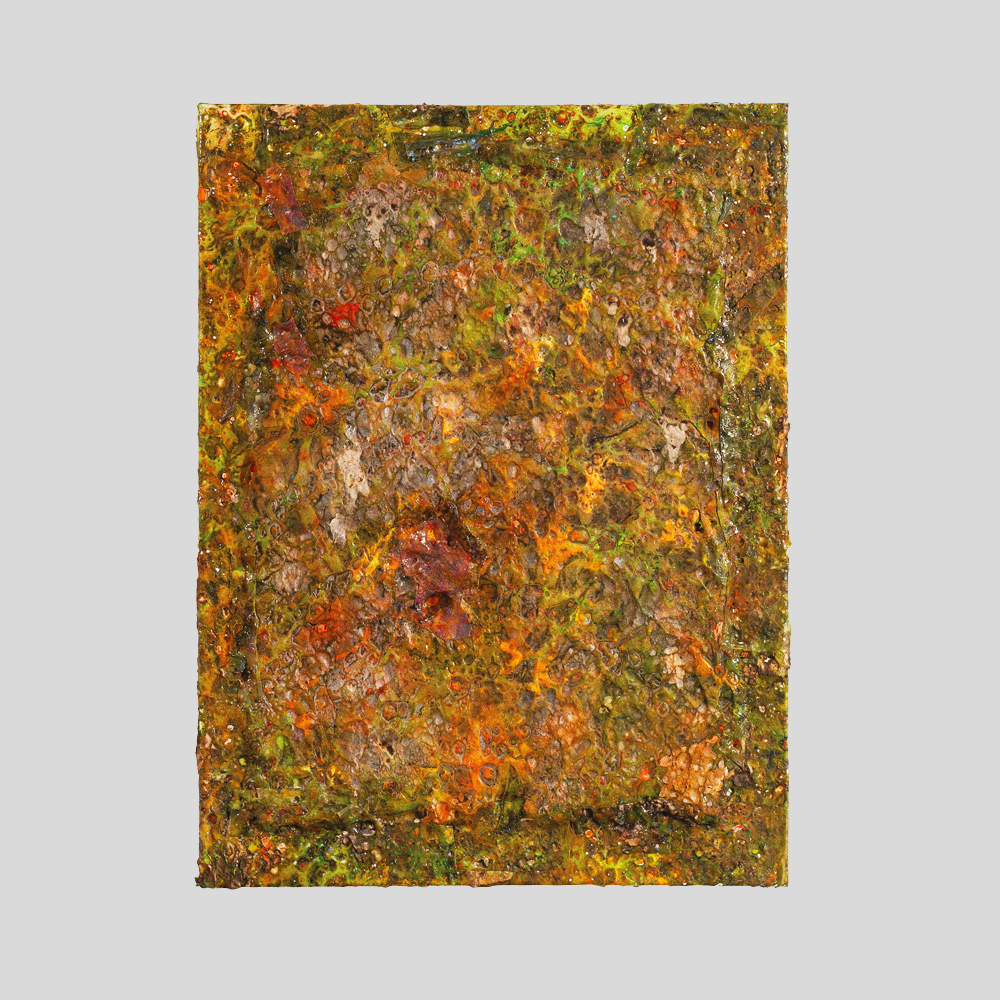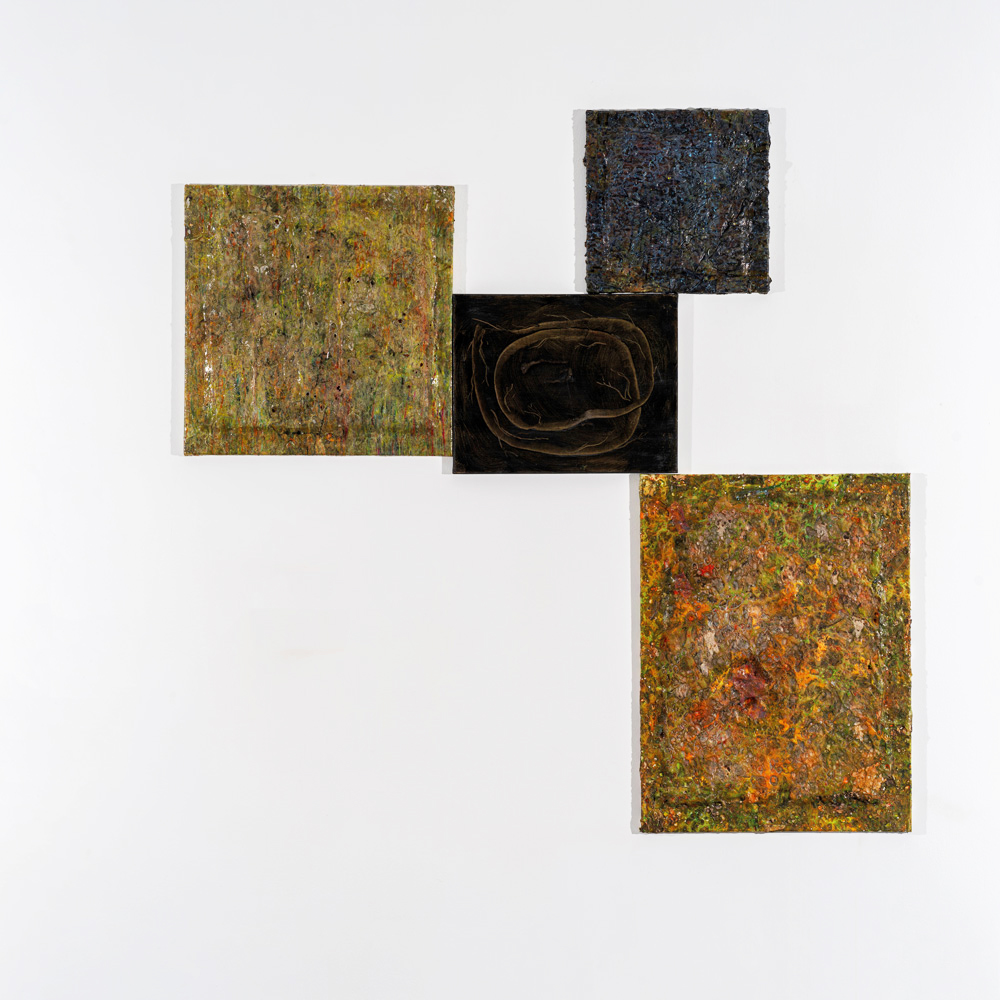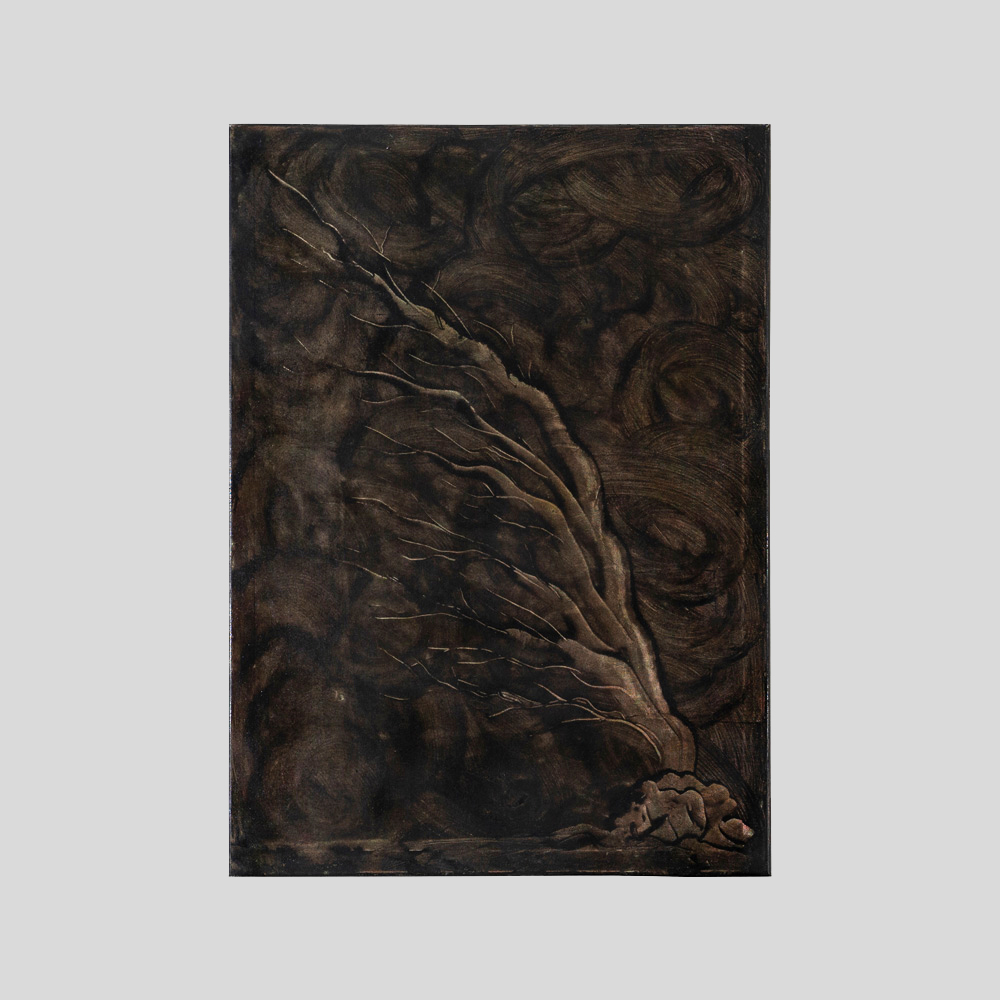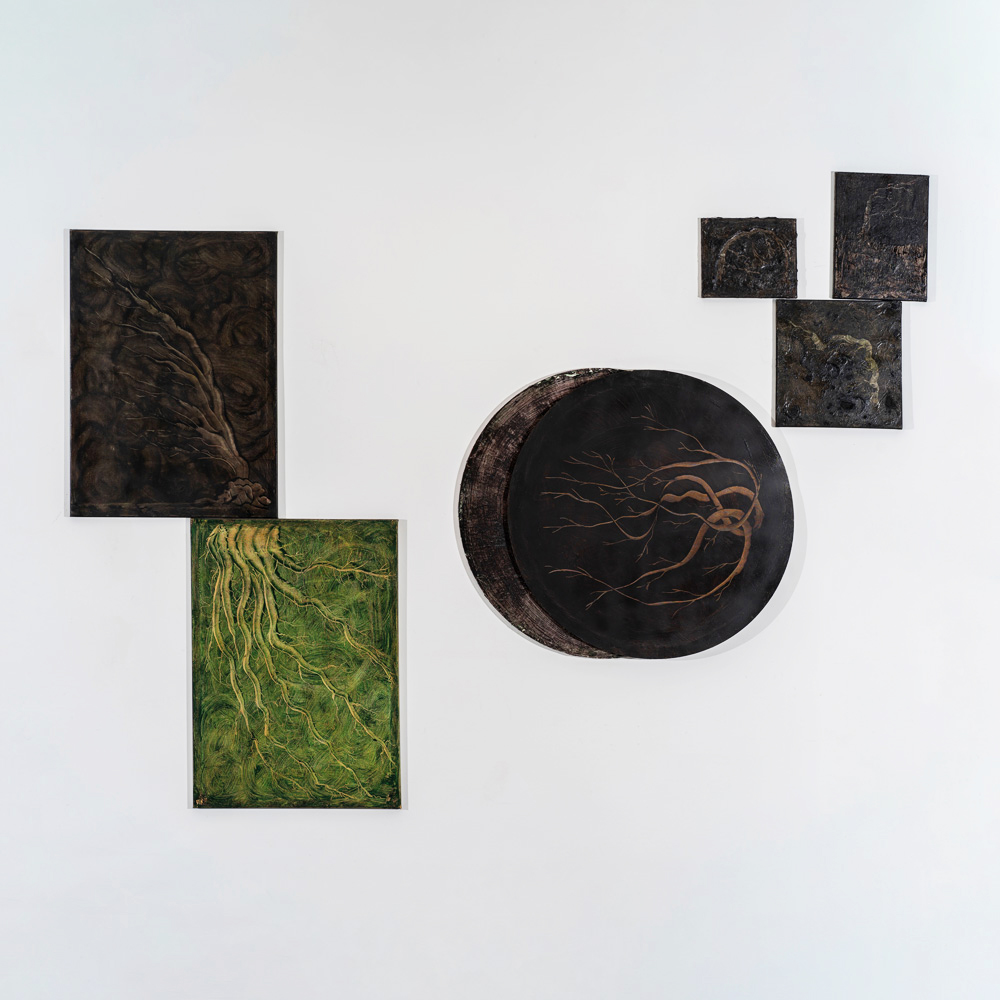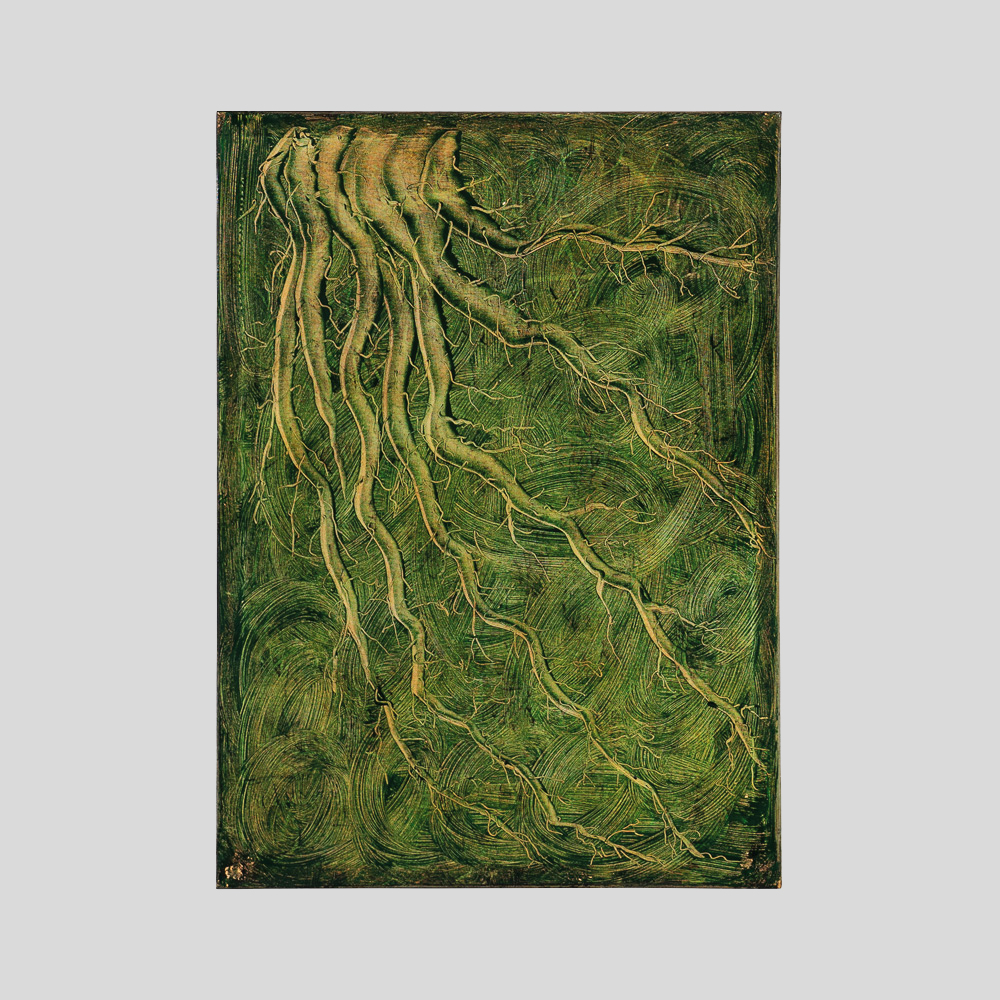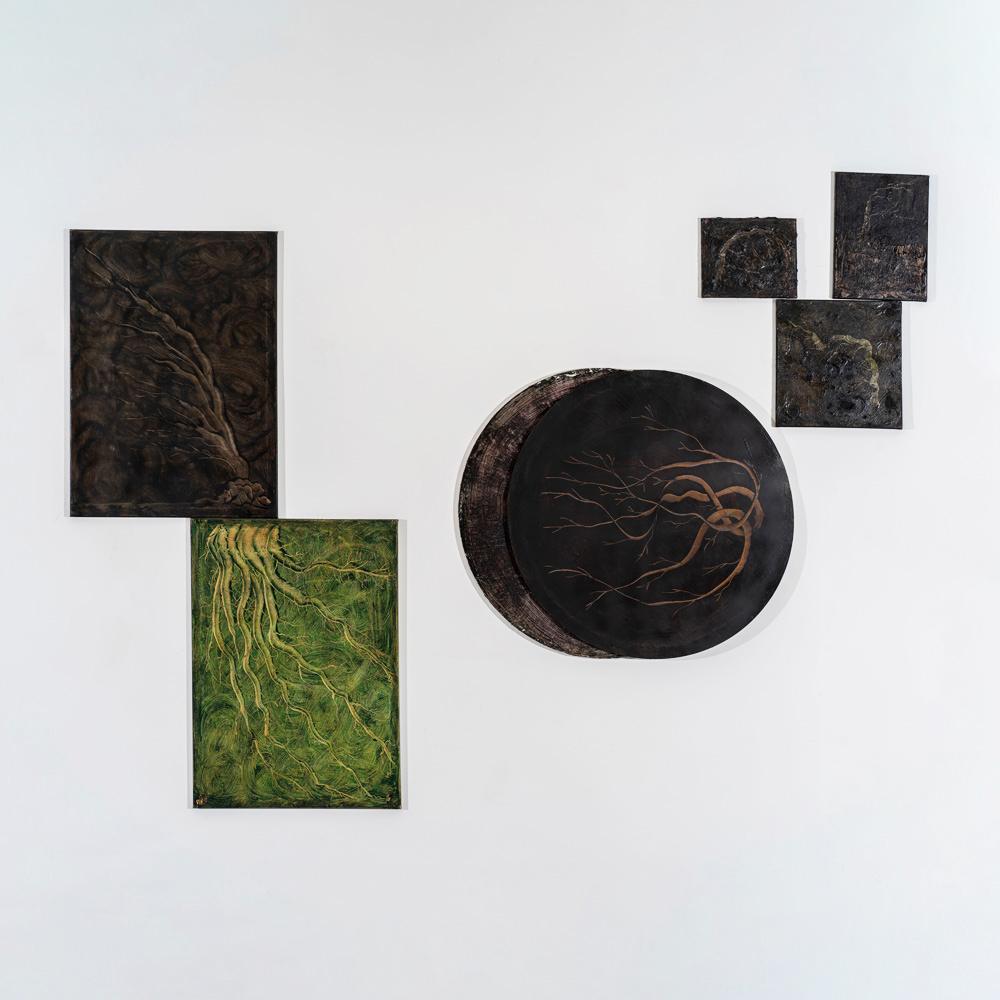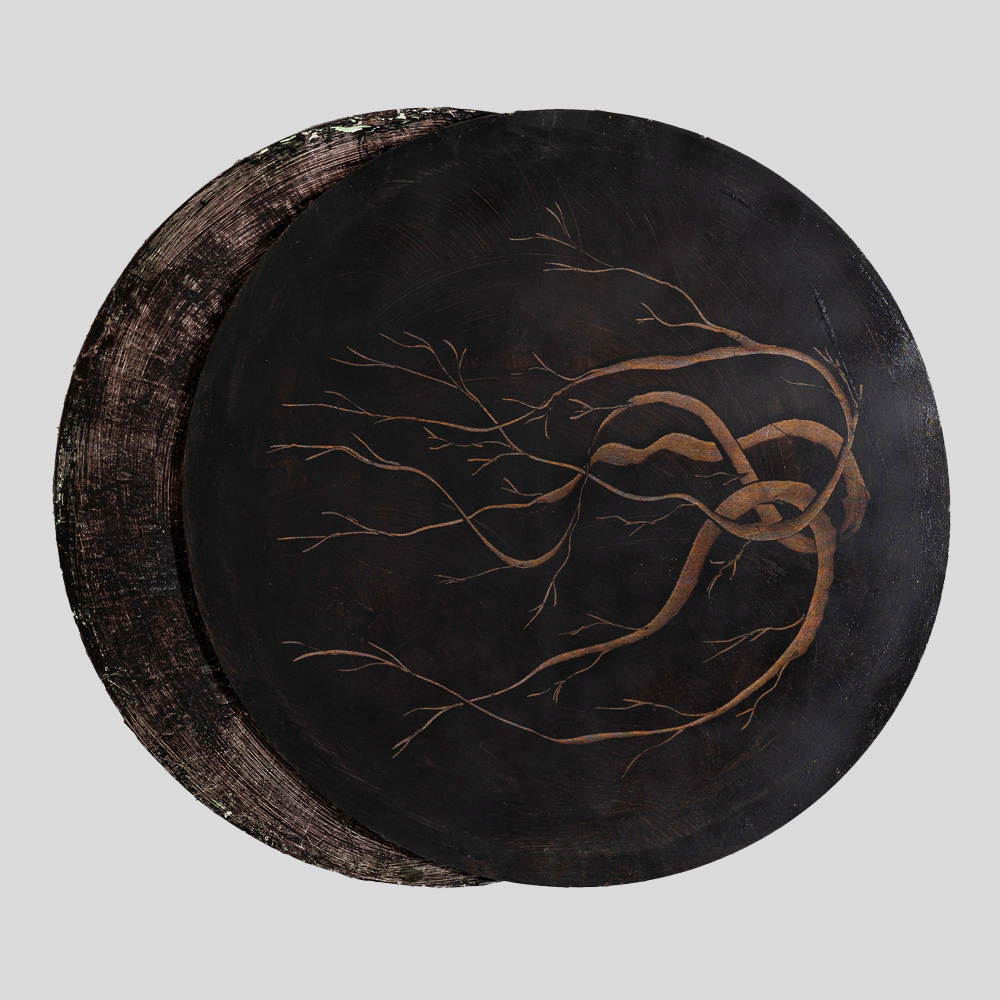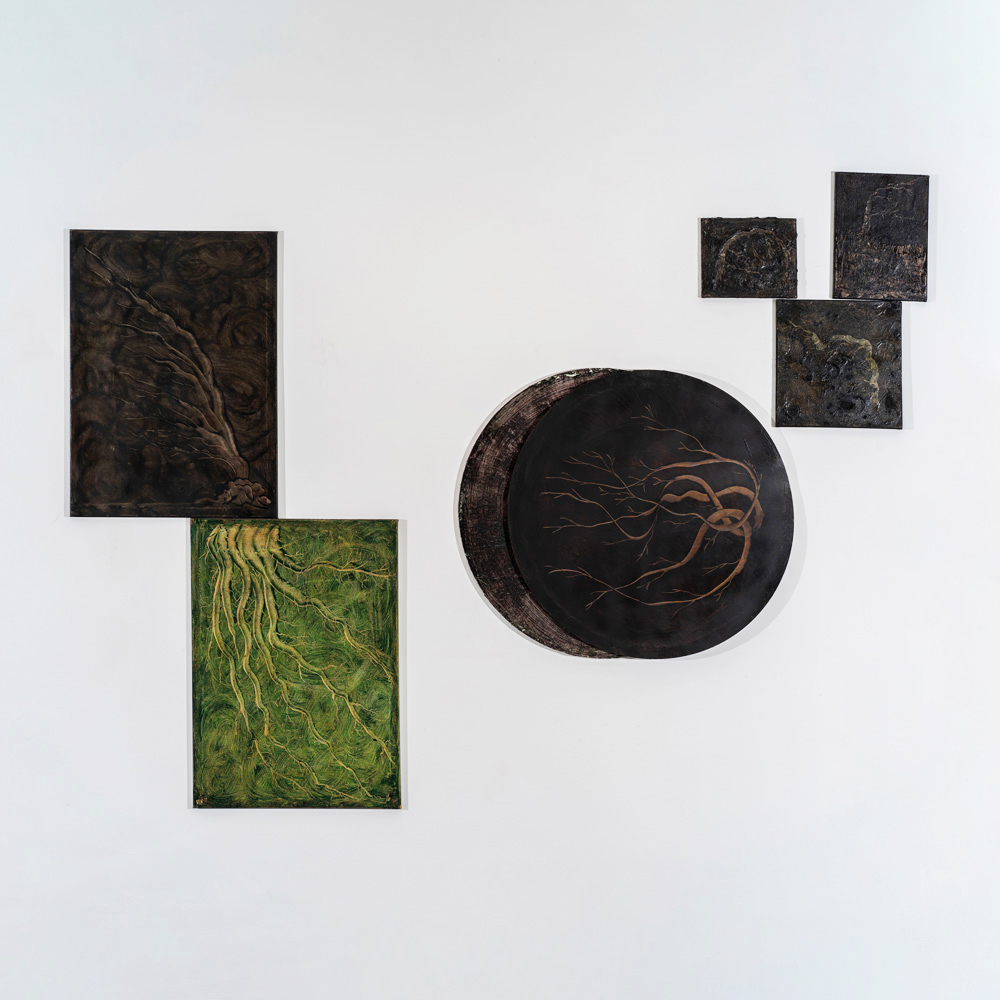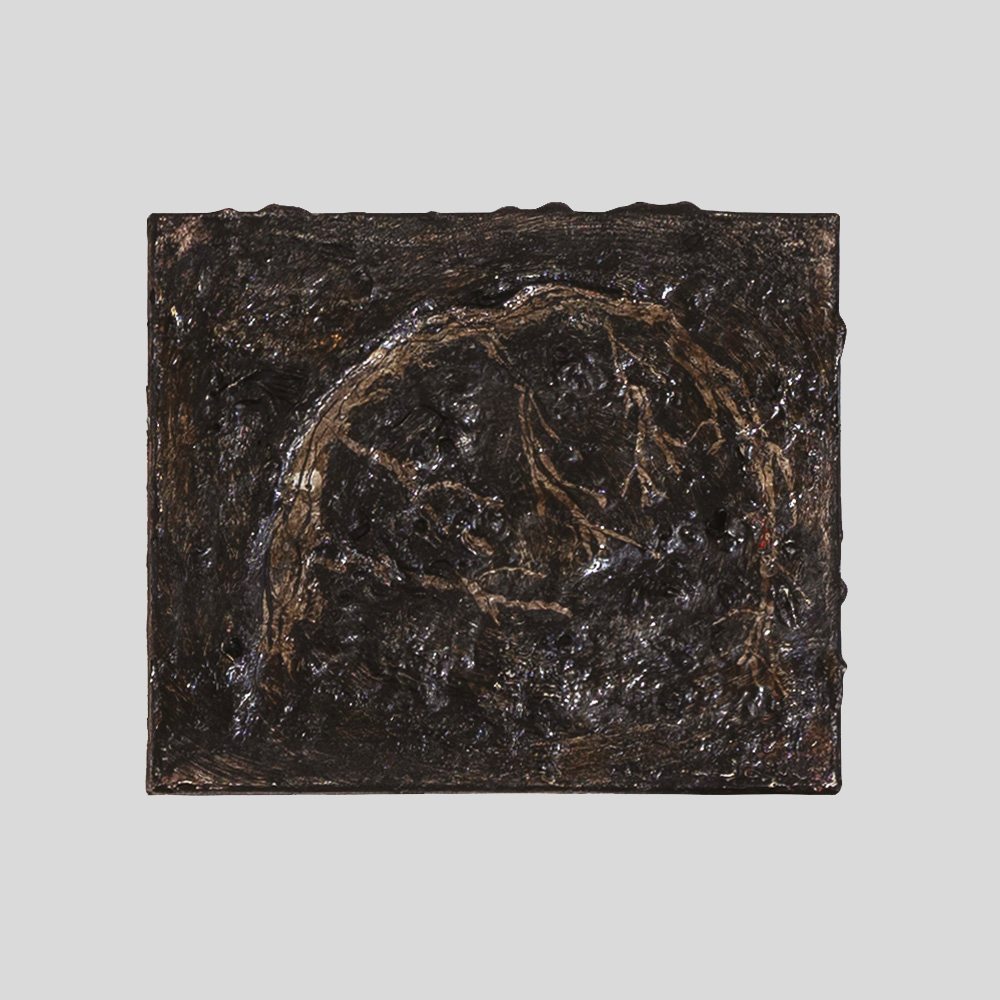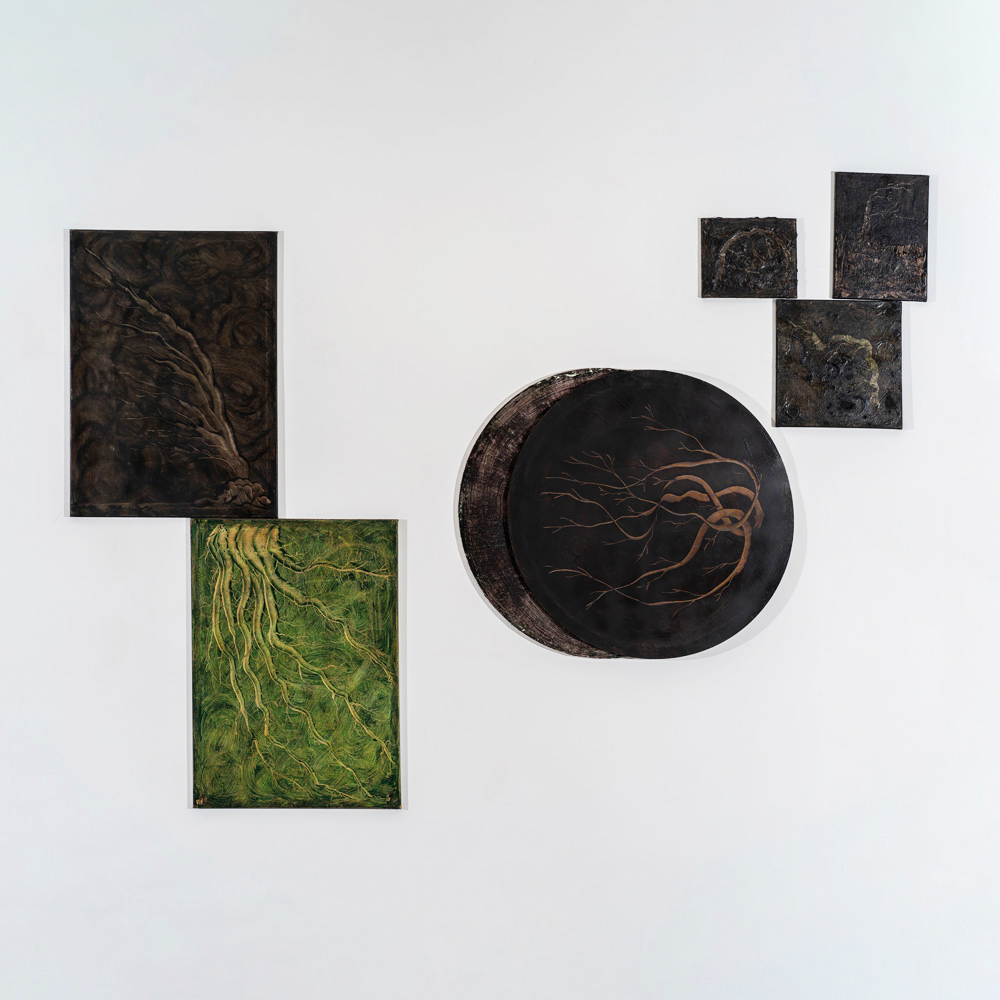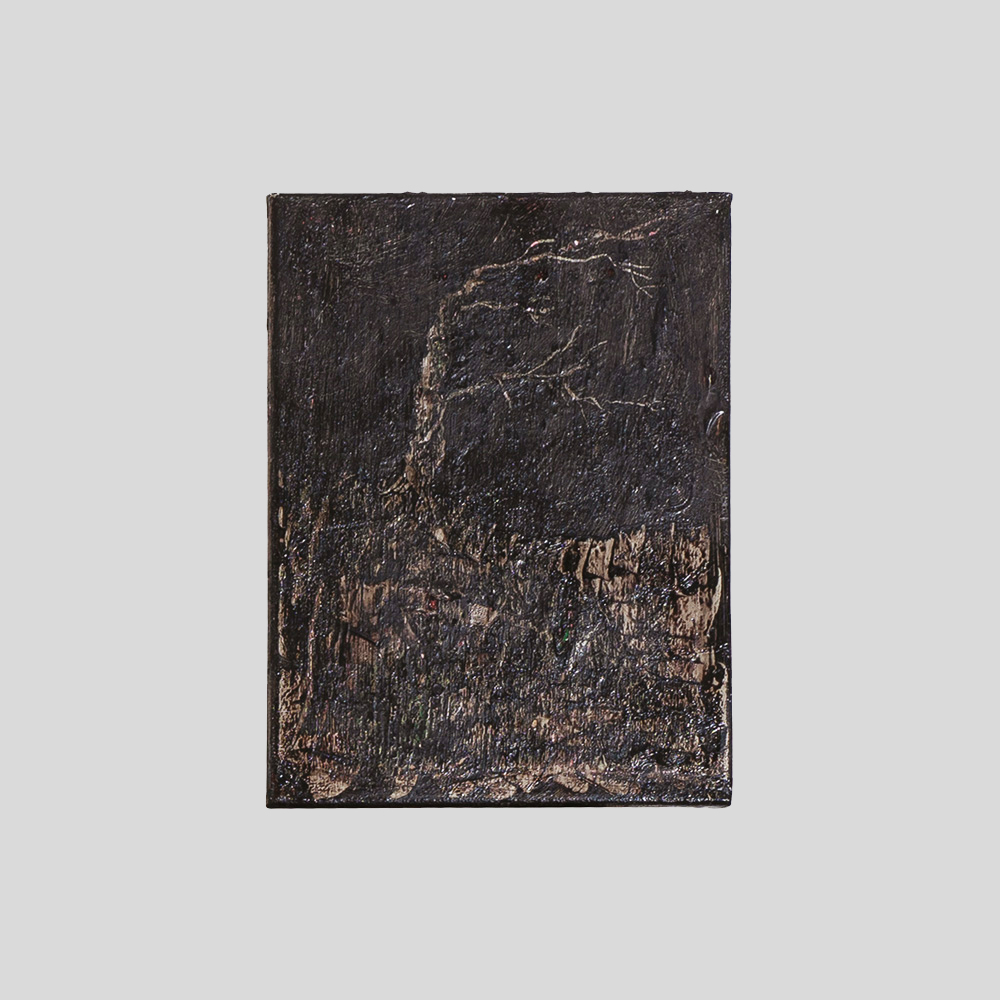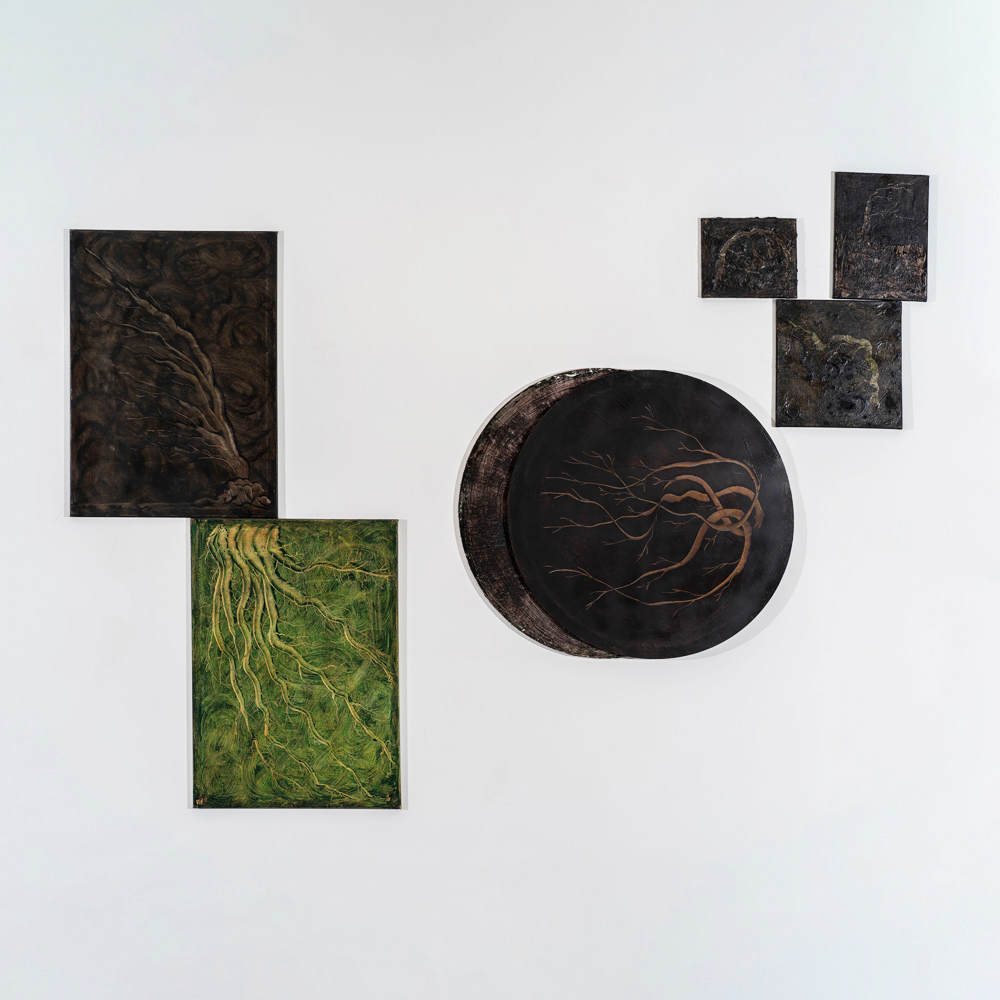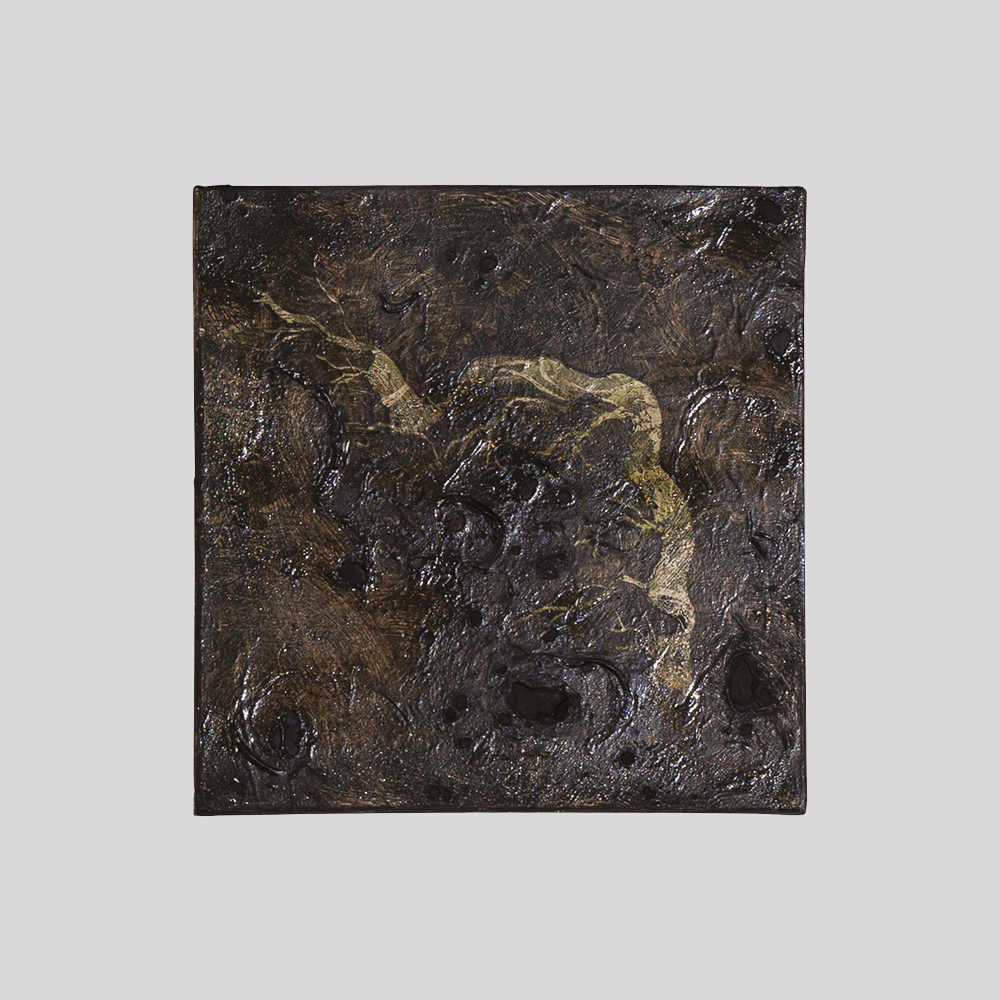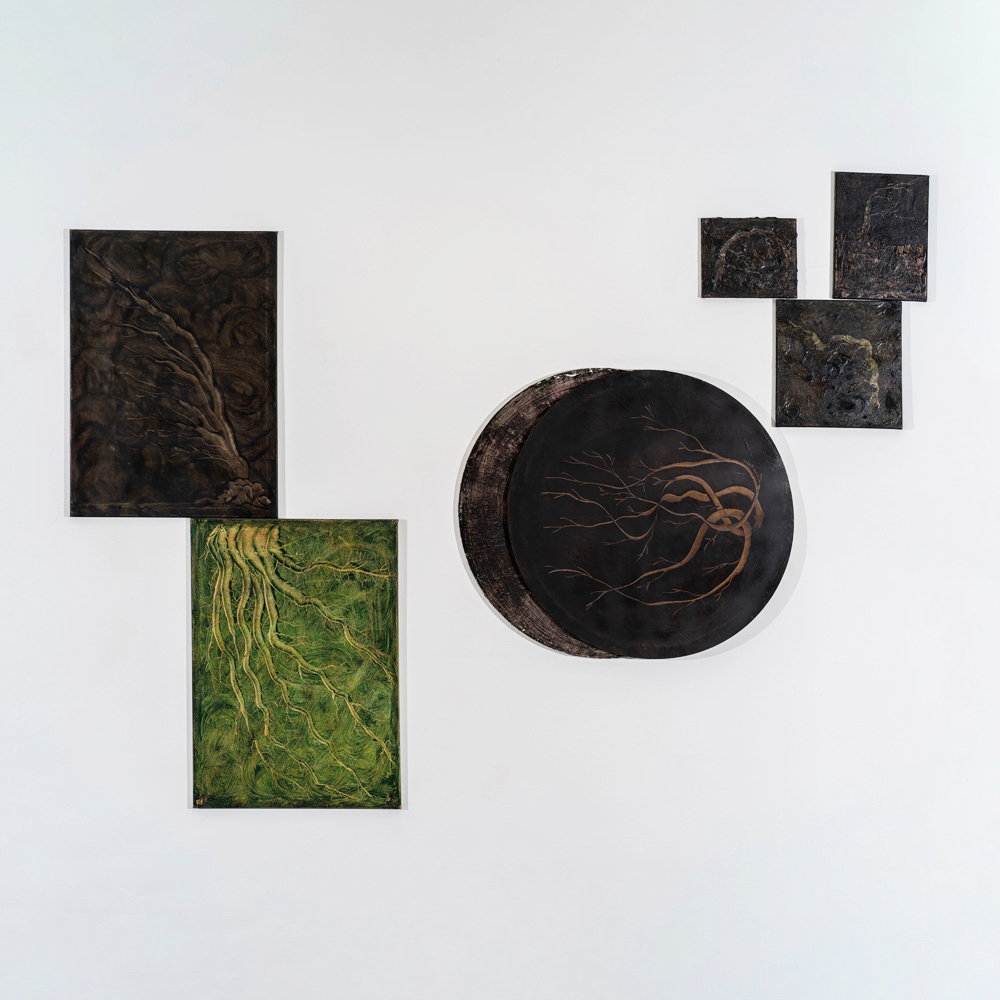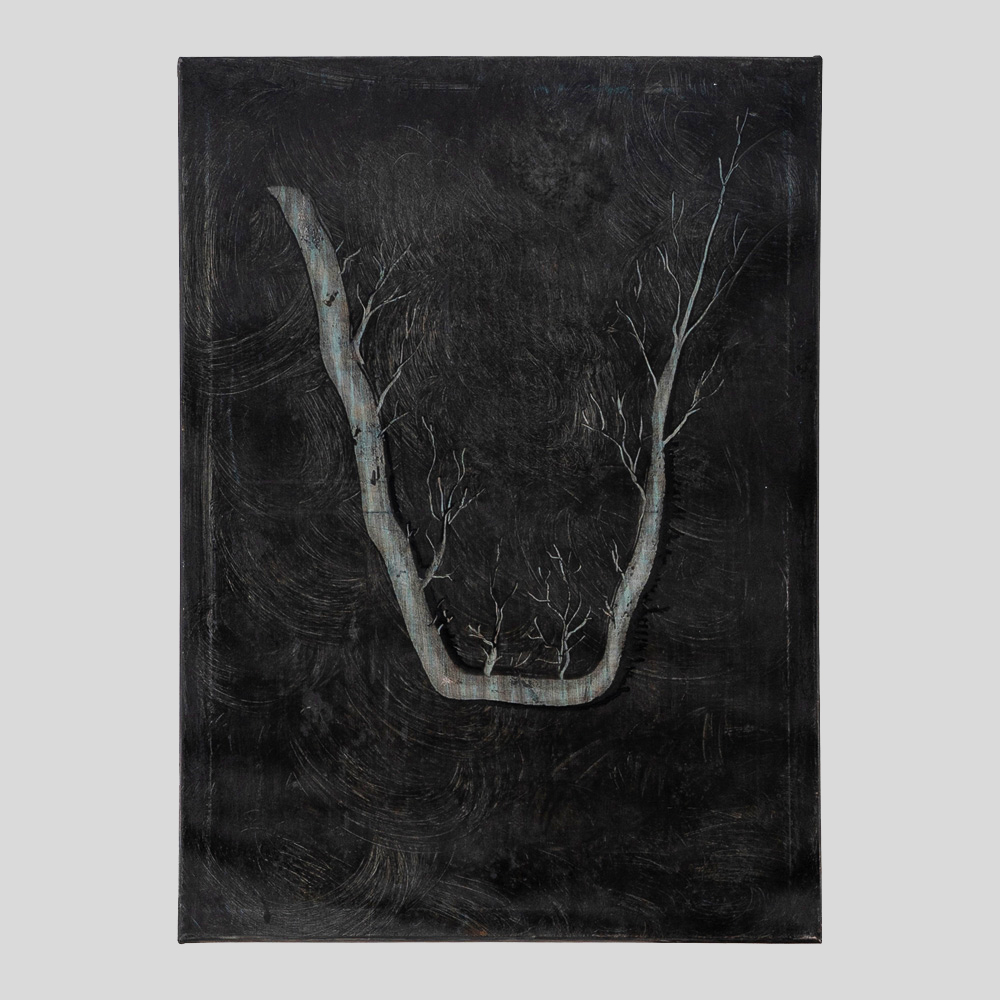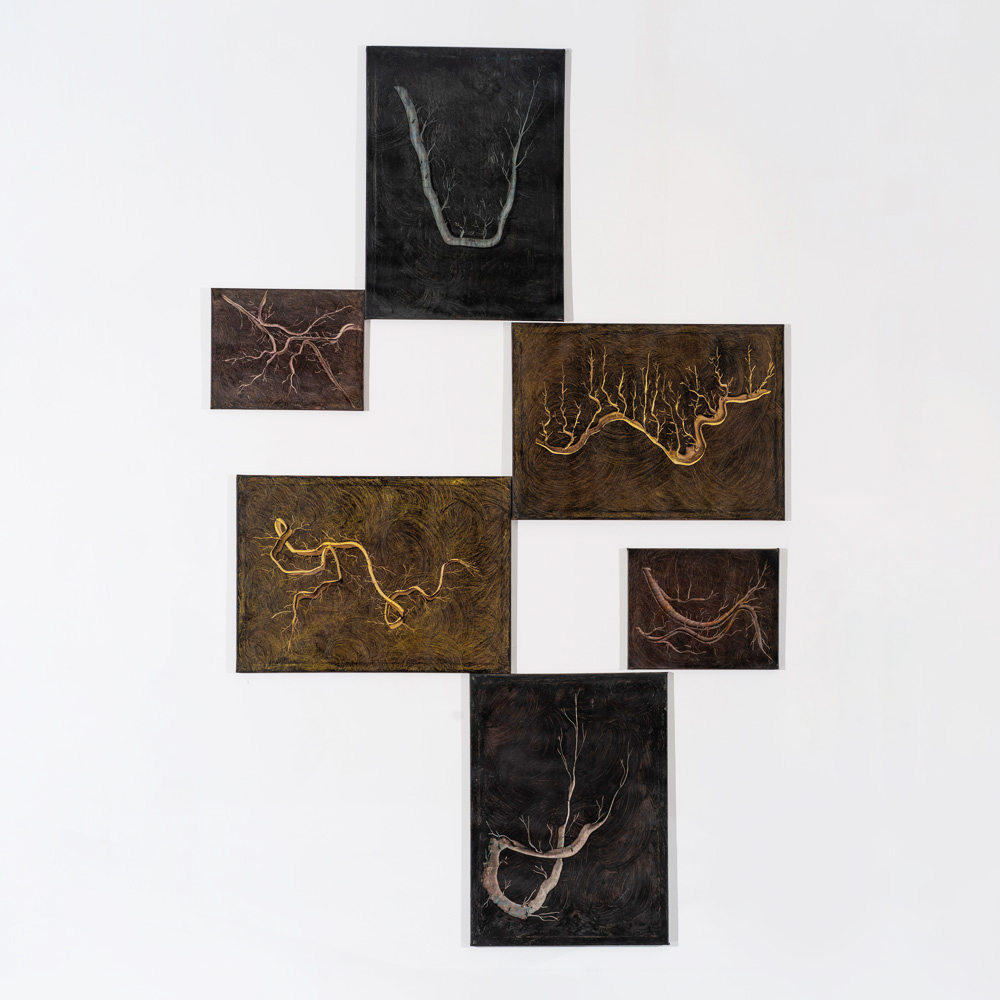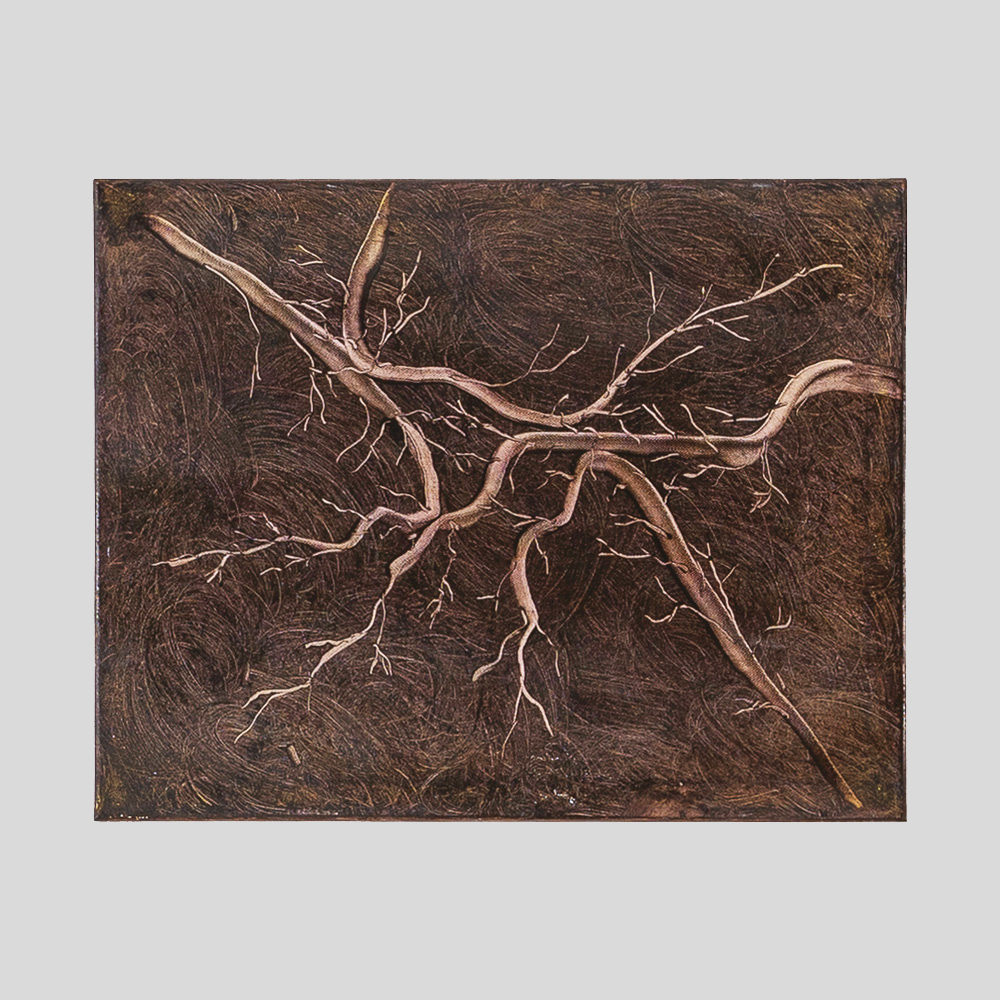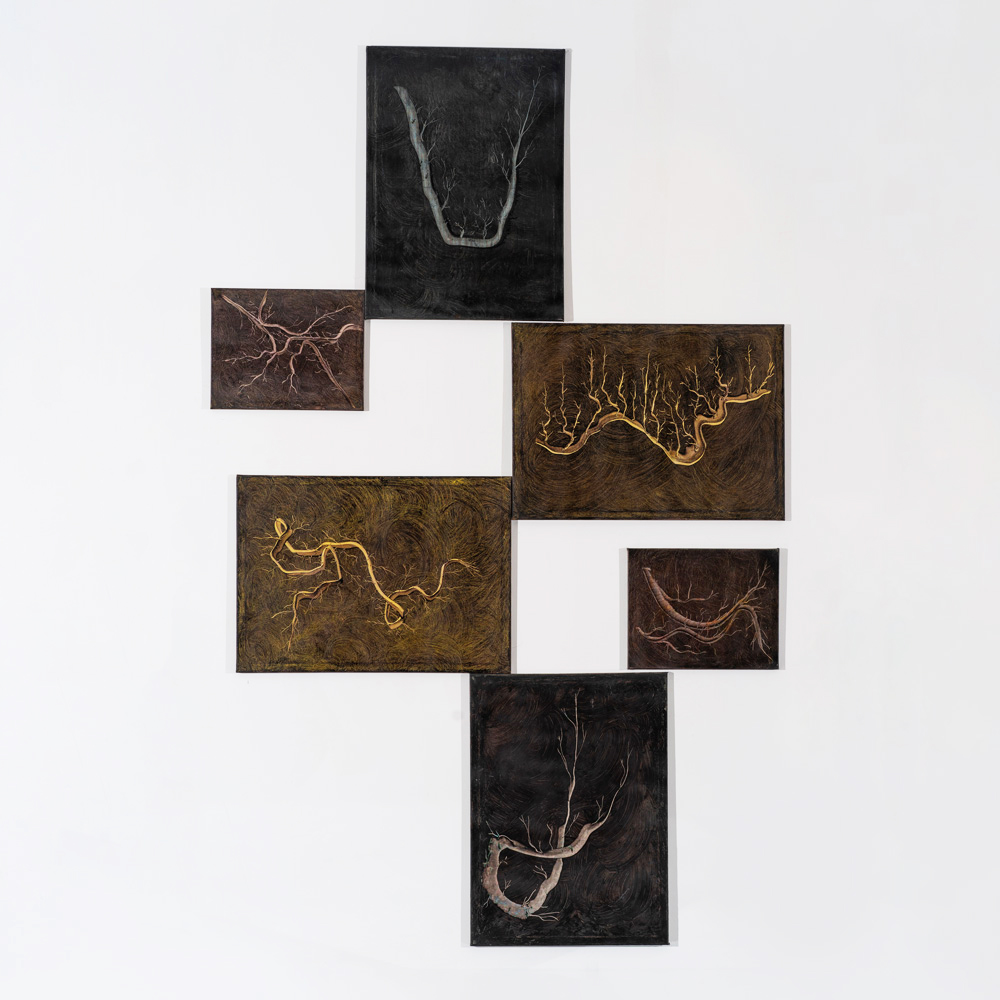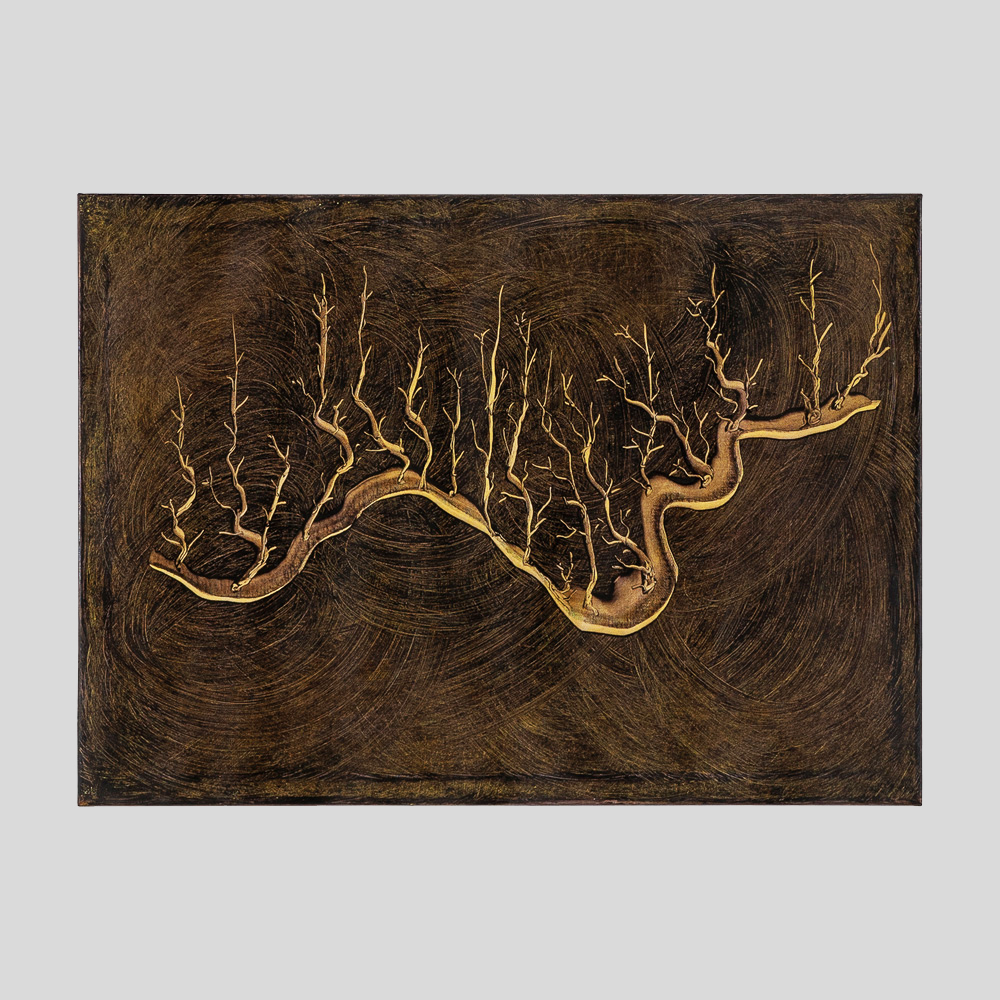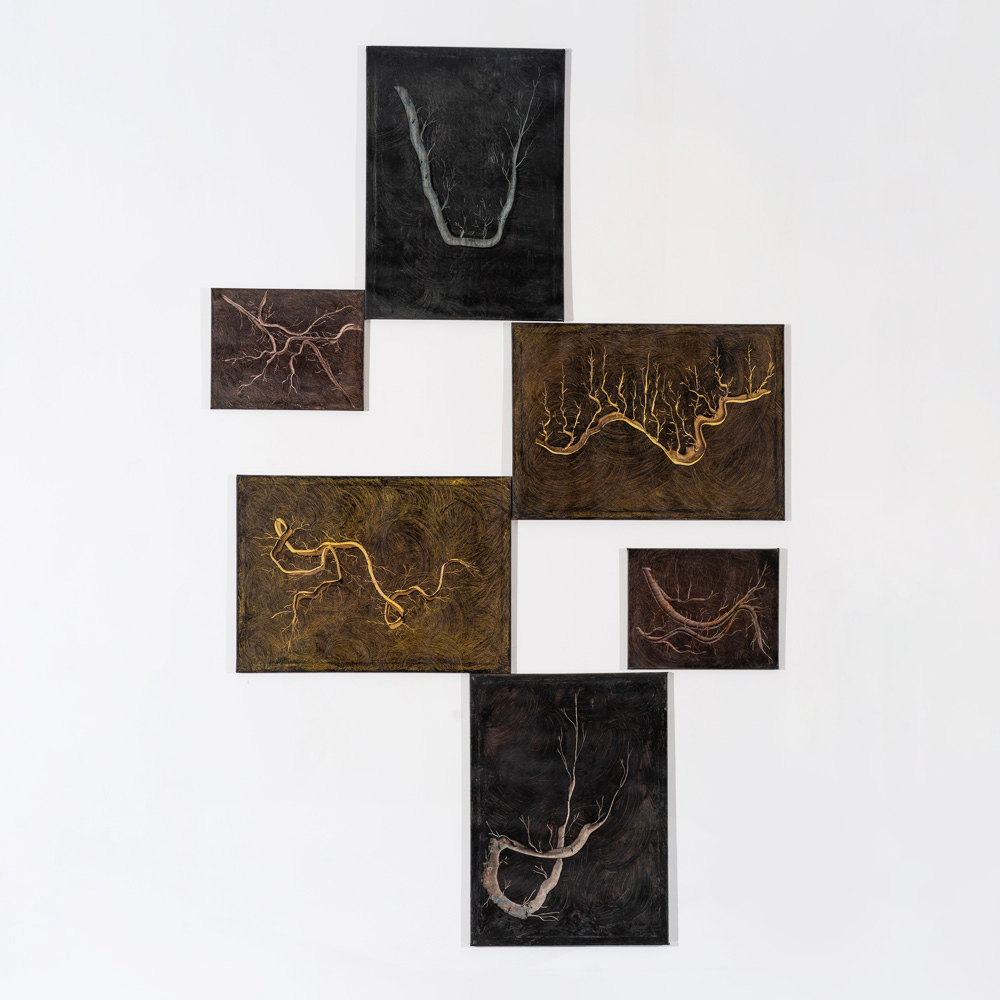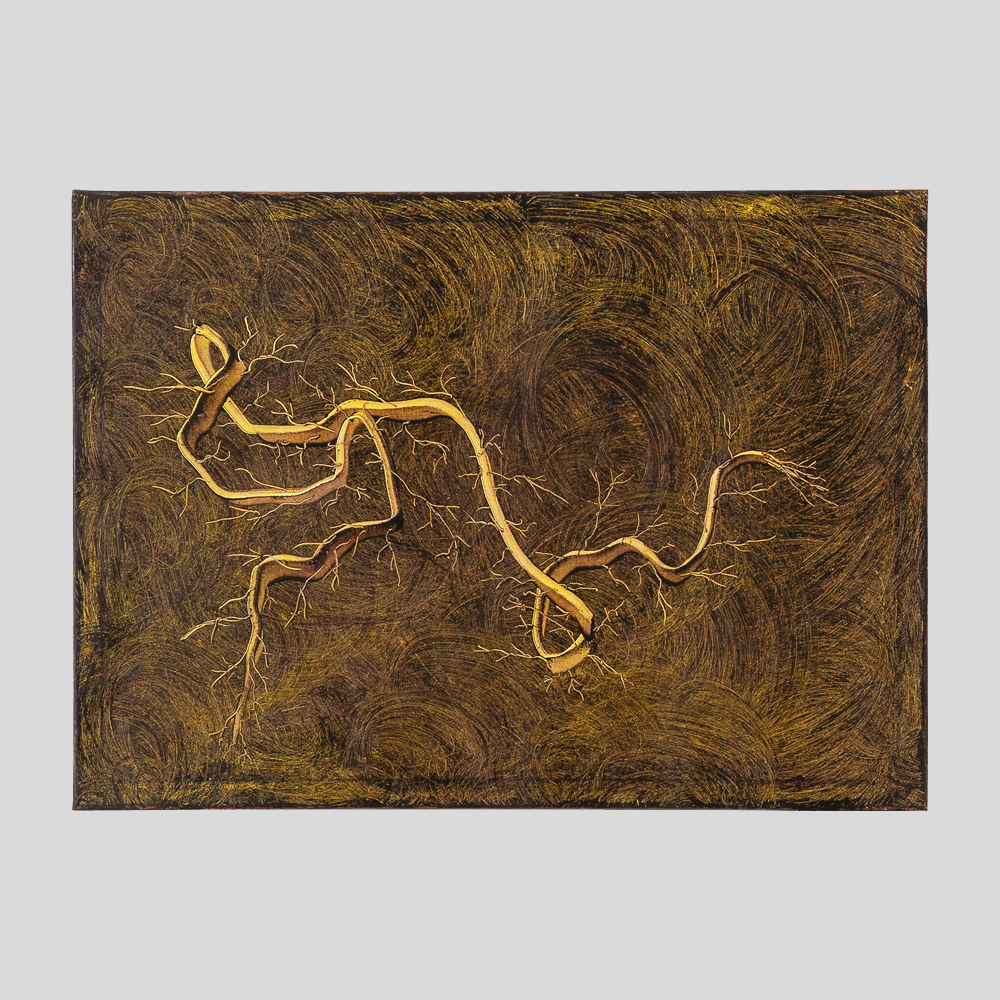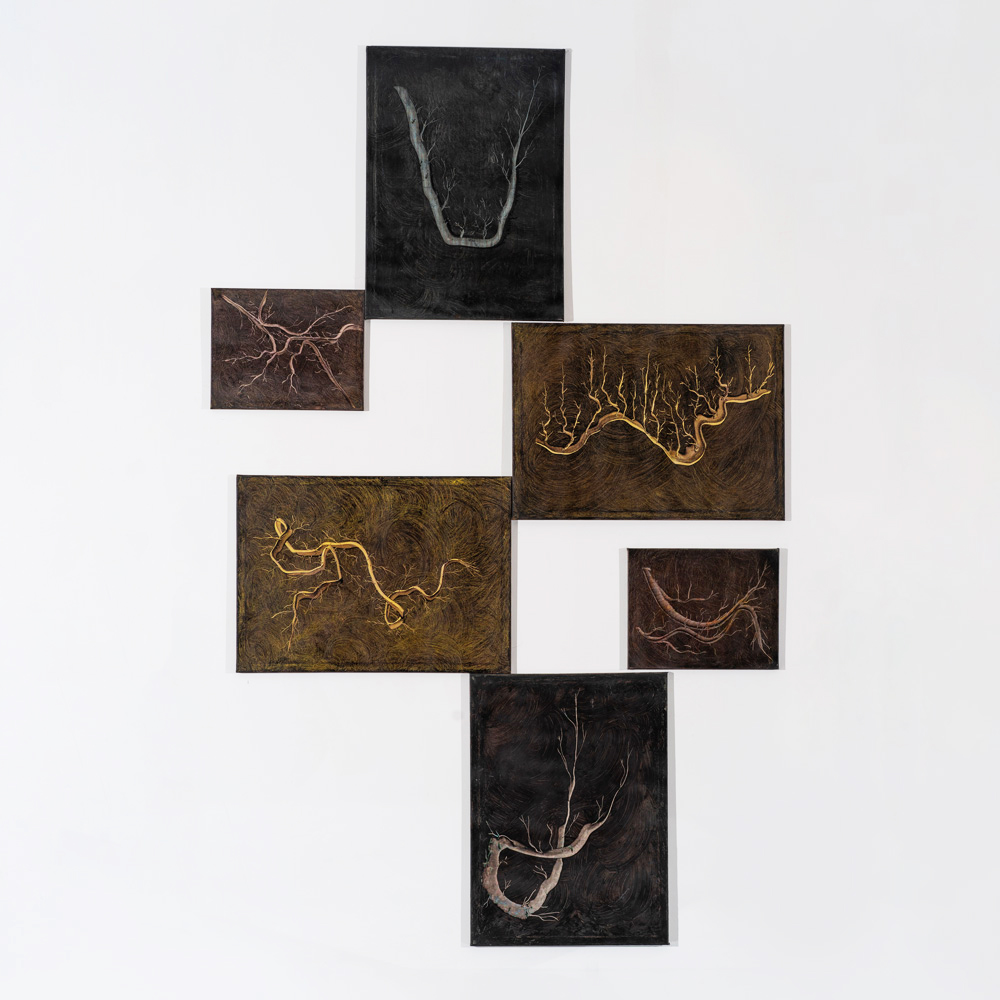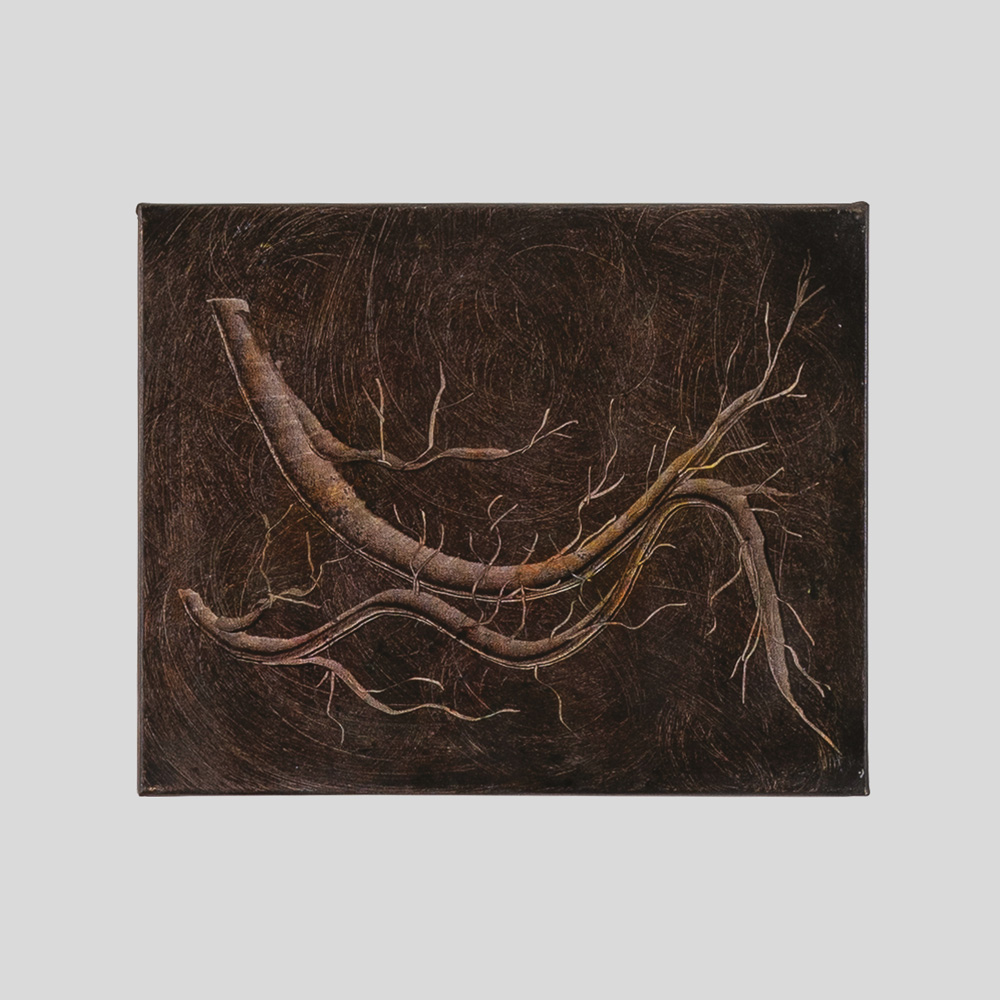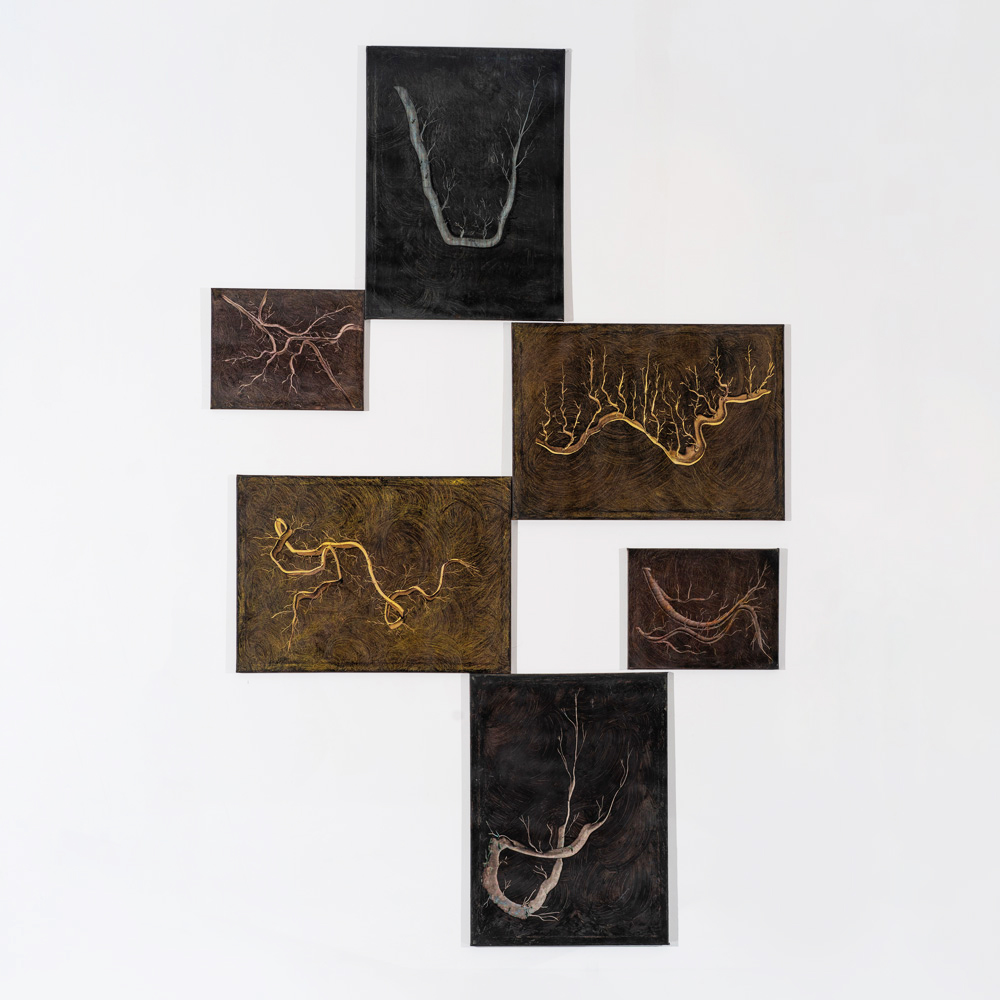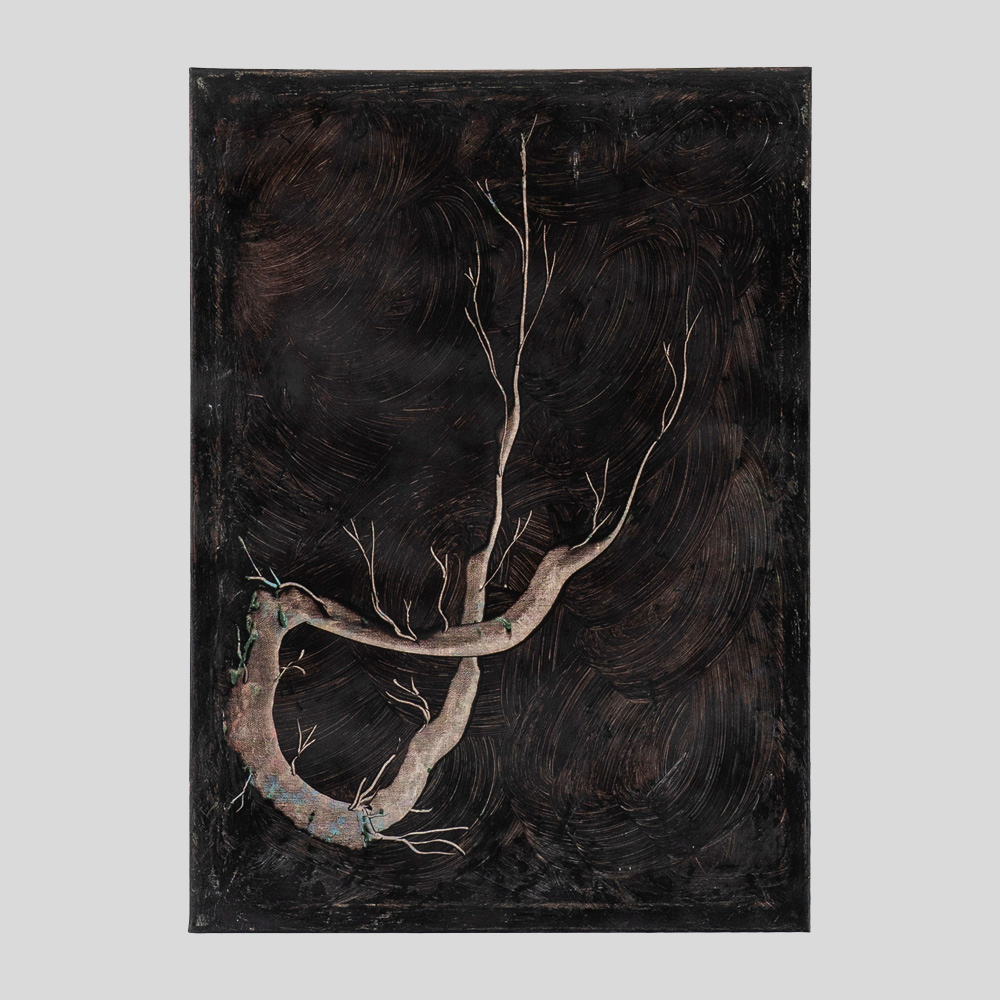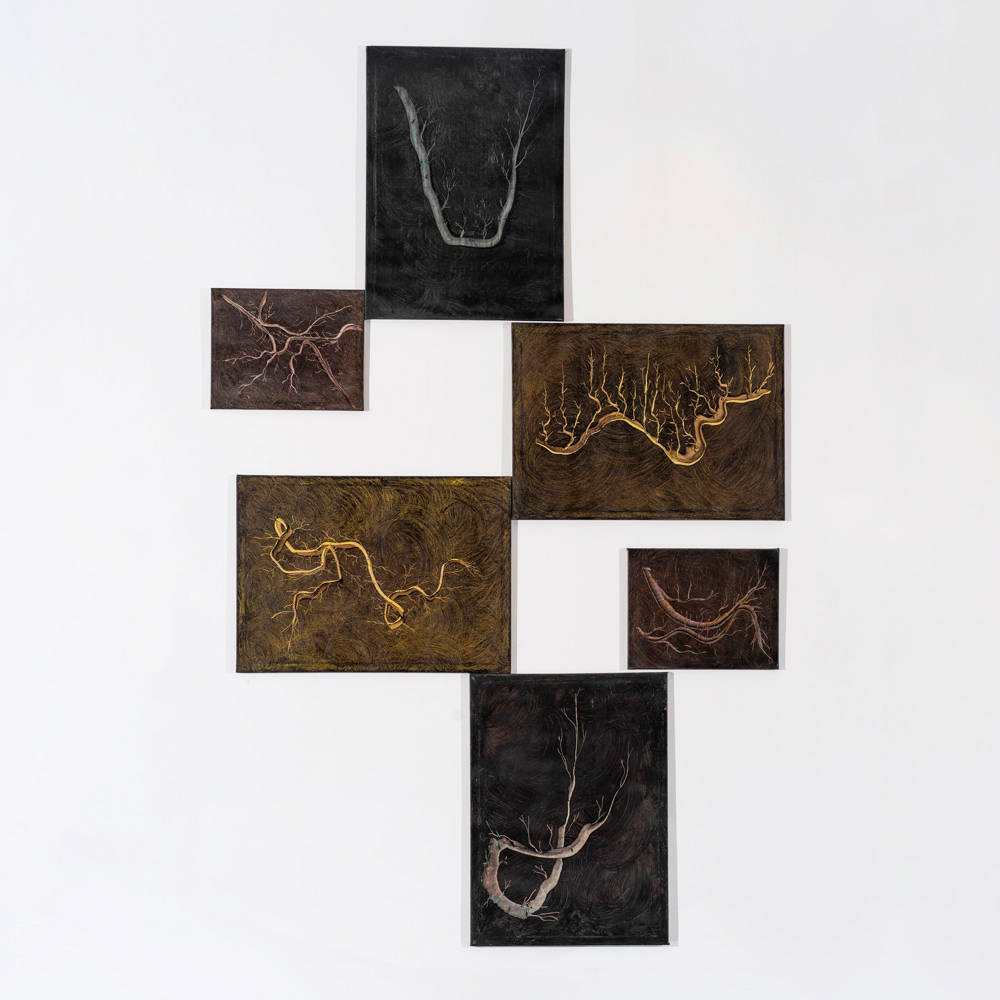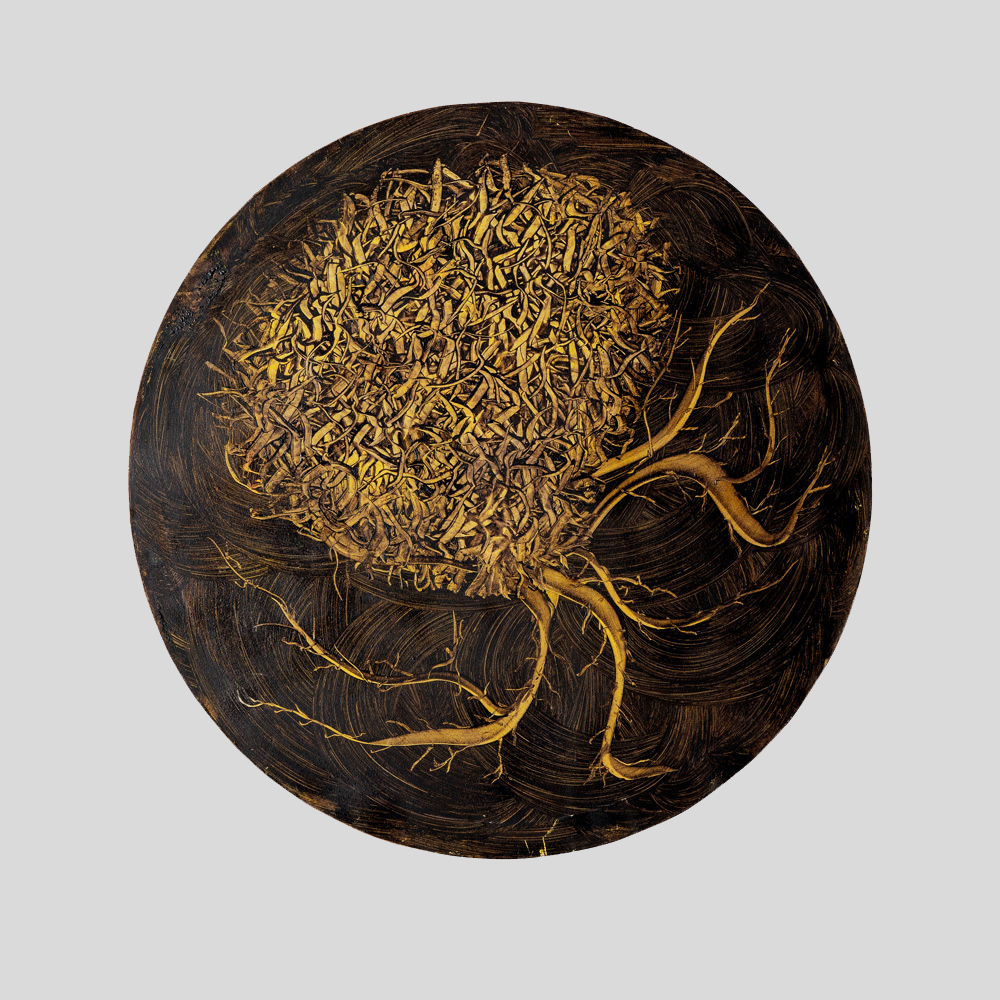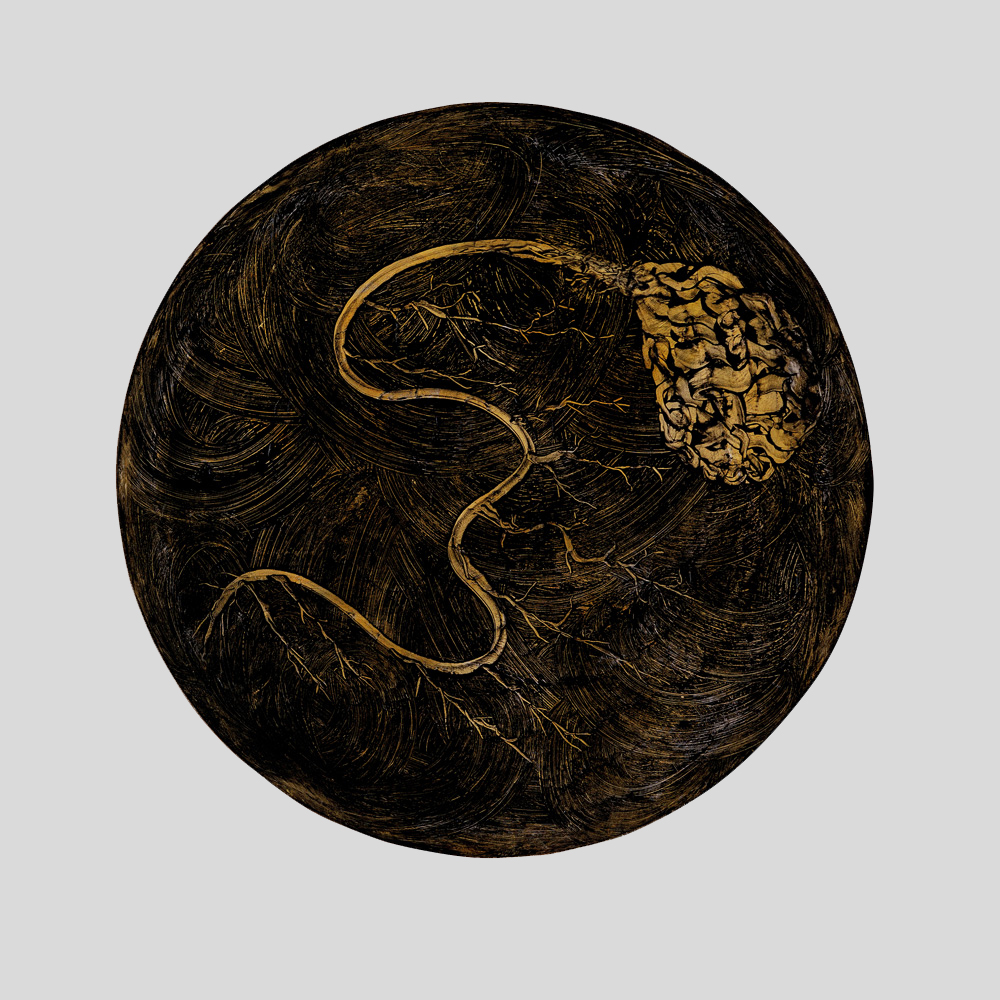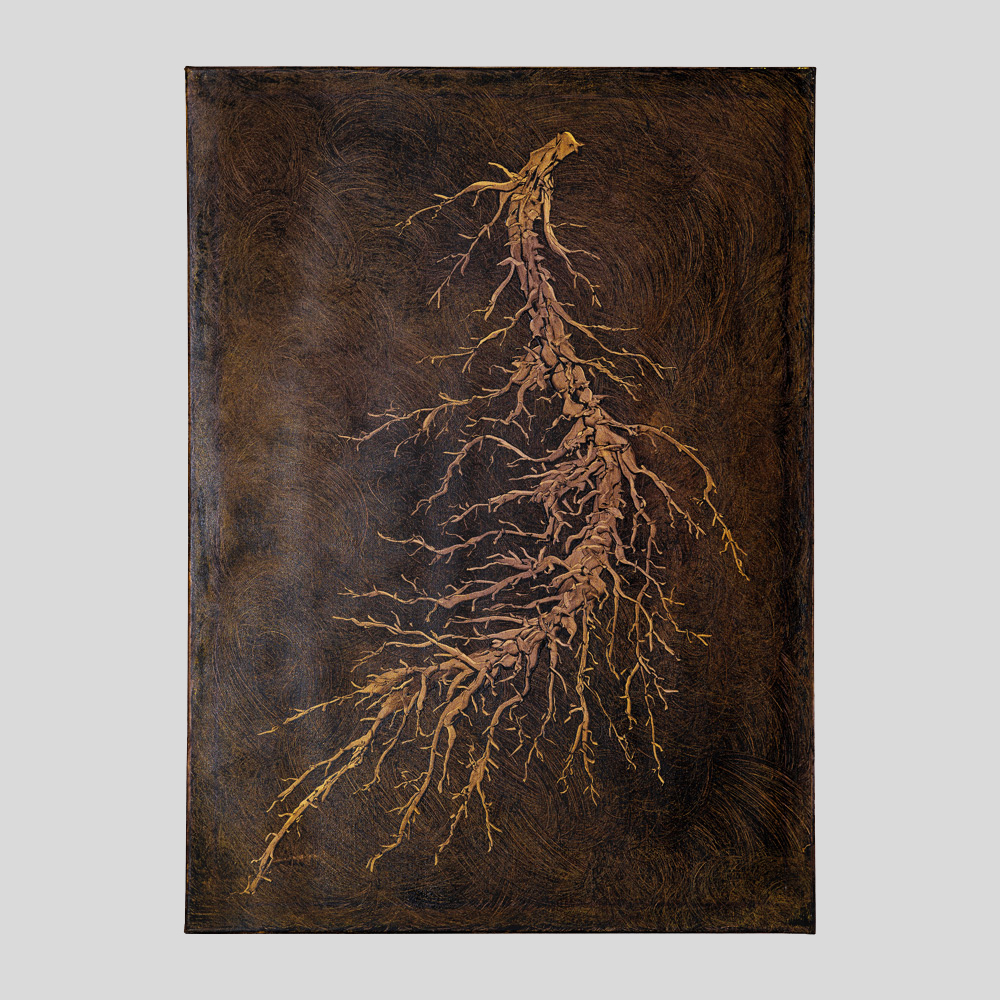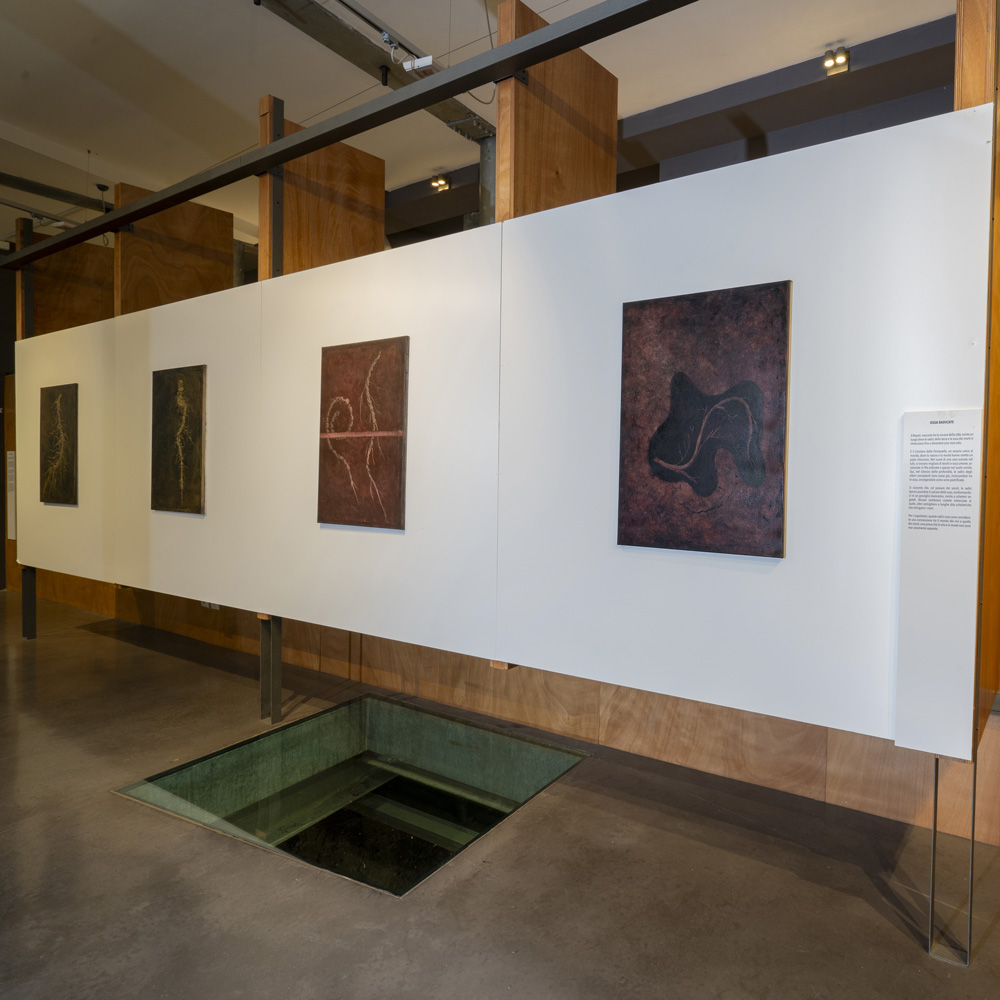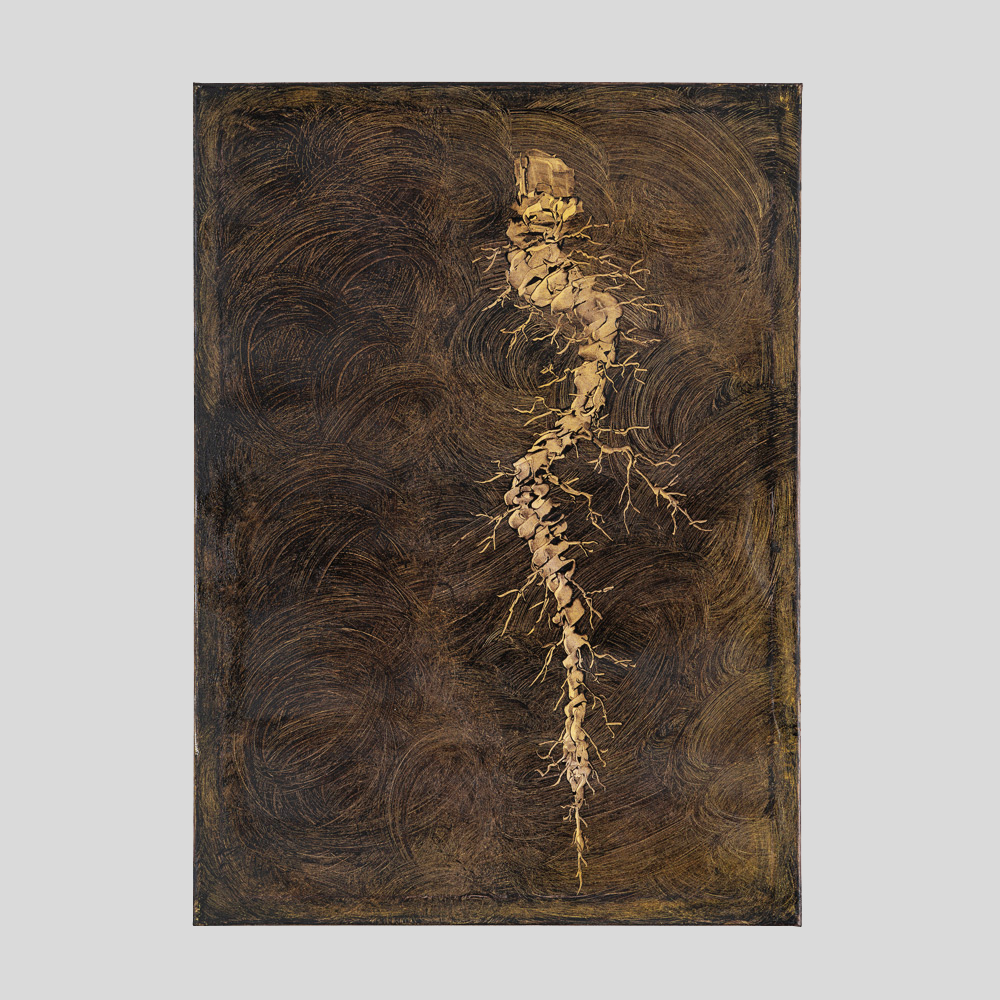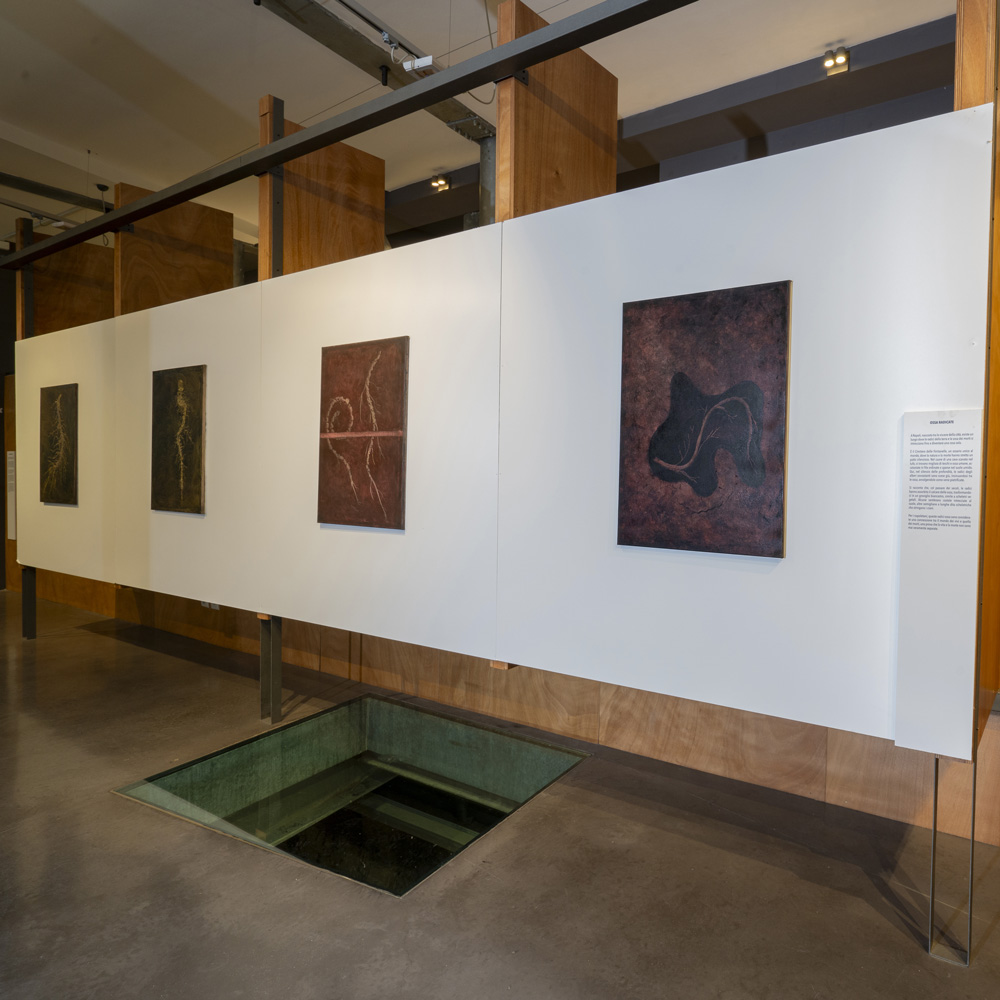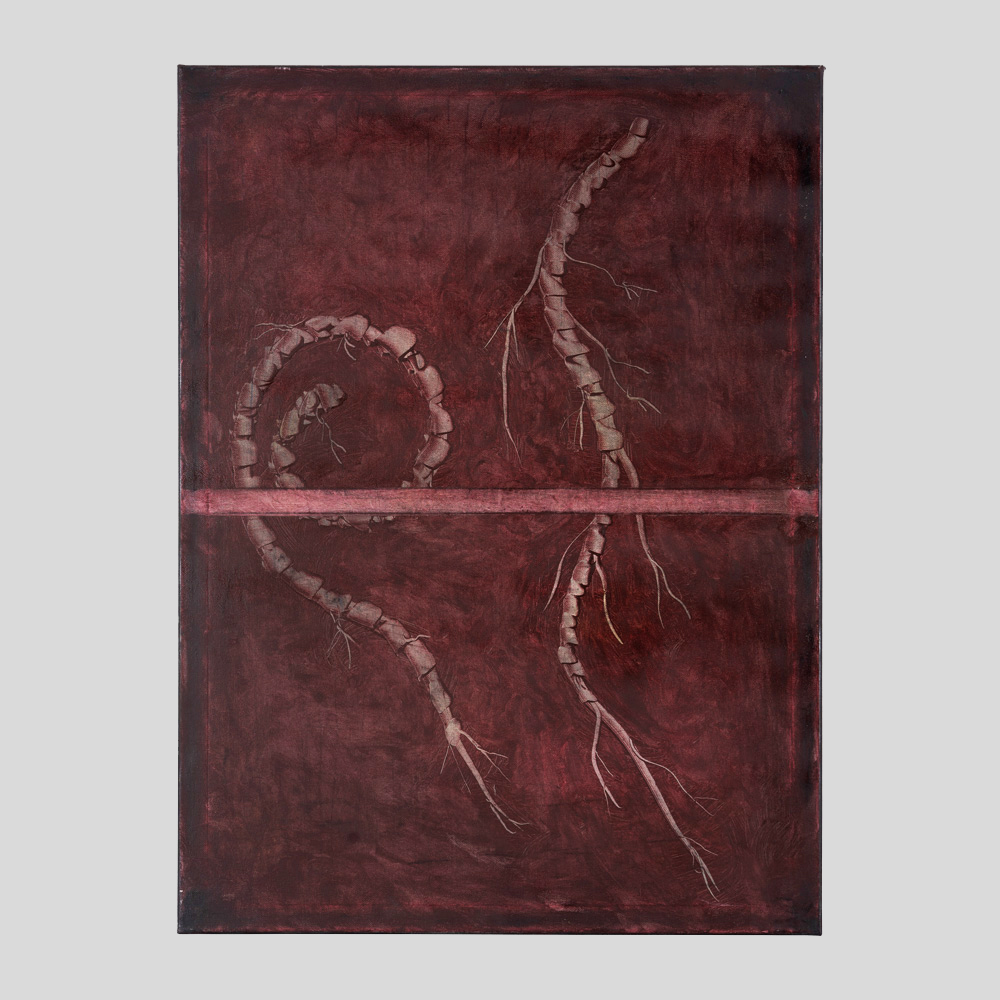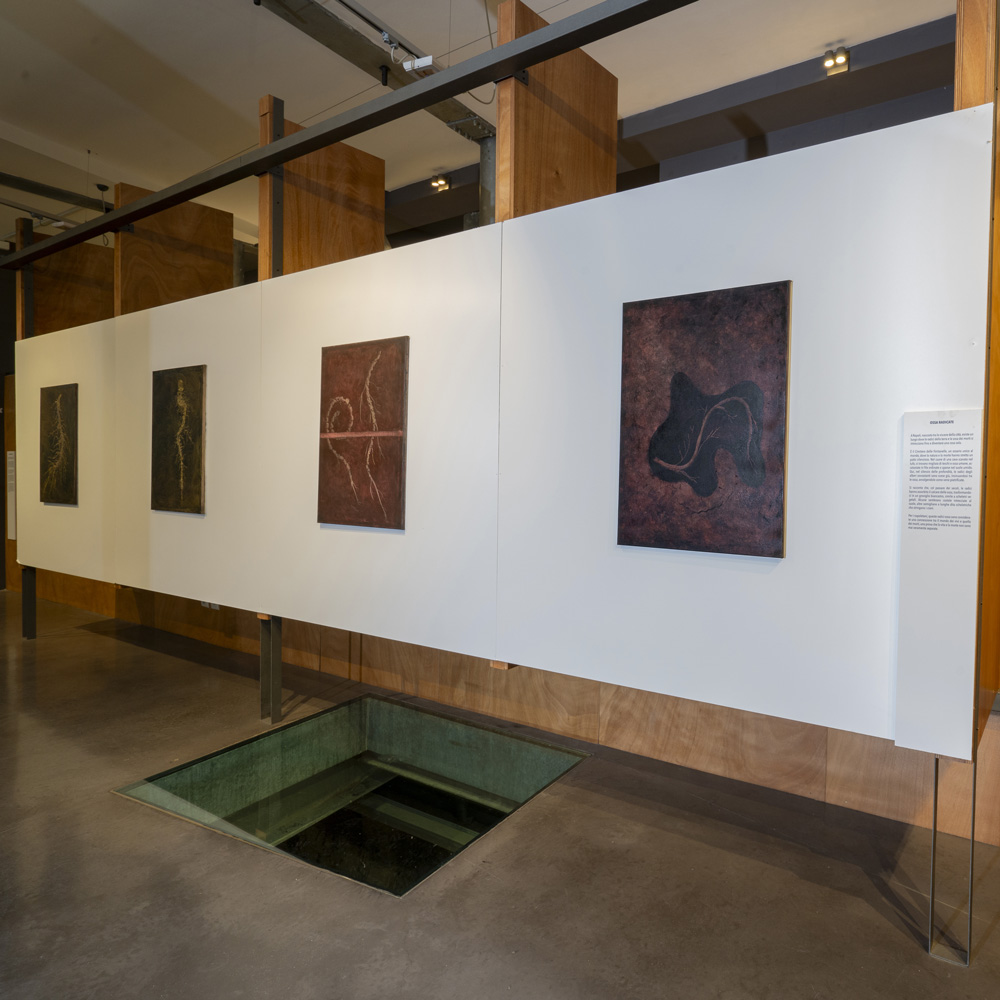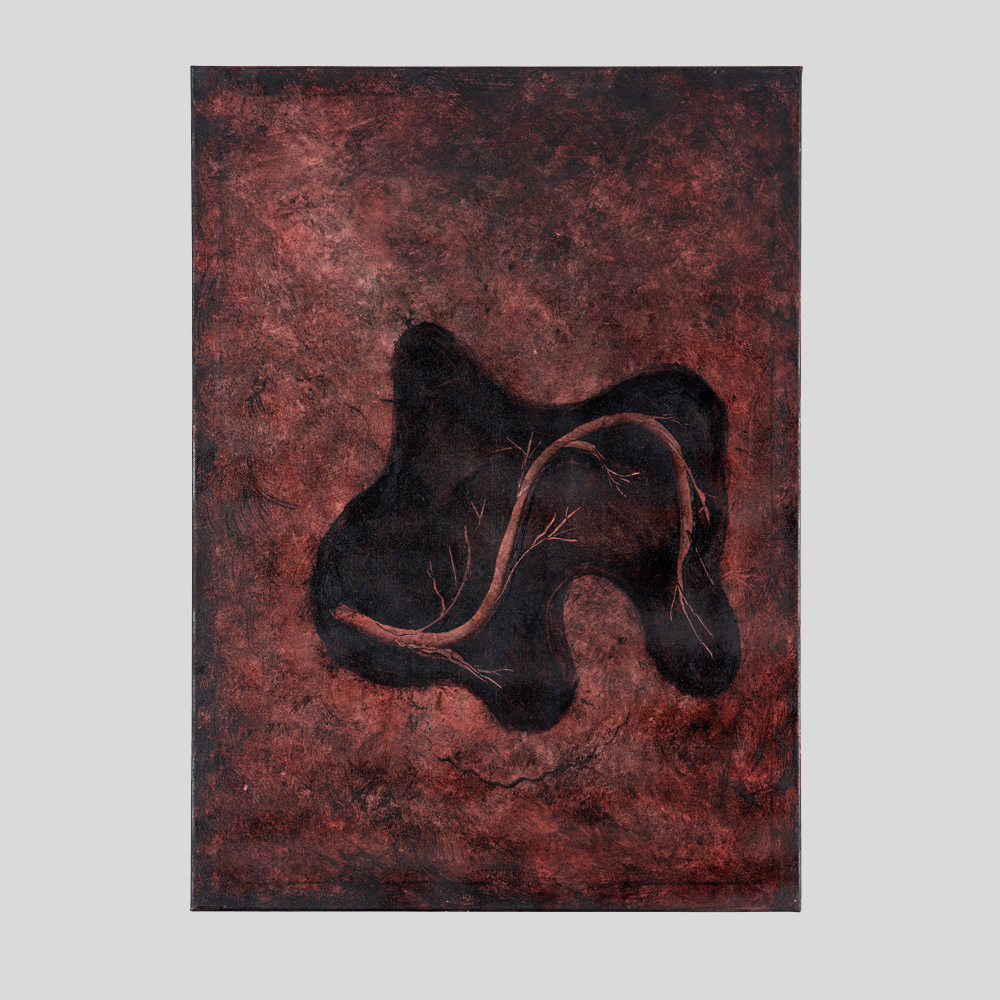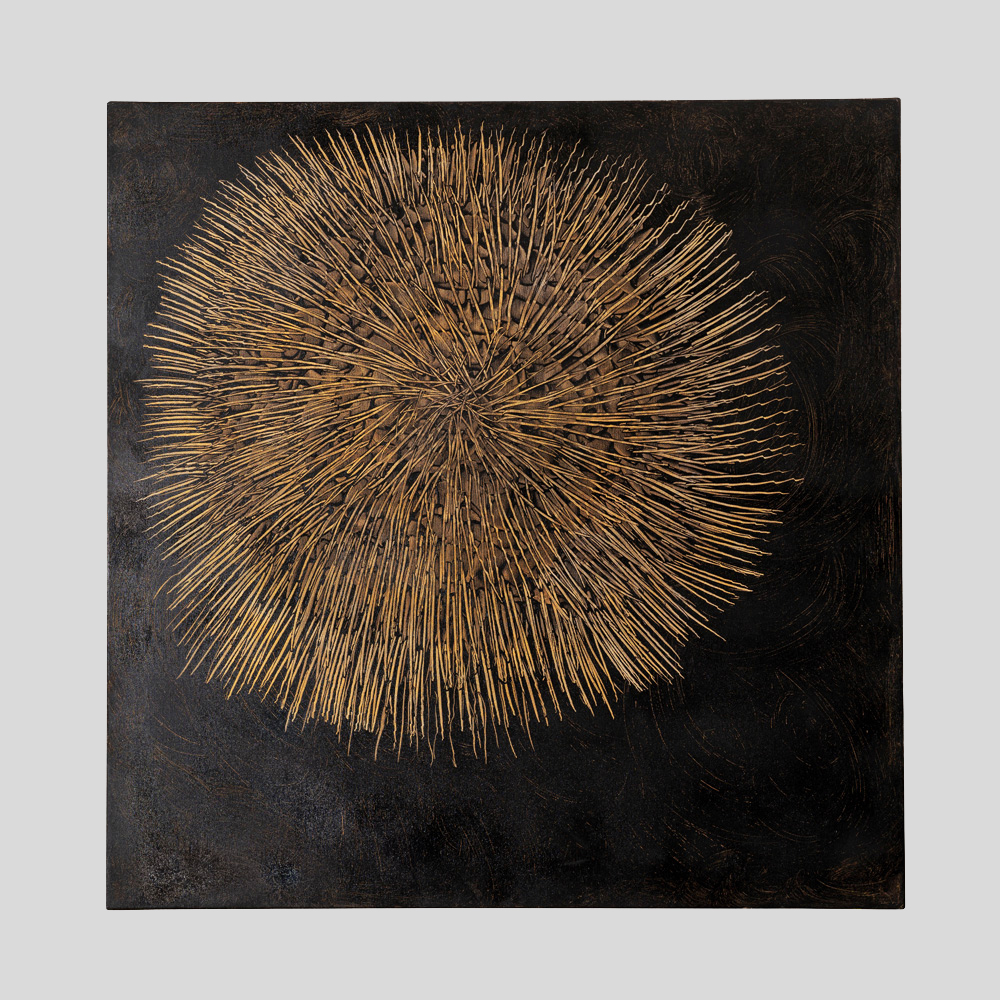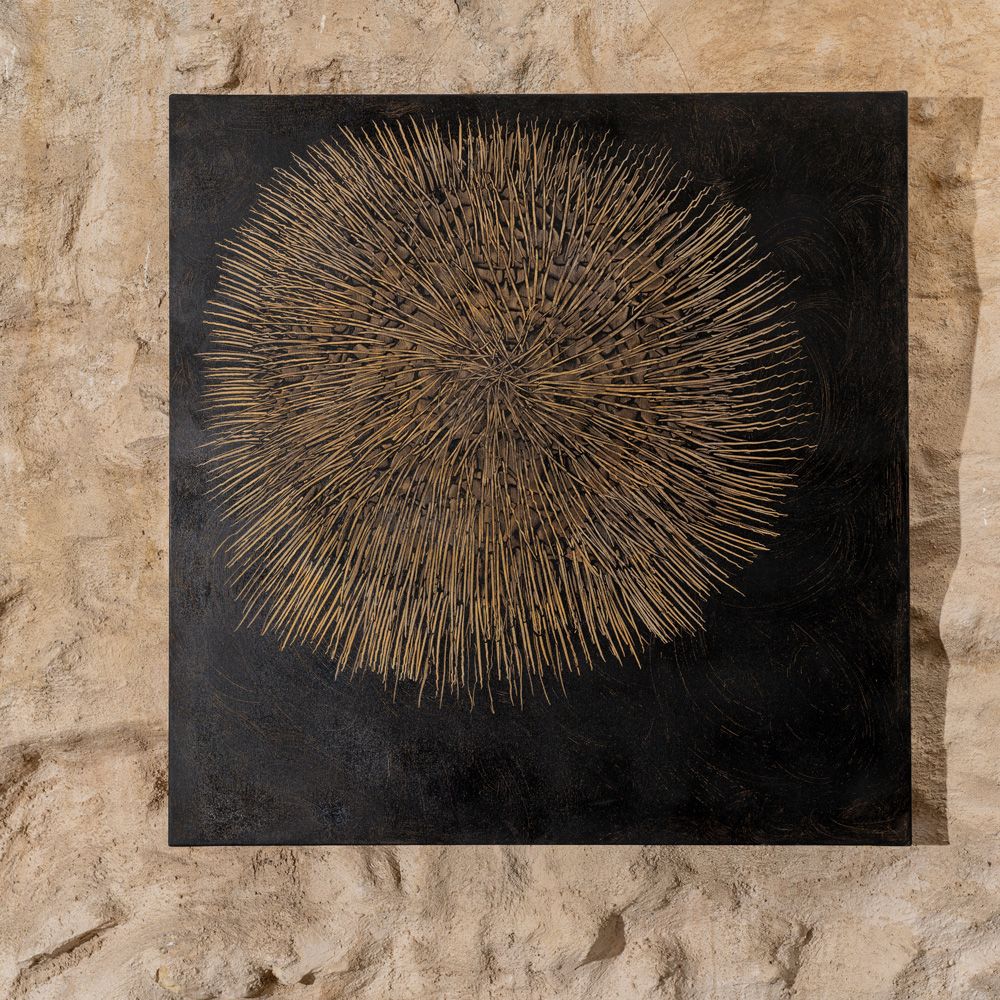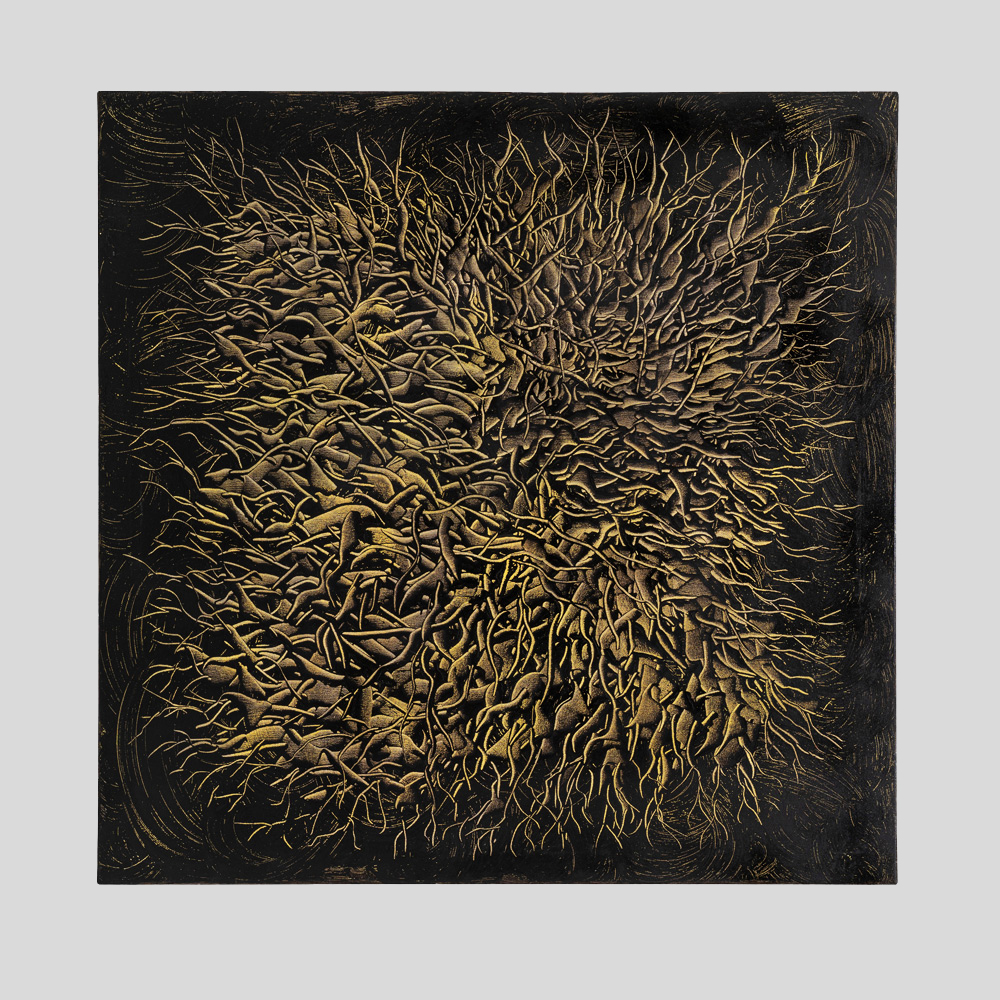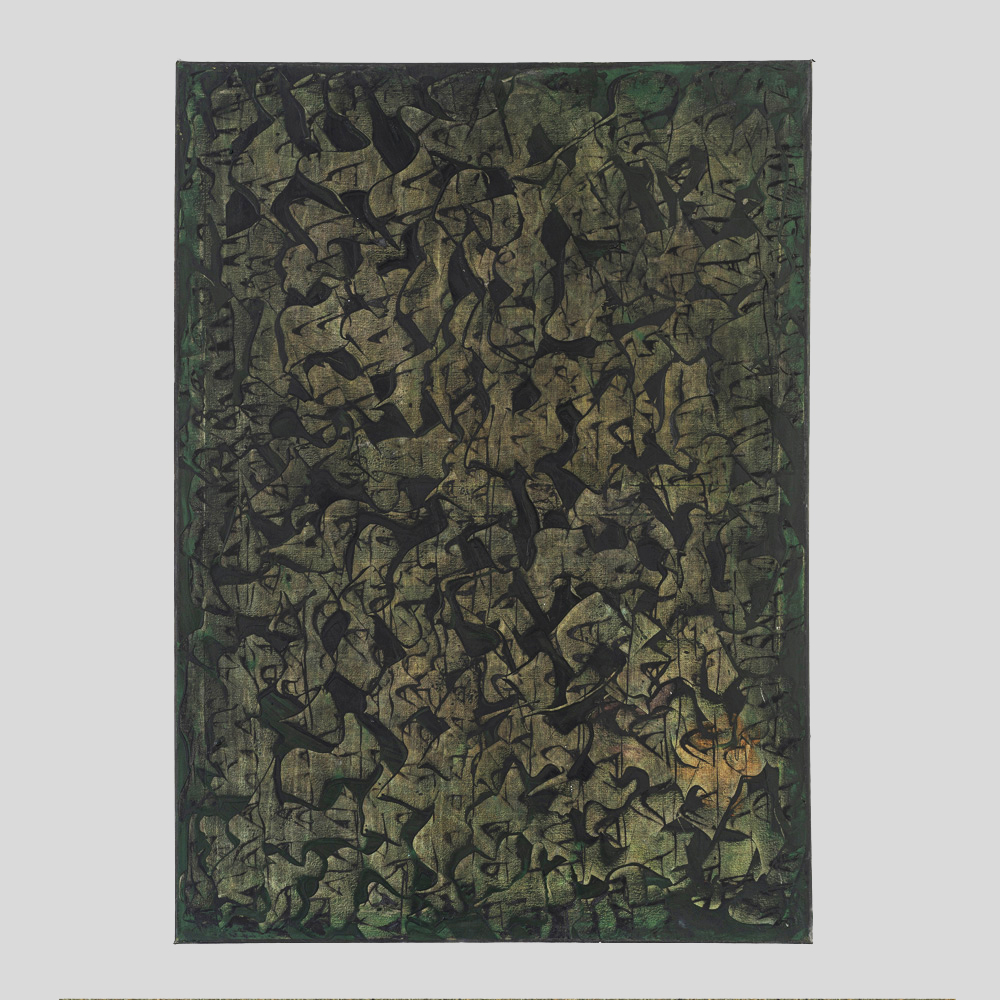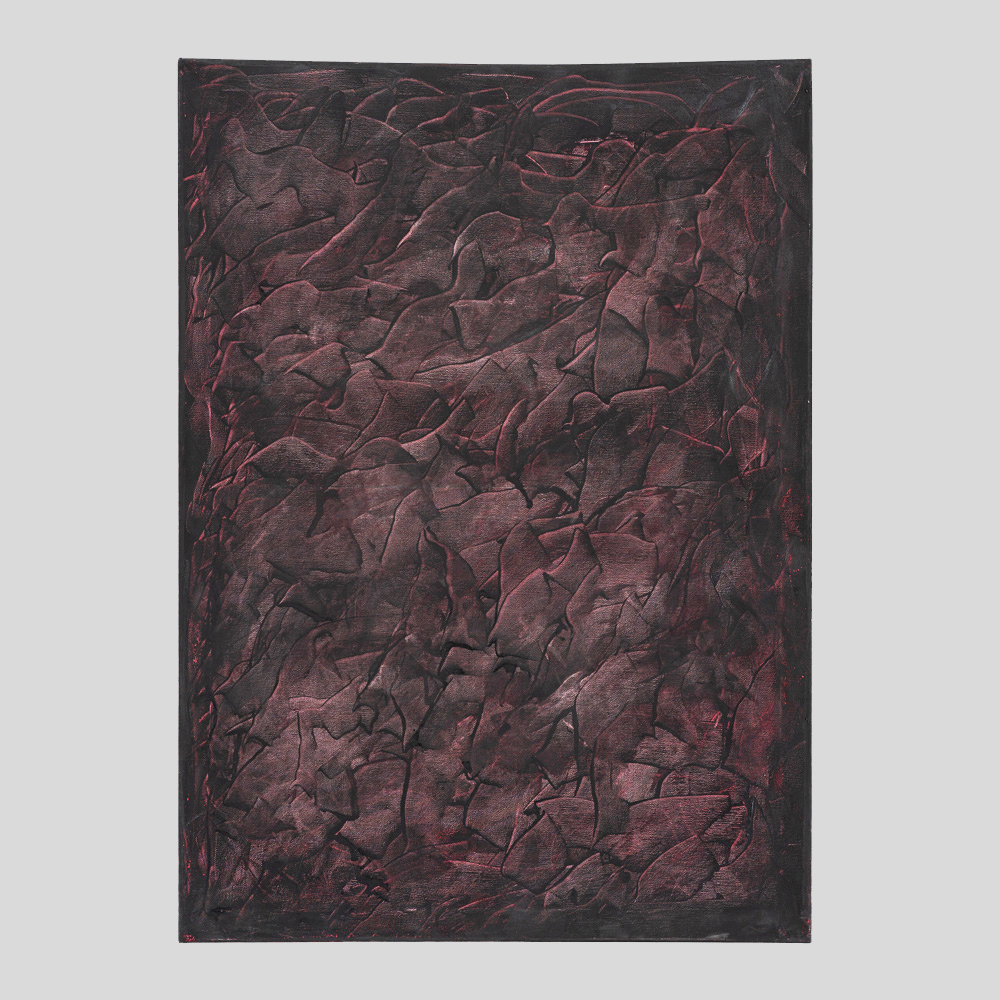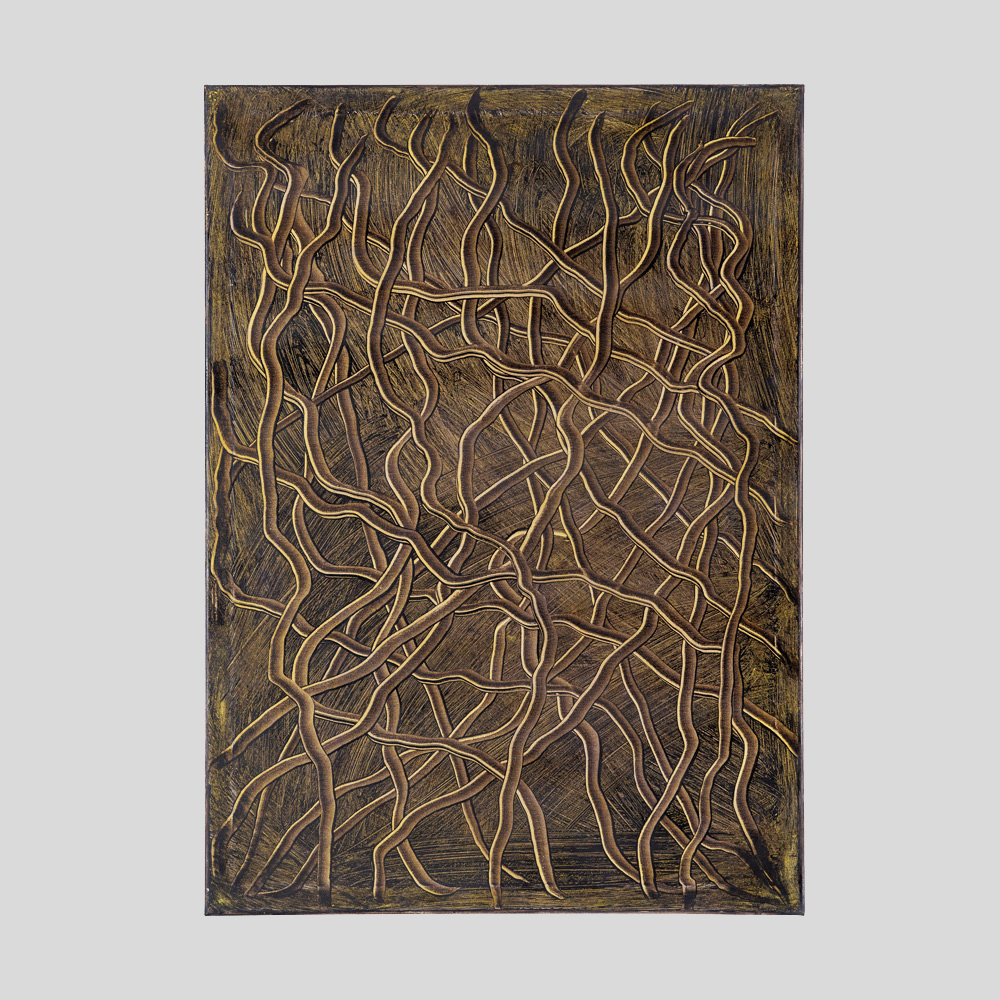
BIOTOMICA
Roberto Giacomucci
“The exhibition Biotomica explores the resilience of nature—its capacity to resist, adapt, and regenerate—interpreting it not only as a biological phenomenon but also as an ontological principle. Giacomucci selects a series of stories drawn from the natural world, not only for their symbolic value but because they bear witness to an invisible struggle, one often ignored by humankind. The artist engages with plant memory as if it were his own, seeking in painterly matter a way to give voice to stories that speak of resistance, loss, and rebirth.
The title Biotomica encapsulates this tension between destruction and regeneration, between sudden violence and slow reconstruction. It merges the concept of bios, life, with that of the atom—an energy that can be both transformative and devastating. The term itself contains a paradox: the idea of nature as exploded, fragmented, yet still capable of recomposing itself, of reemerging with renewed strength. This exhibition project stems from the artist’s deep sensitivity to environmental themes. What Giacomucci has developed could be described as an osmotic relationship with nature—total immersion, even identification. The works that give life to this exhibition, in my view, reflect a (successful) attempt to recreate nature’s germinative aspects, culminating in fusion with it. The palette chosen by the artist emphasizes earthy tones—greens, browns, yellows—typical of the natural world. Colors are not used to define, but to evoke: they evoke the dust of burnt trees, the damp soil guarding ancient seeds, the volcanic rock where the first plants take root. The dominant black is not an absence, but a depth, a subterranean dimension in which everything is potentially waiting to reemerge.
From a formal perspective, these paintings stand out sharply from the background, almost like engravings. This impression is due to the particular pictorial technique used by Giacomucci, who paints in levare, or in tollera (to take away), as sculptural practice was once defined. As a result, these works assume a minimal, essential quality. This method of “subtractive” painting should not be understood merely as a stylistic choice, but as an act of excavation—a search within matter to bring to light what is already there, hidden. Giacomucci does not construct images; he frees them, allowing them to emerge from the dense black of his backgrounds, as if bringing a buried memory back to the surface. This process is directly linked to the meaning of his works: it is not about representing nature, but about revealing it in its deepest essence, as an organism struggling to make space for itself in the world. At the same time, these works—born from extensive experimentation with materials, supports, and colors—highlight the modus operandi of a research-based artist, always attentive to finding the most suitable material to express his vision and thought.
This exhibition is particularly relevant today, in a time when human and natural temporality seem to have entered into conflict. Humanity destroys with violence and speed, while nature regenerates slowly, following rhythms often imperceptible to us. Biotomica is a warning—an eruption of green reemerging where the ground has been wounded. The effect on the viewer is one of immersion in a different landscape, where the boundary between matter and time becomes fluid. The incised surfaces of the canvases evoke tree bark, the skin of the earth, the marks left by the elements on rock. Deep black becomes a space of possibility, while the emerging light bears witness to a silent resistance. Each work invites us to pause, to observe, to sense the tension between permanence and disappearance, between scars and rebirth.”
Alberto Dambruoso
THE GUARDIAN OF THE DESERT
The Tree of Ténéré (Acacia tortilis subsp. raddiana) was an extraordinary tree located in the heart of the Ténéré Desert in Niger. Long considered the most isolated tree in the world, it was the last survivor of an ancient group of plants that had once thrived when the region was less arid. Despite the extreme conditions of the Sahara, the acacia managed to survive thanks to its deep roots, which reached a water table located between 33 and 36 meters underground.
This tree was about 300 years old at the time of its disappearance in 1973. Its solitary presence in the middle of nowhere made it a symbol of nature’s resilience and adaptability.
The Tree of Ténéré was accidentally knocked down by a Libyan truck driver in 1973, bringing its centuries-old existence to an end.
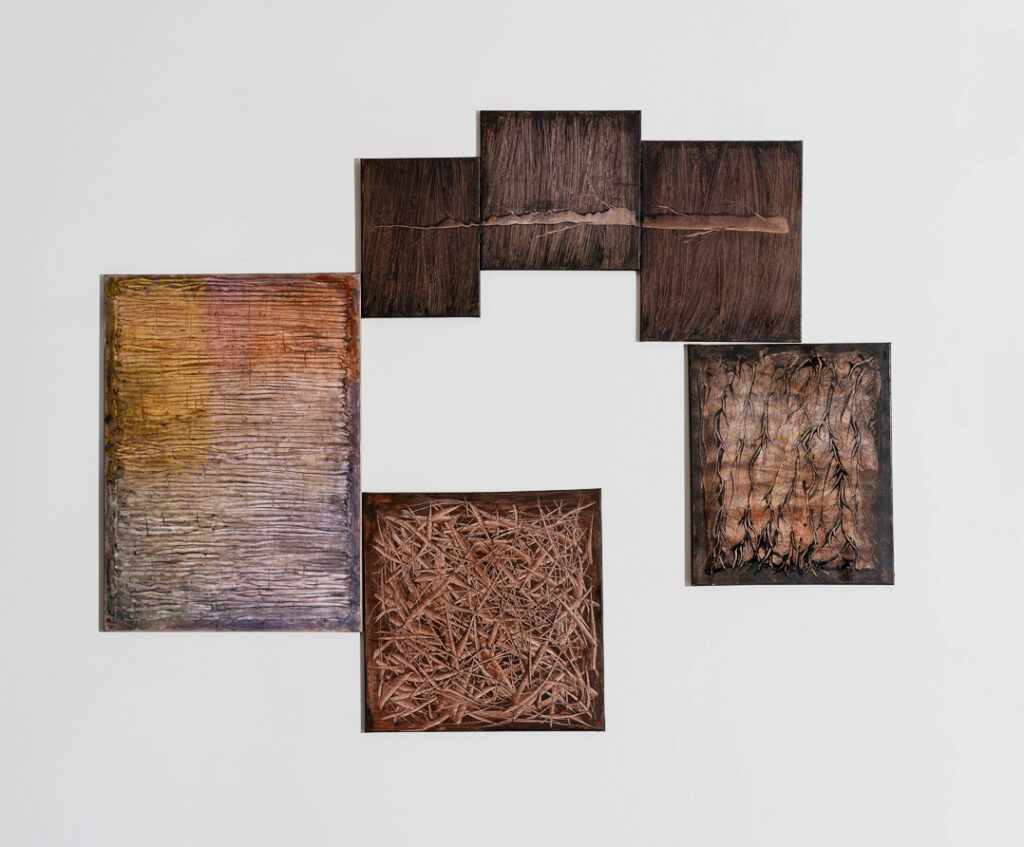
BAMBOO 45
During World War II, Japan faced intense aerial bombardment by Allied forces, which caused widespread devastation in major cities.
To protect the civilian population, numerous types of air raid shelters were built. In particular, in rural and outlying areas where resources were limited, bamboo was used to construct protective structures. Bamboo canes, arranged in an interwoven pattern, formed a kind of framework that provided stability to the structure. In addition to shelters, bamboo was also used to build protective barriers around homes and public buildings. These barriers were designed to absorb the impact of explosions and flying debris caused by the bombings. Furthermore, bamboo was employed to create camouflage covers—structures that mimicked natural vegetation in order to confuse enemy reconnaissance aircraft.
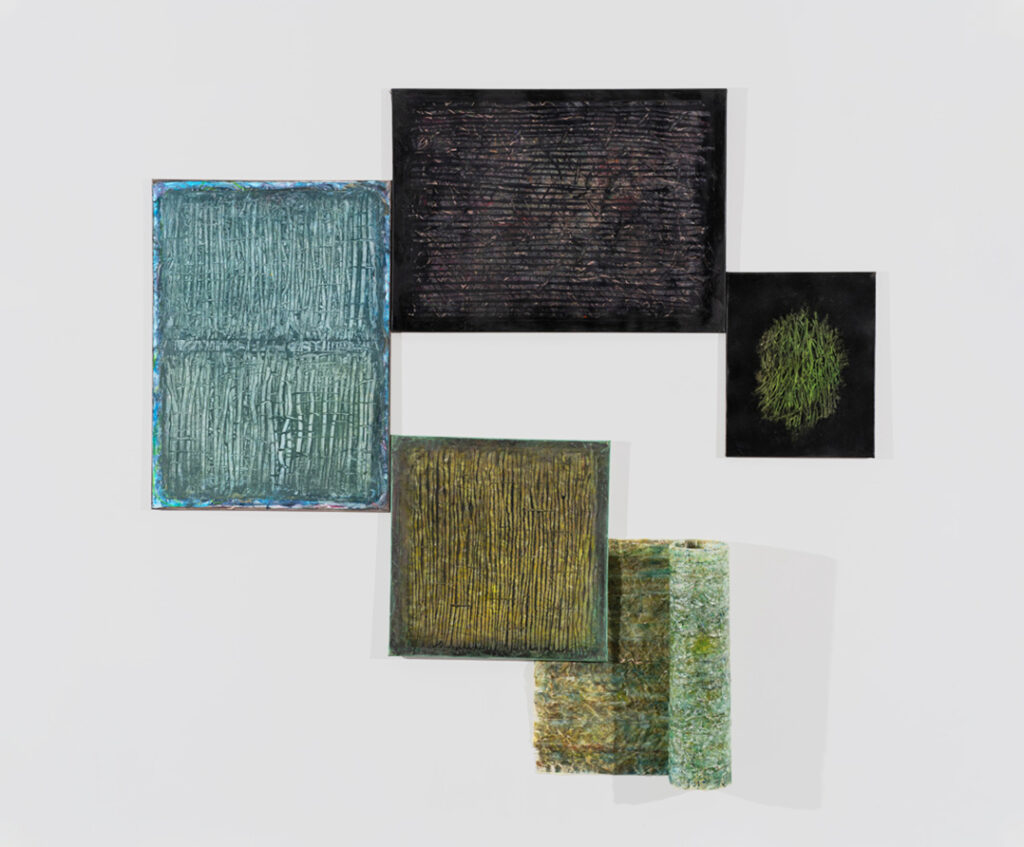
THE FIRST GARDEN ON THE MOON
In January 2019, the Chinese Chang’e-4 spacecraft became the first mission to successfully sprout a plant on the Moon. Inside a mini-biosphere sealed aboard the lander, cotton seeds (Gossypium) began to germinate after landing on the far side of our satellite. This mini-biosphere, 18 cm tall and weighing 3 kg, contained not only cotton seeds but also potato, rapeseed, and common Arabidopsis (Arabidopsis thaliana) seeds, as well as yeast and fruit fly eggs. The goal of the experiment was to test the possibility of growing plants in a lunar environment, characterized by low gravity, high radiation, and extreme temperature fluctuations. The box containing the seeds was not heated, and during the lunar night, temperatures can drop to as low as -173°C. As a result, the sprout died shortly after germination. Despite its brief duration, this experiment marks a significant step towards the possibility of growing plants in extraterrestrial environments, an essential component for future long-term space missions and the eventual colonization of other celestial bodies
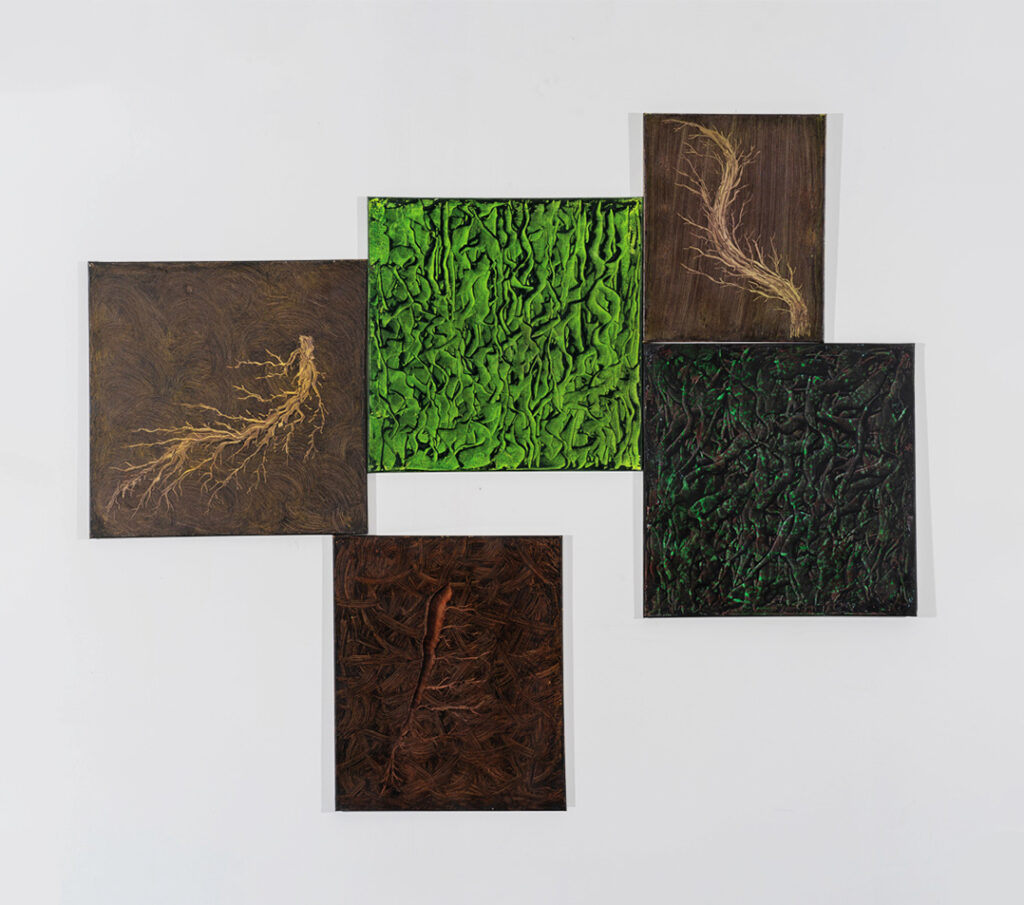
A SINGLE BREATH
Pando is an extraordinary plant organism located in Utah, USA. It is a clonal colony of Populus tremuloides, commonly known as quaking aspens, all sharing one vast root system. This organism covers an area of approximately 43 hectares and is estimated to weigh around 6,000 tons, making it one of the heaviest living beings on Earth.
Pando serves as a striking example of the remarkable ability of plants to form complex and resilient organisms through cooperative strategies. Despite the apparent individuality of each tree, they are interconnected at the root level, functioning as a single superorganism. This clonal structure allows Pando to survive for thousands of years, with its age estimated to be between 80,000 and one million years, demonstrating unparalleled longevity in the plant kingdom.
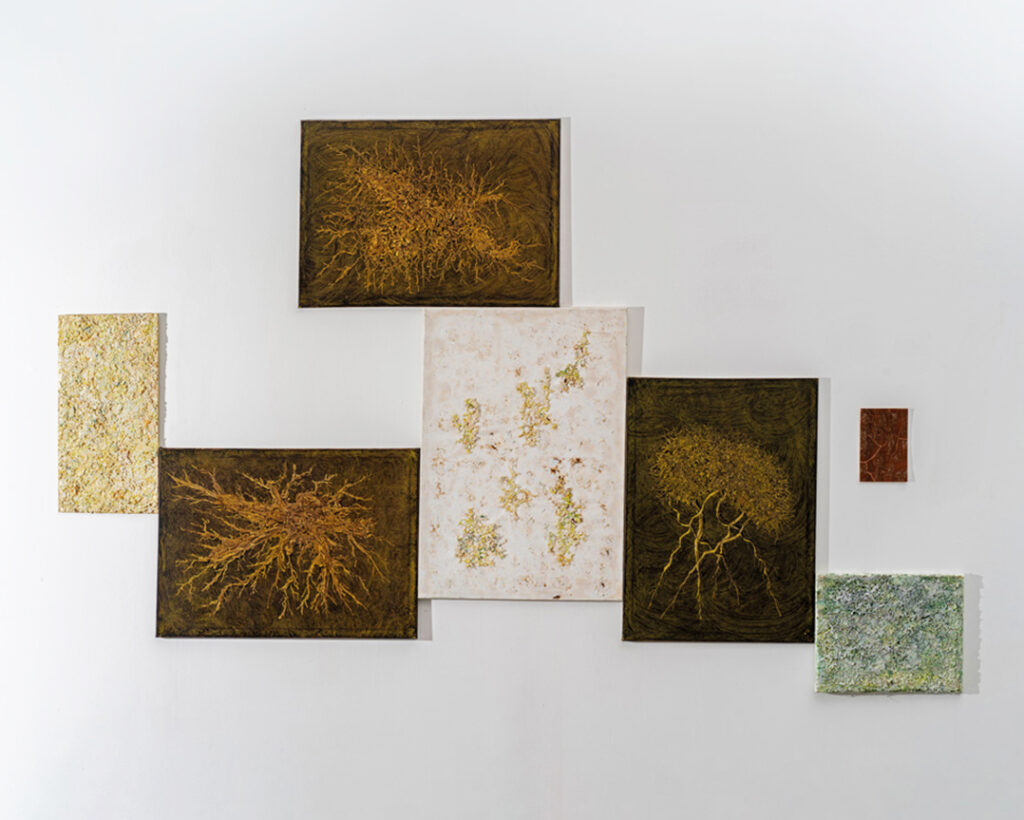
BORN FROM FIRE
The island of Surtsey emerged in 1963 following a volcanic eruption off the coast of Iceland. From the very first years, scientists observed how plants began to colonize this new territory. At the end of the eruption, the island reached a maximum area of 2.7 km². Since then, erosion caused by wind and waves has gradually reduced its size. By 2012, the island measured 1.3 km², with a maximum elevation of 155 meters above sea level. The first plant species arrived through various means: wind carried lightweight seeds, marine currents brought floating seeds, and migratory birds introduced seeds through their droppings or by transporting them on their feathers.
By 2008, 45 years after the island’s formation, 69 plant species had been recorded, of which 30 were well-established. This process of colonization provides valuable insights into how plants manage to spread and adapt to new environments, even under initially harsh conditions.
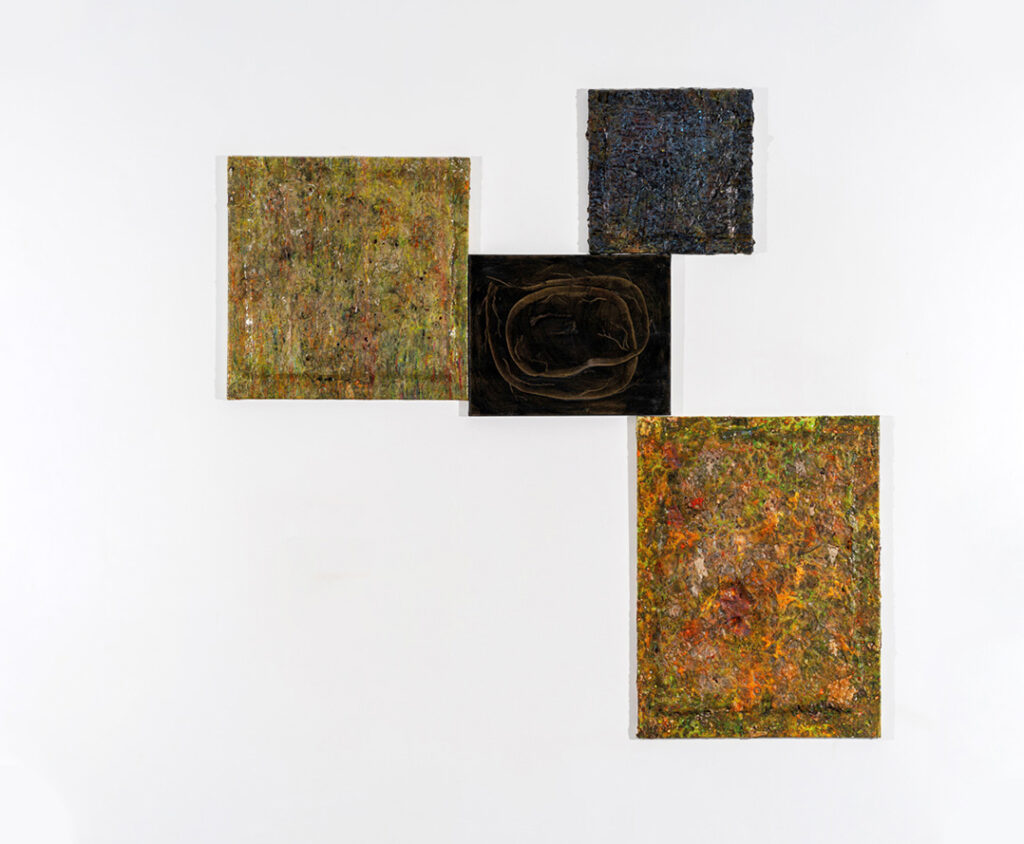
THE GUARDIANS OF MEMORY
Hibakujumoku is the Japanese term for the trees that survived the atomic bombings of Hiroshima and Nagasaki in 1945. These trees, despite being exposed to temperatures exceeding 6,000 degrees Celsius and intense radiation, managed to regenerate and continue to live to this day, symbolizing resilience and hope for the Japanese people.
These trees have become objects of respect and reverence for local residents, who often stop to pay tribute or interact with them. Each tree is marked with a yellow plaque indicating its species and the distance from the point of the atomic explosion. One of the most significant examples is a weeping willow (Salix babylonica) located about 370 meters from the explosion site. Despite the total devastation of the surrounding area, this tree has managed to regenerate from its roots and continues to grow lush and strong. The resilience of the Hibakujumoku demonstrates how plant life can survive and thrive even under extremely adverse conditions.
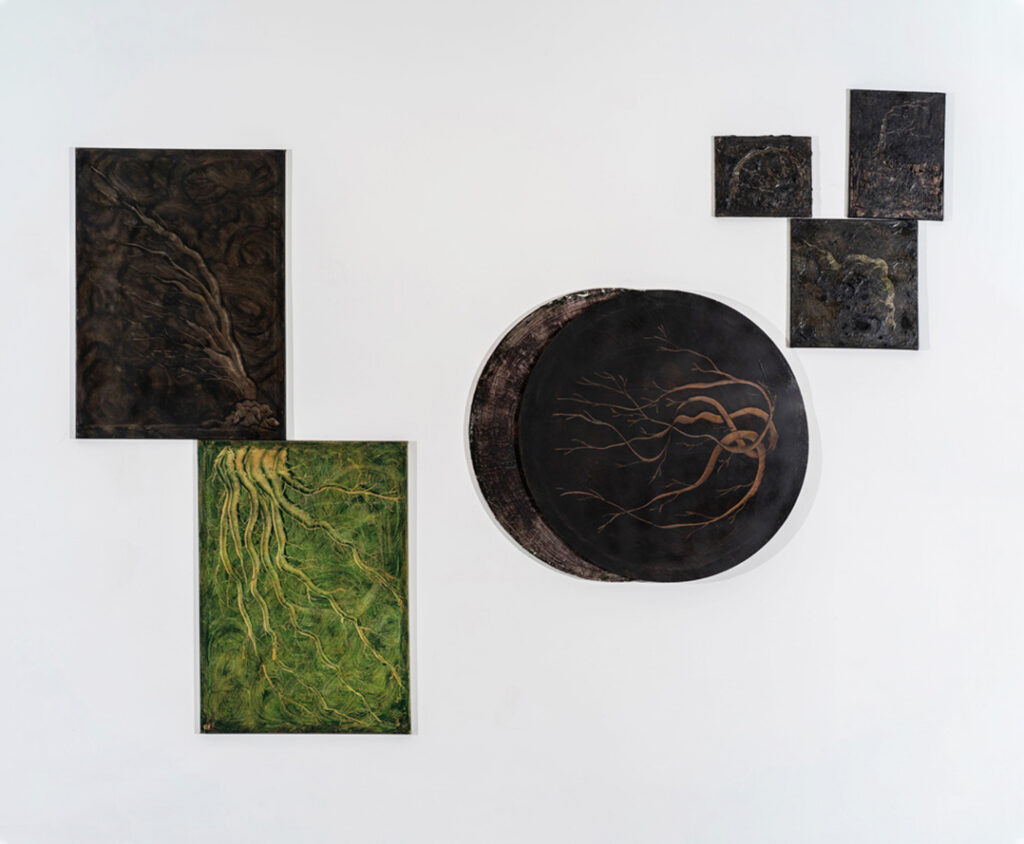
THE SLEEPING ROOTS
On June 30, 1908, a colossal explosion tore through the sky over Siberia, in the remote Tunguska region. A shockwave swept away over 80 million trees across an area of more than 2,000 km². Scientists believed it was caused by a meteorite or asteroid exploding in the air, but the mystery remains.
After the disaster, the Tunguska forest appeared dead, reduced to a burnt landscape of fallen trunks and ash. No sign of life. No hope of recovery. Yet, underground, the roots had not surrendered. For decades, unnoticed, the dormant roots began to push out new shoots. Slowly, the forest began to grow again.
Today, the affected area is green once more, with trees recolonizing the devastated soil. The roots of Tunguska had only been waiting, to awaken when the world was ready.
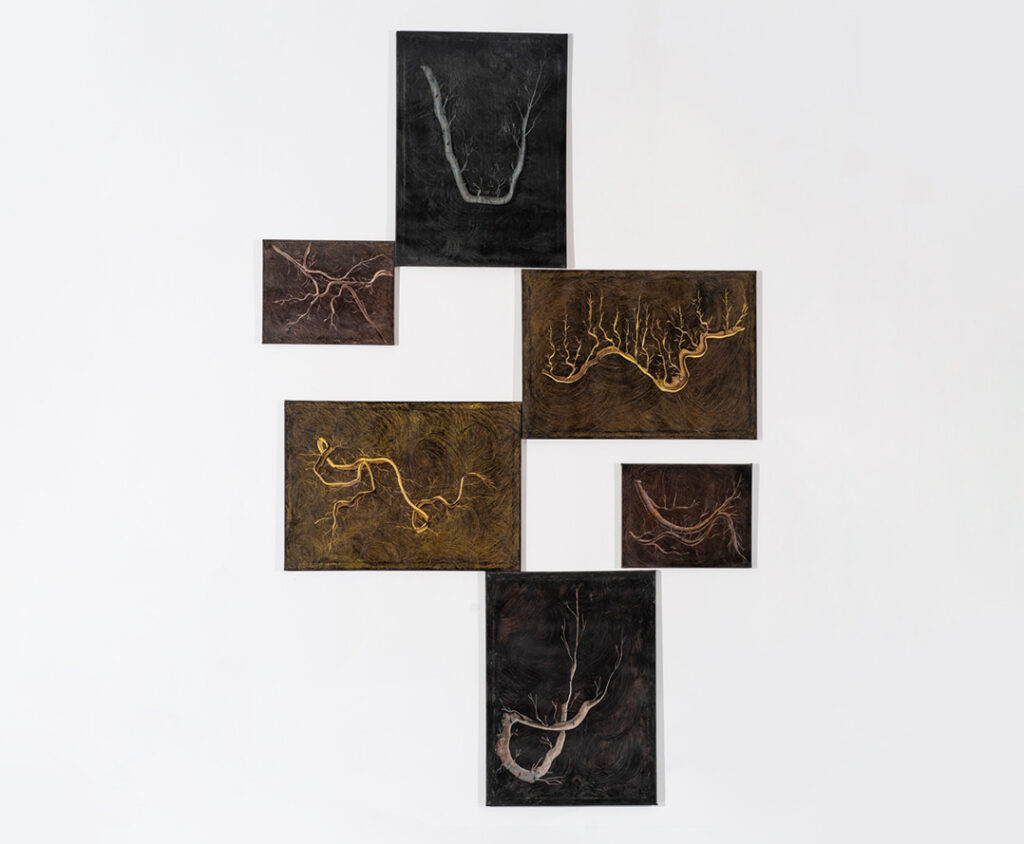
TIME TRAVELERS
The seeds of Masada and Qumran are examples of extraordinary longevity and the ability to germinate after millennia. In 1963, during archaeological excavations at Masada in Israel, date palm seeds (Phoenix dactylifera) dating back about 2,000 years were discovered. After being preserved for decades, some of these seeds were successfully planted in 2005, giving rise to a plant nicknamed “Methuselah.” Similarly, near Qumran, the famous site of the Dead Sea Scrolls discovery, ancient seeds were found that displayed surprising vitality.
Date palms are dioecious plants, meaning there are separate male and female specimens. One of the Masada specimens, named “Methuselah,” grew into a male palm. Later, additional seeds from Qumran were germinated, leading to the birth of a female palm, “Hannah.” This allowed for controlled pollination between male and female specimens, contributing to the reintroduction of this ancient variety of date palm.
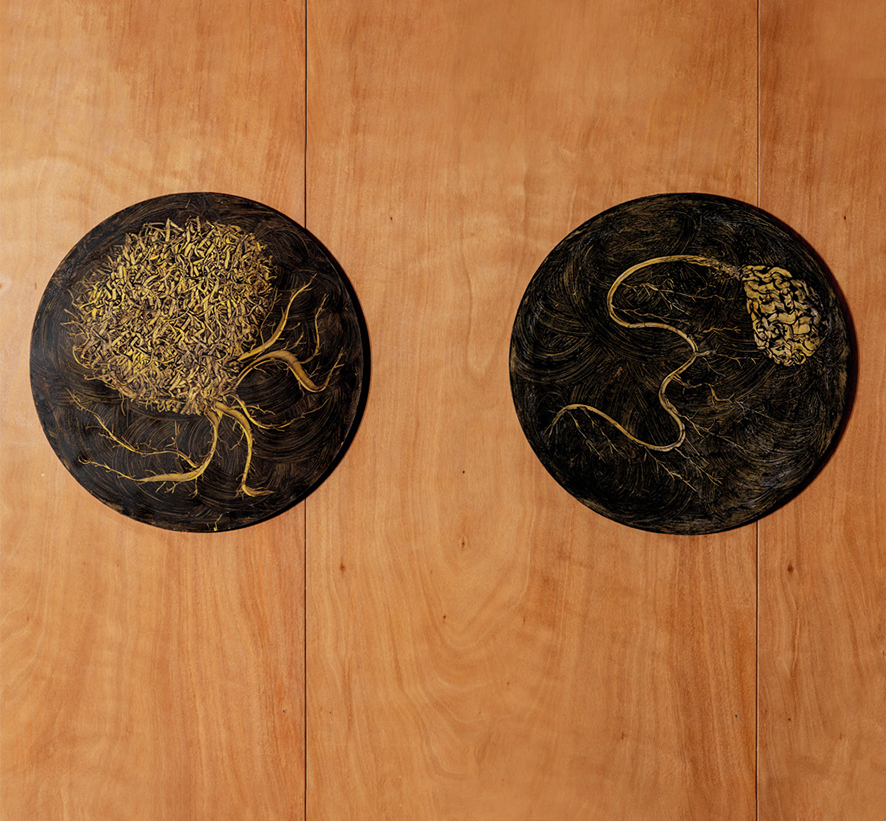
ROOTED BONES
In Naples, hidden beneath the city’s depths, there is a place where the roots of the earth and the bones of the dead intertwine to become one.
It is the Cemetery of the Fontanelle, a unique ossuary in the world, where nature and death have forged a silent pact.
In the heart of a quarry carved into tuff, thousands of skulls and human bones lie, stacked in orderly rows or scattered on the damp ground. Here, in the silence of the depths, the roots of the overlying trees have descended, weaving between the bones, wrapping them like petrified veins.
It is said that, over the centuries, the roots absorbed the limestone from the bones, transforming into a whitish tangle, resembling vegetal skeletons. Some look like ribs intertwined with the soil, others resemble long skeletal fingers clutching the skulls.
For Neapolitans, these root-bones are considered a connection between the world of the living and that of the dead, proof that life and death are never truly separate.
